
WHAT’S ON GUIDE
Plan your autumn and Christmas events with our guide on page 59







Plan your autumn and Christmas events with our guide on page 59















Join us for a Halloween that ill go down in history ith our ghost tours and spook quests for all ages HAPPY
Join us for a Halloween that will go down in with our tours and spooky quests for all ages
























HAUNTED HISTORY AT THE CASTLE
Take a ghost tour of Bolsover Castle in Derbyshire
Celebrating the centenary of our paintings conservation studio H P P
ROMAN ENGLAND IN FIVE SITES
We reveal the best places to explore the story of Roman rule
Inside Stonehenge’s new exhibition on Japanese prehistory
THE ART OF CONSERVATION

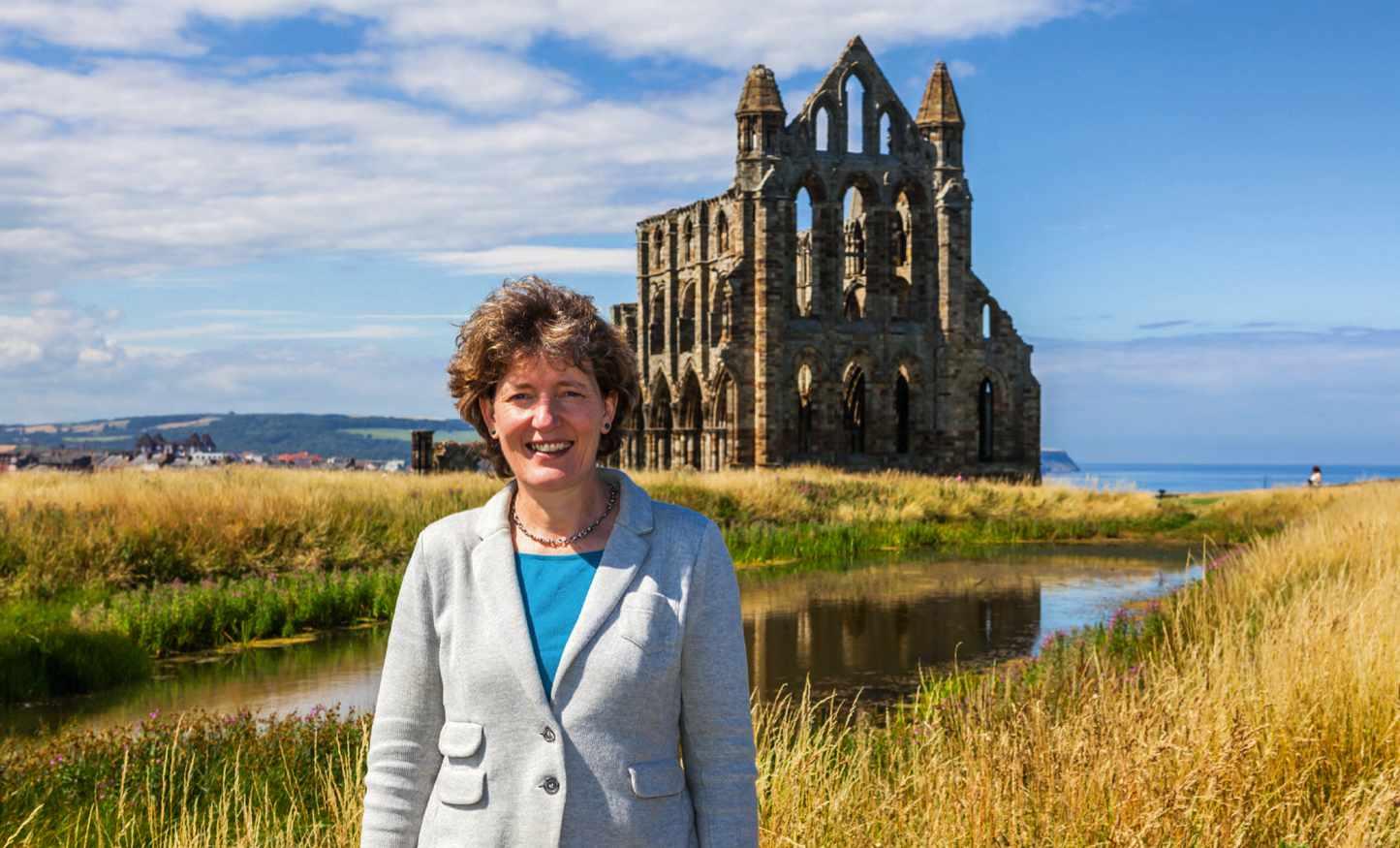
We need your help to tackle the impact of climate change on our coastal sites
he changing climate is creating challenges for all heritage sites, but none more so than our coastal sites, where rising sea levels and increasingly intense weather events threaten their very existence. That’s why we have launched a new appeal to conserve affected sites and build better sea defences (see page 18). We’re also launching our new Climate Action Plan setting out our pathway to becoming more environmentally sustainable
TGet in touch
W www.english-heritage.org.uk/members
E membersmagazine@ourmedia.co.uk
(for magazine queries only) or members@english-heritage.org.uk (for membership queries and changes of address)
T 0370 333 1181
PO Box 569, Swindon, SN2 2YP
For English Heritage
Louise Dando, Johanna Lovesey, Tom Dennis, Tony Dike, Tersia Boorer, Tom Moriarty, Richard Leatherdale
For Our Media
(see www.english-heritage.org. uk/sustainability). Elsewhere in this issue, you can find a preview of Stonehenge’s new exhibition, examining the parallels between prehistoric life here and in Japan (see page 20), and we explore five key sites that tell the story of life in Roman England (see page 44). Plus, we spend a spooky night at Bolsover Castle (page 28) and preview the season’s best events (page 59). Thank you, as ever, for your support.
Kate Mavor Chief Executive
Group editor Matt Havercroft
Group production editor Oliver Hurley
Senior art editor Steve Gotobed
Account director Esther Procee
Account manager Joanne Robinson
Director Julie Williams
Editorial director Dan Linstead
Design director Will Slater
Consultant editor Dave Musgrove
Advertising manager Jamie Bolton T 0117 300 8518
E jamie.bolton@ourmedia.co.uk
Contributors
Dominique Bouchard, Emily Parker, Dickon Whitewood, Matt Ford, Emine Saner, Helen Dorritt, Olivia Fryman, Andrew Roberts, Jo Caird, Howard Spencer
English Heritage Members’ Magazine is published four times a year, in March, May, July and October, on behalf of English Heritage by Our Media, Eagle House, Bristol, BS1 4ST T 0117 927 9009 W www.ourmedia.co.uk
Support us
English Heritage is a charity. Without the support of our Members and donors, our work would not be possible. To find out more about how you can help by making a donation or leaving a gift in your will, please visit www.english-heritage.org.uk/support-us or call the fundraising team on 020 7973 3797.
English Heritage cares for more than 400 historic monuments, buildings and places –from world-famous prehistoric sites to grand

Head of learning and interpretation
On page 13, Dominique explains how and why we’re exploring hidden history at our sites

Dr Olivia Fryman Curator of collections
On page 42, Olivia reveals the story of a distinctive dish at Ranger’s House in London

Dr Andrew Roberts Properties historian
On page 44, Andrew explores five sites that represent life in Roman England
medieval castles, and from Roman forts on the edges of the empire to Cold War bunkers. Through these we bring the Story of England to life for more than 10 million visitors each year.
Registered charity no. 1140351 (England) Registered company no. 07447221 (England) Product code: 200763

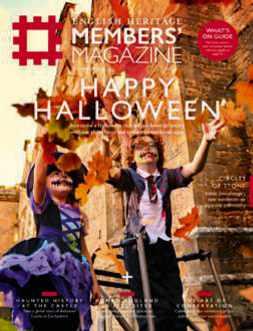
Cover image Young visitors enjoy a Halloween day out at Bolsover Castle in Derbyshire
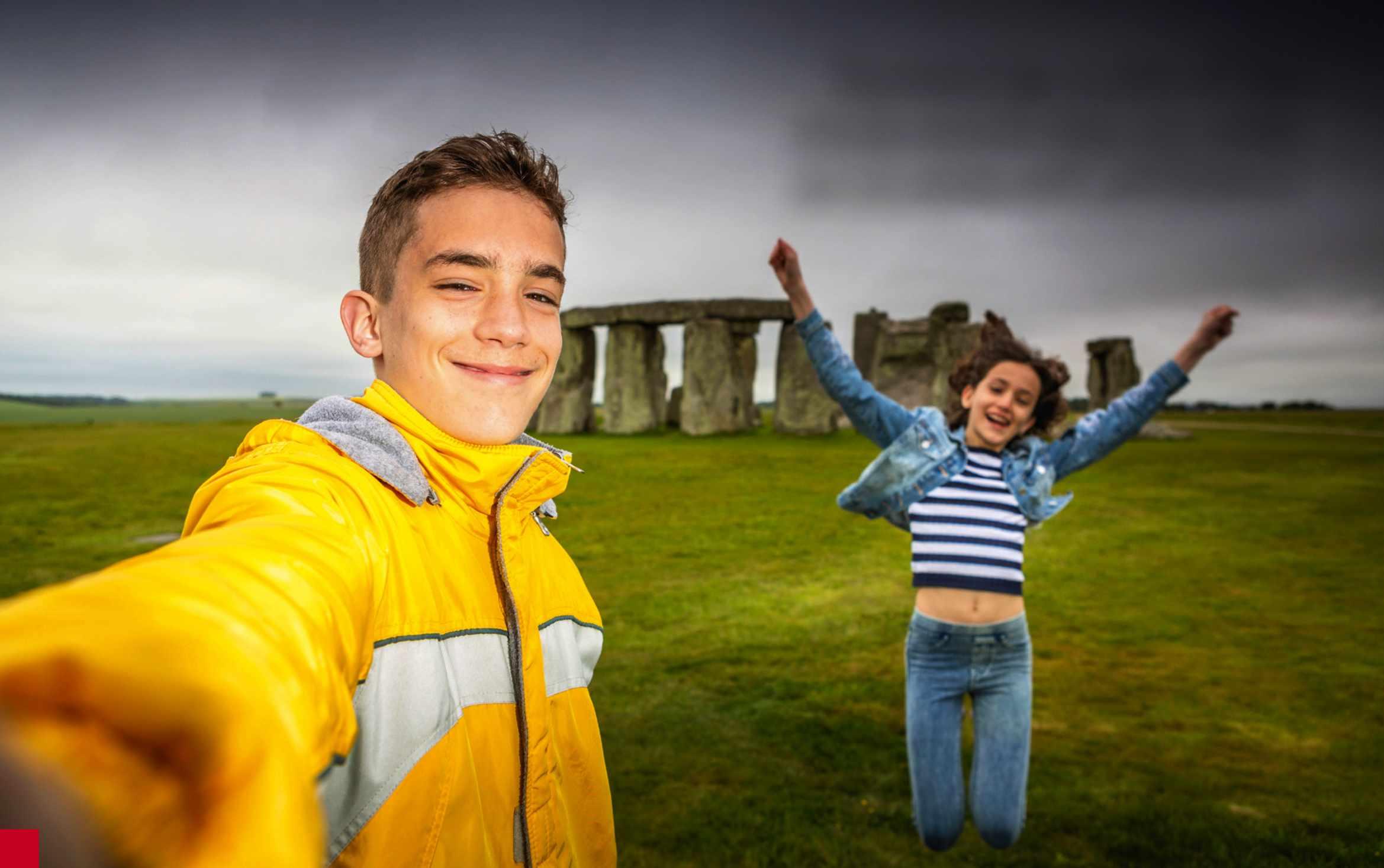
Discover
20 New this season
‘Circles of Stone’ exhibition
Discover some surprising similarities between Stonehenge and prehistoric Japan
28 Behind the scenes
Bolsover Castle ghost tour
Journalist Emine Saner braves an after-dark tour of our ‘most haunted’ site
‘Stonehenge is one of the places where kids can really get to grips with prehistory’
36
Great days out Time travel
We reveal the best places to learn about history at the start of a new school year
44
Stories of England
Roman Britain in five sites
Where to discover different aspects of life in Roman-occupied Britain
51
Expert care
Painting conservation
We look back at a century of fine art conservation in our paintings studio
66
Past lives
Howard Carter’s blue plaque
The ‘sad success’ of the Egyptologist who uncovered Tutankhamun’s tomb 100 years ago
instagram.com/englishheritage facebook.com/englishheritage twitter.com/englishheritage PO Box 569, Swindon, SN2 2YP membersmagazine@ourmedia.co.uk

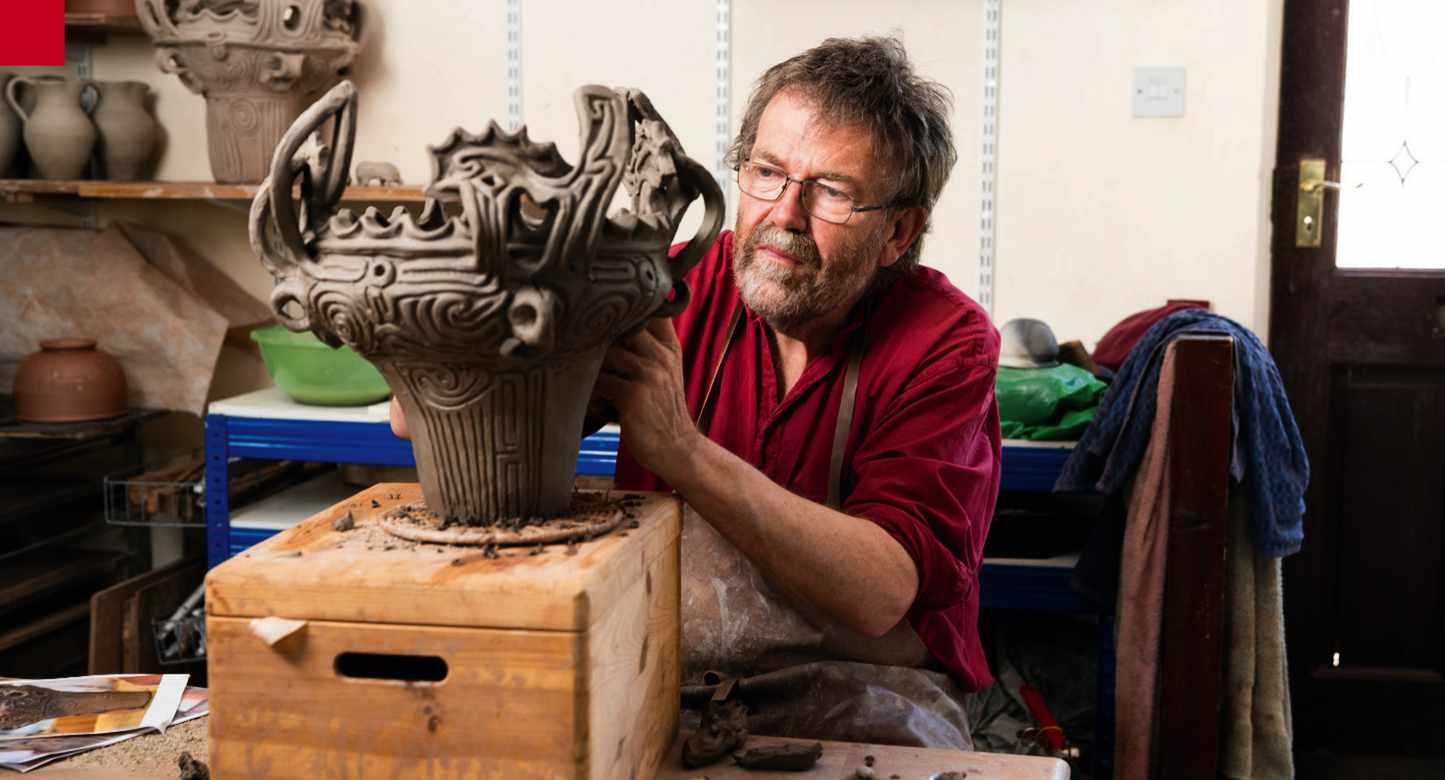
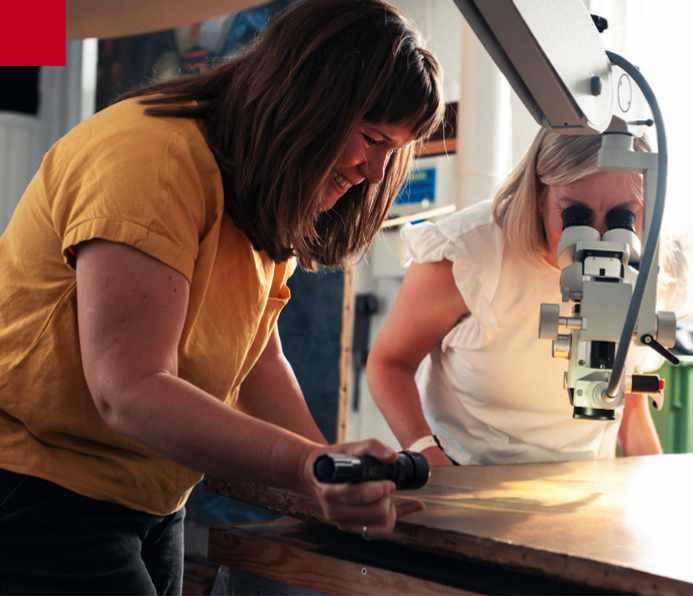

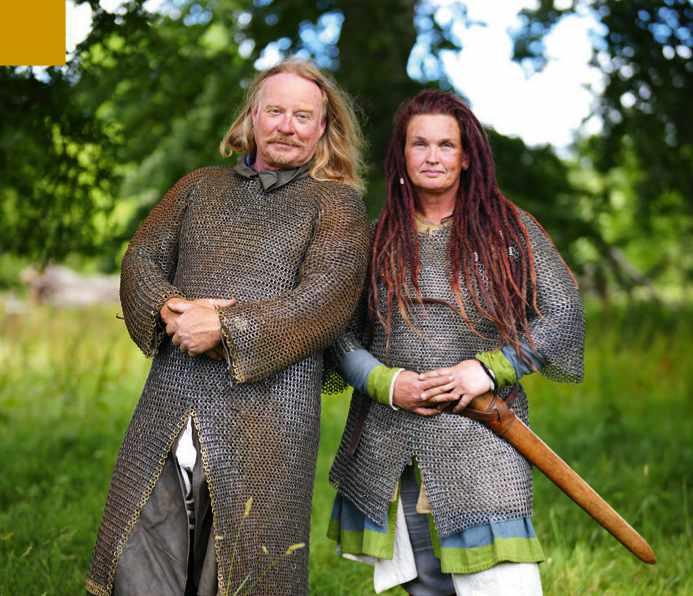



How we’re bringing England’s hidden history to life at our sites
Put your knowledge of our historic collections to the test in our quiz
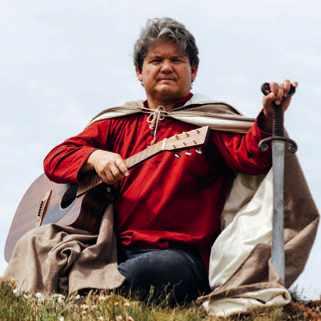





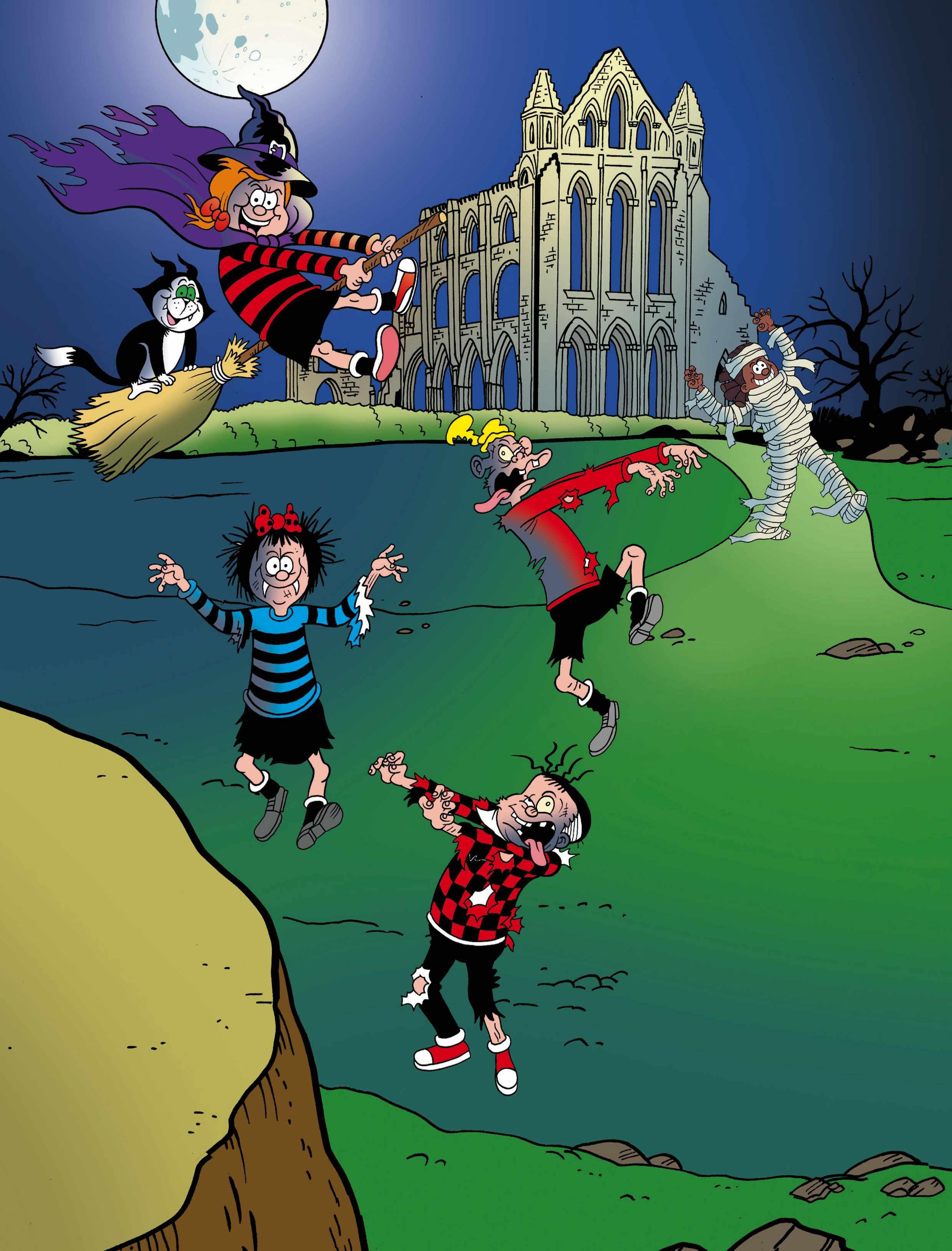
This October half-term, enjoy a ghoulishly good day out inspired by Dennis the Menace, Gnasher and Minnie the Minx.We’ve teamed up with all your favourite Beano characters to bring you Halloween quests with a twist! Kids will love trying to solve creepy clues before listening to spooky stories.The events are taking place at sites across the country, including Bolsover Castle in Derbyshire,Whitby Abbey in North Yorkshire, and Eltham Palace and Gardens in London. Best of all, they’re free for Members – something that even Dennis would surely have to be happy about. www.english-heritage.org.uk/halloween
News, views and inspiration to make the most of your membership

Be
Visitors to England’s most famous battlefield will be dazzled this winter at the site’s first ever Illuminated Abbey event. From 17 to 20 November, Battle Abbey in East Sussex will be bathed in dramatic illuminations – and a host of special audio and visual effects, plus dramatic performances. ‘We’re excited to invite visitors to experience the splendour of this atmospheric monastery in a whole new light,’ says events manager Diana Evans. ‘The abbey will be resplendent in light, sounds, performance and poetry.’ www.english-heritage.org.uk/battle
Visitors to Whitby Abbey in NorthYorkshire will also be able to enjoy Illuminated Abbey events from 21 to 31 October
Have you visited one of our sites recently? Whether you attended a Kids Rule! event or explored a fort on Hadrian’s Wall, we want to hear about your experience. Contact us on our social channels.

instagram.com/englishheritage facebook.com/englishheritage twitter.com/englishheritage Eagle House, Bristol, BS1 4ST membersmagazine@ourmedia.co.uk
Find our latest offers to make big savings at www.englishheritage.org.uk/ rewards
Gerard Lemos CMG has been announced as the next Chair of English Heritage. A former Chair of the British Council and an expert in social policy, Lemos – who takes up the post in January – has also been involved in renovating historic buildings throughout his career.
‘I am honoured at the prospect of chairing English Heritage,’ he says. ‘This collection is a national museum of England, with a site in or near to almost every community. It is a collection that should be cherished
and it is a collection that tells the story of this country. I want to help everyone feel part of England’s story.’
‘Our historic sites are often important physical landmarks within communities but we also want to better knit those sites into the lives of local people,’ says CEO Kate Mavor. ‘We’ve made big strides in this area, but Gerard’s insight will be invaluable as we make even stronger connections with surrounding communities.’ www.english-heritage.org.uk/ about-us

Following on from our previous lecture series on everything from castles to paintings, we’re delighted to bring you more online talks this winter. From the comfort of your own home, enjoy hearing from historians and experts as they discuss the stories of people who have built, conserved and called our sites home. The lectures are free for Members although booking will be required – keep an eye on your e-newsletters or go to this link for more details: www.english-heritage.org.uk/ members-lectures

Watch all of our previous lectures, on subjects that range from medieval castles to monastic treasures, and book your tickets for the new series of online talks. www.englishheritage.org.uk/ members-lectures
A new exhibition brings to life the diverse history of Launceston Castle in Cornwall. Visitors can learn about people from the castle’s past, including George Fox, the founder of the Quakers, who was imprisoned here. Objects now on display include a whale vertebra. www.english-heritage.org.uk/launceston

As a Member you get free entry for up to six children within the family group
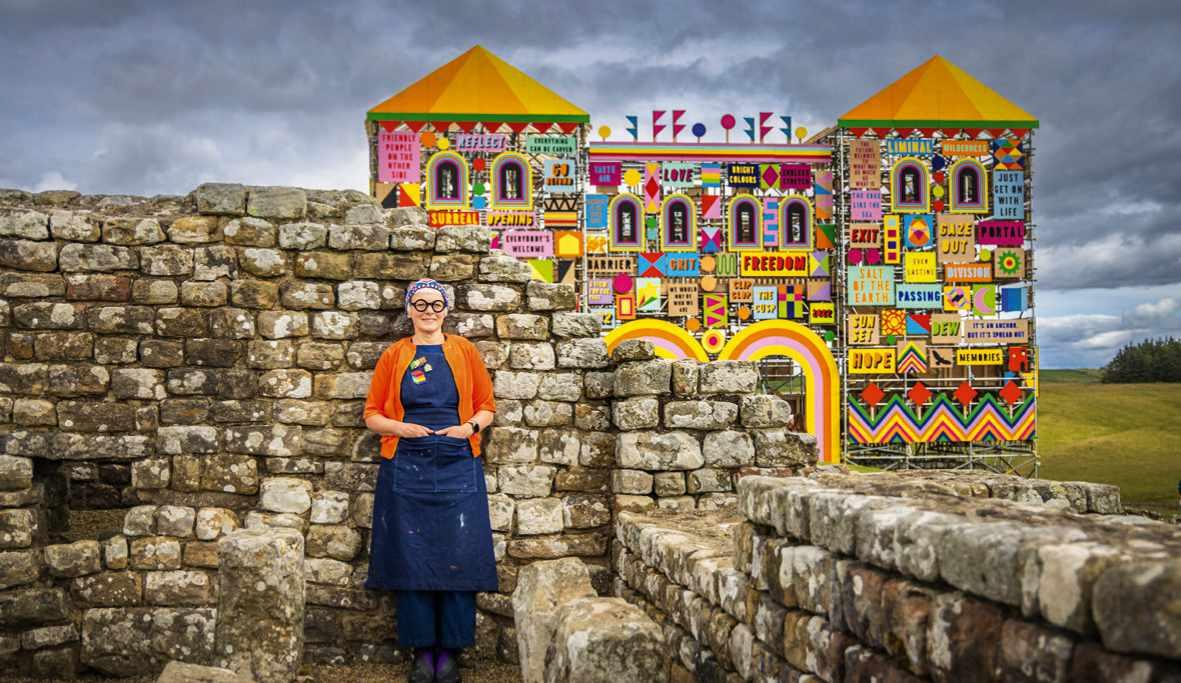
s part of the 1900th anniversary of Hadrian’s Wall, visitors to Housesteads Roman Fort in Northumberland can enjoy a new installation created by artist Morag Myerscough, located where the north gatehouse once stood. It includes hand-painted panels covered in phrases that come from Myerscough’s collaboration with poet Ellen Moran and the local community through creative workshops, supported by The National Lottery Heritage Fund, about the history of Hadrian’s Wall. Further inspiration came from the collection of Roman artefacts on display at Chesters Roman Fort and
AIF YOU ONLY DO 5 THINGS THIS
AND WINTER… The family events and activities you won’t want to miss
Museum. Visitors can go to the first floor of the contemporary gatehouse, which means people will be able to look out across the landscape as they would have done 1,600 years ago. ‘The moment I reached Housesteads I had an overwhelming feeling of wanting to make an installation in that location,’ says Myerscough. ‘I stood in the remains of the gatehouse and looked north at the wilderness that appeared unchanged since Roman times. I knew immediately that was the place the artwork needed to be.’ The installation will be in place until 30 October. www.english-heritage.org.uk/ housesteads
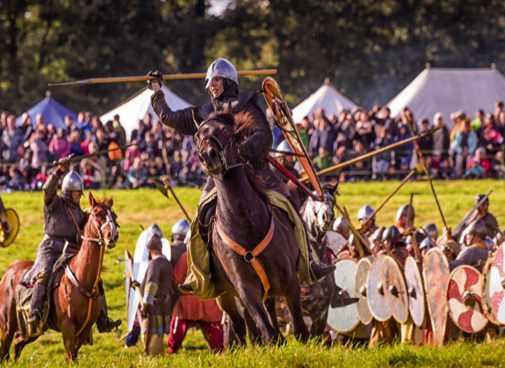
1 Experience the Battle of Hastings Don’t miss the drama of our huge Battle of Hastings re-enactment on 15–16 Oct.
www.english-heritage.org.uk/ battle
The essential conservation work taking place thanks to your support as Members
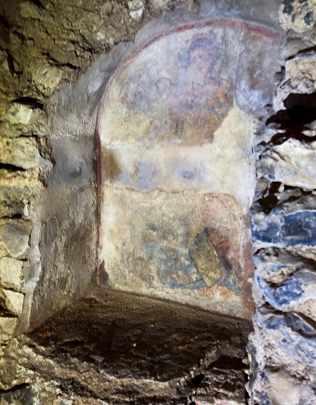
A vital study and conservation project underway at Lullingstone Roman Villa in Kent is testing methods for stabilising and protecting an important secondcentury wall painting.The mural of three water nymphs, in a niche in the Deep Room of the villa, suffered damage from a damp environment over many years. Now, after its details have been mapped on a new photogrammetric survey, trials will assess how best to consolidate the mural before work is undertaken to prevent further deterioration. www.english-heritage.org.uk/lullingstone

A rare cannon has returned to the inner bailey of Pevensey Castle in East Sussex after major restoration work. Years of patchwork painting and maintenance, plus metal corrosion to the barrel and decay of the replica wooden carriage, left the demi-Culverin smoothbore looking rather forlorn.With its barrel and carriage expertly cleaned, treated and painted, and a new red tompion (muzzle cover) fitted, the magnificent cannon, which dates from the mid-16th century, is now back on display. www.english-heritage.org.uk/pevensey
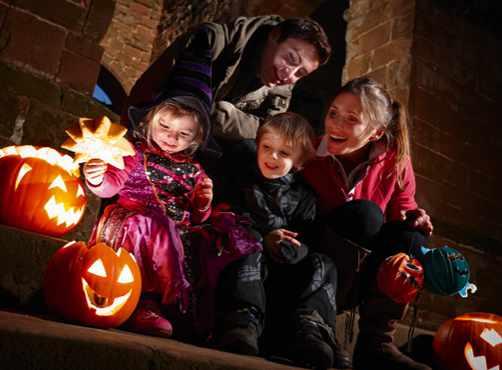
2 Go on a Beano Halloween quest
Gather your little monsters for a ghoulishly good day out. See page 6 for more details. www.english-heritage.org.uk/ events
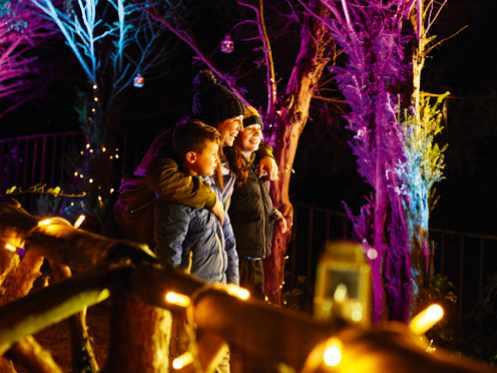
3
Discover a magical world of illumination Experience the past in a spectacular new light at one of our special Enchanted events. www.english-heritage.org.uk/ enchanted
The removal of a thick layer of yellowed varnish from a 17th-century painting has revealed a much brighter sky than was previously evident. The Prodigal Son as a Swineherd, a biblical work painted in 1637 by Dutch Golden Age artist Abraham Bloemaert, depicts the titular character in squalor alongside tumbledown farm buildings – but at least now the sun is shining on him. Admire the painting in the dining room at Kenwood in London. www.english-heritage.org.uk/kenwood
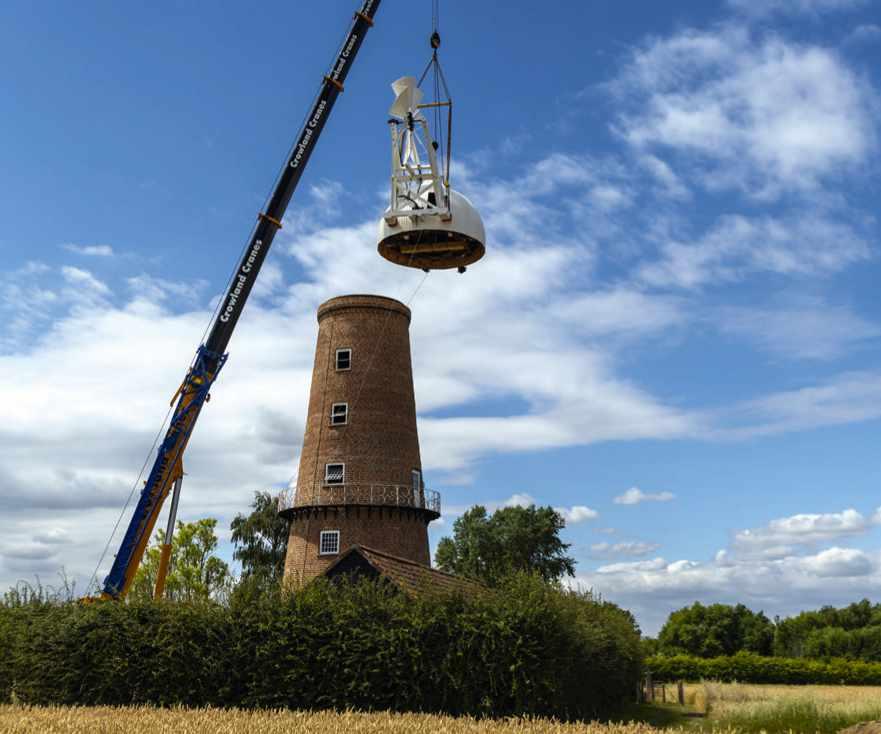
Sibsey Trader Windmill in Lincolnshire is almost back to working order after the restored cap was refitted. Built in 1877, the windmill suffered from damp exacerbated by a non-breathable coal-tar coating, resulting in timber rot affecting the cap and sails. After a major conservation project – involving removal of the coal tar and renovation of the mechanism, cap and sails – is completed in October, it will again be a fully functioning flour mill. www.english-heritage.org.uk/sibsey-trader-windmill

4 Get to meet Father Christmas
Kids can receive a gift from Father Christmas and enjoy hearing festive tales.
www.english-heritage.org.uk/ events
A new project is using state-ofthe-art geophysical technology to create a comprehensive map of Wroxeter Roman City. At its peak, the 78-hectare metropolis of Viroconium, in what is now Shropshire, was Roman Britain’s fourth-largest city. Some of its ruined structures have been excavated but most now lie beneath farmland. A survey in the 1990s resulted in a plan of the ancient city – but there are still big gaps in our knowledge. Survey work for the new project was due to begin in early September. The complex data obtained will provide outlines of the site from different periods that, it is hoped, will show in detail the Roman fortress underlying the city, as well as more of the Iron Age settlements that preceded Roman occupation. www.english-heritage.org.uk/ wroxeter
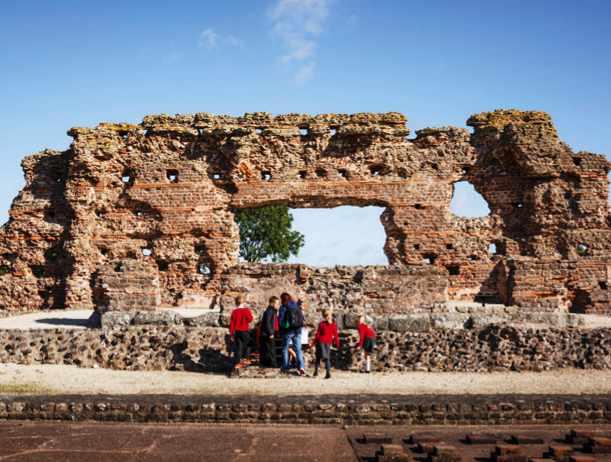
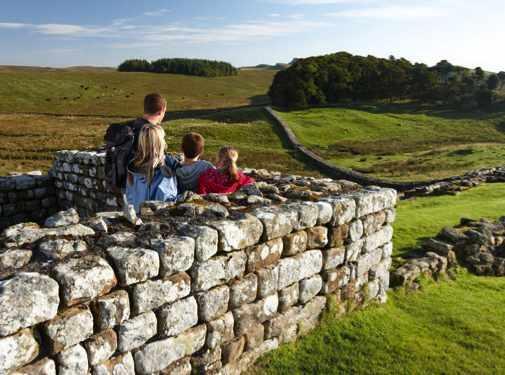
5 Head out for a winter walk
These routes take in some of our most atmospheric properties across the country. www.english-heritage.org.uk/ historical-walks
Save 25% on Christmas at Kenwood
Save when you book tickets for London’s newest fixture in the festive calendar (use the code MEMBERS25).
www. christmasat kenwood.com

What’s happening in our London blue plaques scheme
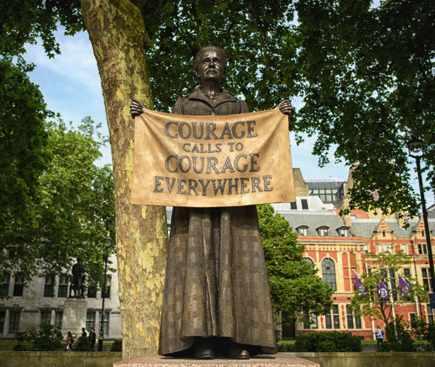
Two more London plaques have gone up over the summer, each with a political flavour. The National Union of Women’s Suffrage Societies (NUWSS) was an umbrella campaigning group to secure votes for women. Led by Millicent Garrett Fawcett – who already has her own blue plaque – it represented the non-militant wing of the movement. Founded in 1897, the NUWSS was based from 1910 until 1918 at Parliament Chambers, Great Smith Street, Westminster. This survives as Park House, and bears the new plaque. Dadabhai Naoroji (1825–1917) was the first Asian to win a popular election in Britain. In 1892, he triumphed by just five votes in Finsbury Central. Women’s suffrage was among his favoured causes, along with home rule for Ireland. His ‘drain theory’, casting British rule of India as essentially exploitative, gained wide acceptance. Naoroji’s plaque is in Anerley Park, Penge, where he lived for about seven years.
*Quote ref Heritage0722

INSTALLED IN 1 DAY
“What a difference a day makes as the saying goes, and yes, that’s all it took to install.”
Mr & Mrs Barber, Wells
WARMER IN WINTER
“There is no doubt that the conservatory is much warmer than previously, and no, the room is not darker either!”
David Birch, Chichester
USABLE ALL YEAR ROUND
“The conservatory is now used throughout all seasons of the year and is far more comfortable to sit in whatever the weather outside ”
MOULD & CONDENSATION
“This is the best thing we have done in this house Used to run with condensation and now zero.”
Karen Thomas, Chippenham
COOLER IN SUMMER
“You could have fried an egg on the table in there in the summer, I now look upon the conservatory as a new room It is quiet, restful and cosy ”
Carol Doyle, Surrey
ENERGY EFFICIENT
“I’ve already turned the underfloor heating down Lovely job guys, thank you!”
QUIETER IN BAD WEATHER
Mike Millis,Middleton On Sea 2 FREE PANELS
Mr & Mrs Gibson, Portishead

Anne Bird, Bristol
“For the first time in 10 years we do not have to close the door to the conservatory when it rains, as the noise is minimal and before I found it difficult to hear the TV over the loudness of the rain on the old roof ”
Mr & Mrs Bailey-Webb, Warsash
“It’s the best home improvement we have ever made. Our conservatory is now our dining room in the garden.”



It’s our responsibility to explore England’s hidden stories
he extraordinary sites, monuments and collections in our care provide rich material for exploring England’s past.
As part of our commitment to telling the fullest possible history, we’re responsible for sharing the fruits of this exploration. That means telling familiar stories as well as delving into lesserknown histories.
One example of how we’re exploring the Black histories of English Heritage sites is the temporary exhibition ‘Liberty & Lottery: Exploring the Legacy of the Transatlantic Slave Trade’ at Brodsworth Hall and Gardens in South Yorkshire. Formulated as a trail through the property, the exhibition uses sound posts and contemporary art to help visitors understand Brodsworth’s connections to transatlantic slavery.
Visitors to Brodsworth often ask where the wealth of the owners came from but the topic isn’t covered by the site’s permanent interpretation – which is why we developed ‘Liberty & Lottery’.
As is the case with many country houses, one of the former owners of the Brodsworth estate, Peter Thellusson (1735–97), amassed considerable wealth through financial dealings that were heavily connected with the transatlantic slave trade. He part-owned slaving ships (including the Liberty and the Lottery of the exhibition title), was involved in financing plantations, and had financial interests in the transport, processing and sale of goods that were produced through enslavement.
Rigorous research underpins all of English Heritage’s work. It’s what allows us to unearth

Learn more by listening to episode 131 of the English Heritage Podcast or plan a visit to Brodsworth Hall at www.englishheritage.org.uk/ brodsworth
hidden stories, and we’re always eager to find out more about the sites in our care. In developing this project, we also created new research partnerships with other organisations, including the School of Arts and Sciences at St George’s University, Grenada. This enabled us to find out more about plantations on Grenada and the Thellusson connection, providing fascinating insights into the Brodsworth story from a Caribbean perspective.
‘Rigorous research underpins our work and helps to unearth hidden stories’
‘Liberty & Lottery’ is one example of our work to explore hidden stories and showcases the potential of archival research to unearth new information. It also tries to counteract the dehumanising commodification of the trafficked and enslaved Africans in historical financial records through thoughtful artistic responses. By telling this part of Brodsworth’s history, the site’s significance becomes more apparent, and illuminates a global history hiding in plain sight. The exhibition closes on 31 October, so there’s still an opportunity for Members to visit it.


Share your thoughts, experiences, tips and photos
STAR LETTER
In 2019, I decided that I wanted to visit every English Heritage site.
To date, I have visited 220. One of our longest days was when we visited 10 sites in a day, including Dover Castle, Richborough Roman Fort and Deal Castle. It took some very careful planning and a lot of luck with the traffic. Another memorable day was when we had to work an outing around the guided visit at the
Making musicke
A couple of months ago we visited Monk Bretton Priory, a small unstaffed site in South Yorkshire. We were surprised at the extensive remains. We are members of de Mowbray’s Musicke and subsequently were lucky enough to perform at an amazing free event there, hosted jointly by the Friends of Monk Bretton Priory and Jolly Good Communities. The site really came to life with over 5,000 visitors, who experienced a taste of life in medieval England.
Kate Billmore, Peter Barnard and Andy Casserley
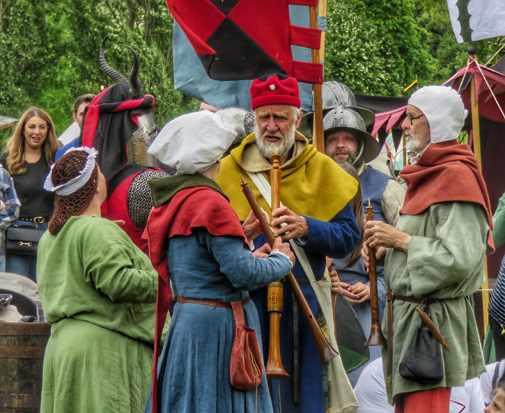
Royal Citadel, Plymouth. We also managed to visit Totnes Castle, Dartmouth Castle, Bayards Cove Fort and Berry Pomeroy Castle on the same day. I am now planning to walk Hadrian’s Wall, so this will allow me to visit another 22 sites either on the route or nearby. My current target is to visit every site by the end of 2023. I would like to thank English Heritage for opening up the UK to me and also for the informative staff that you employ.
Steve Clarke

out
I was delighted to read in the July issue that a new blue plaque had been put up to mark the brave women who went on strike against the poor conditions and low wages in the Bryant and May match factory. When working recently on my mother’s family history, I found out that an ancestor, Mary Warsap, was one of the teenage girls on this strike in 1888. I decided to look further and discovered that Mary’s usual weekly pay was seven shillings and six pence but on what is now known as Strike Week she only got five shillings. No wonder they went on strike.
Ron Morris

Each issue, our star letter writer receives a Craghoppers jacket worth £100. To be in with a chance of winning, simply send us an email for publication.
Iron Age addicts
I recently visited Chysauster Ancient Village in Cornwall with my grandchildren and was able to take four of them for free as a Member! The visit really brought the past to life, especially as there was a brilliant group there with artefacts and activities for the children to do, including weaving, flour grinding and pottery. My grandchildren have now created a club where they visit our local woods and have ‘Iron Age’ fun, whittling, building huts, and making weapons. Thank you for keeping sites like this open.
Suzanna Jeffries
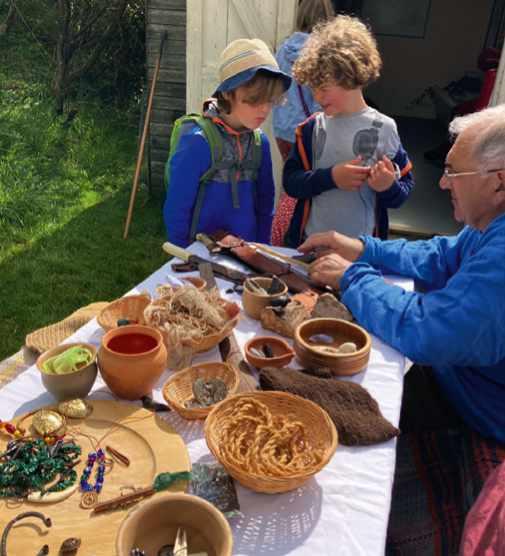
Email us at membersmagazine@ ourmedia.co.uk
We’re on the hunt for new recruits to join our revamped Members’ Panel in 2022. As a panellist, you’ll be invited to share your thoughts on all aspects of our work, from events to days out, and from our shops to this very magazine. We’ll also ask for your input as we develop our plans for the future. It’s your chance to help make membership even better. If this sounds like something you want to get involved in, we’d love to hear from you. We’re looking for people from all ages and backgrounds to join the panel, and applications are open now.
To find out more and to sign up, go to www. english-heritage.org.uk/ members-panel
Associated attractions
I recently spent a few wonderful days on the Isle of Man and enjoyed free access to sites in the care of the Manx National Heritage with my English Heritage membership. I can recommend a stay there.
Tim Hancocks
Dover inspiration
I was delighted to read your Dover Castle article. Every time I visit I’m deeply impressed by the work that your team does there. It should be on every Member’s ‘must see’ list.
David Witts



Send us your questions about our sites and we’ll find the English Heritage expert to answer them
The latest exclusive online content

Win a kids’ goody bag worth £100
Ask your little monsters to enter our competition to create a mythical beast. www.english-heritage.org. uk/kids
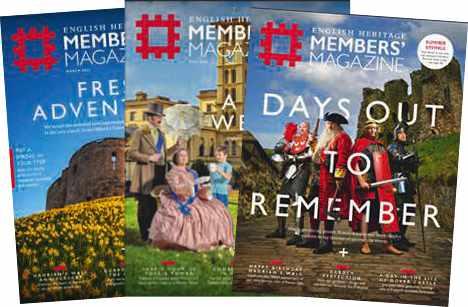
Catch up on back issues of the magazine
Did you know you can read past issues of the magazine on our website? www.english-heritage.org. uk/magazine
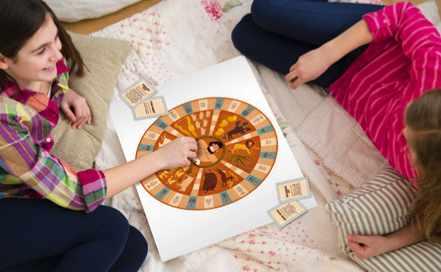
Play our 12 Labours of Hercules board game
Download our family game to see who can be the first to become immortal by completing the 12 Labours. www.english-heritage.org. uk/kids
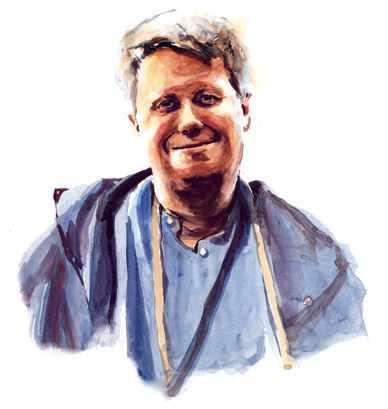
Dr Jeremy Ashbee Head properties curator
Q


Fiona Armstrong asks…
How widespread was it for donkeys to be used to draw water from castle wells? Or was this peculiar to Carisbrooke Castle?
A
Jeremy Ashbee replies…
We believe the wheel at Carisbrooke was originally human-powered, and it was only from the late 17th century (100 years after it was manufactured) that there is documentation for donkeys. The only other example I am aware of was at Dover Castle. This comes from A New Discovery By Sea by John Taylor, published in 1623. Taylor broke his journey from London to Salisbury to visit Dover Castle, where he reports seeing a donkey turning a wheel to draw water from a well that was ‘So christaline, so cleere, and coole a water / That will in Summer make a mans teeth chatter’.
Q
Eric Lambert asks…
What are the origins of English garden mazes? Were there examples at English Heritage sites?
A
QMichael J Walsh asks…
Further to the article ‘A grand tournament’ (July 2022), to what extent was the Church’s condemnation of tournaments based on the fact they distracted knights from crusades?
To have your questions answered, email us at membersmagazine@ ourmedia.co.uk
Emily Parker replies… ‘Mazes’ were described in English gardens from the late 15th century, although they were often decorative patterns rather than puzzles. The maze at Hampton Court was first recorded in the 1710s but probably laid out in the 1690s for William III. The popularity of mazes continued into the early 18th century and a 1707 plan of the garden at Wrest Park shows hedge mazes. Not many historic hedge mazes survive today as they were usually removed in the 18th century as the style of fashionable gardens changed.
Dickon Whitewood answers…
The first ecclesiastical ban on tournaments took place at the Council of Clermont in 1130. The Church’s rationale was that tournaments could end in death and put participants’ souls at risk. One of the first to lament the detrimental effect of tournaments towards crusading was Bernard of Clairvaux, who wrote to Abbot Suger of St-Denis in 1149 trying to prevent a tournament between Henry of Champagne and Robert of Dreux. In 1193 Pope Celestine III wrote to the English bishops to prohibit tournaments and encourage knights to go on crusade, where he argued they could better exercise body and soul. The last official papal ban was passed in 1312 by Clement V, who declared that no one in their right mind could doubt that tournaments were a major hindrance to further crusades.
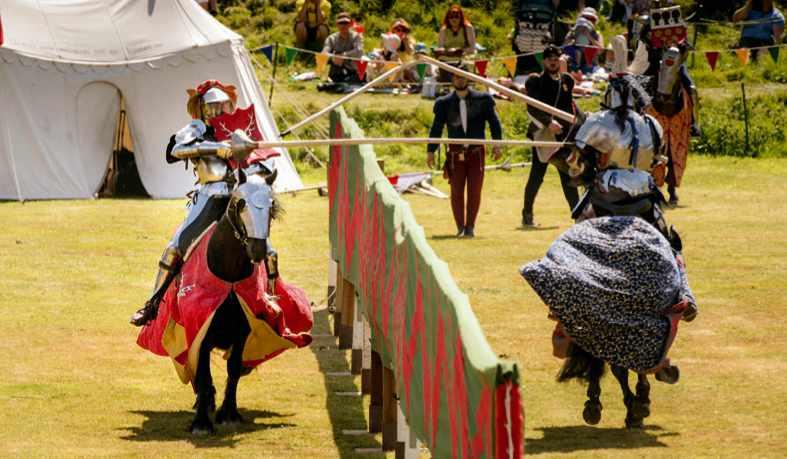
Please donate now. Scan this code to give today
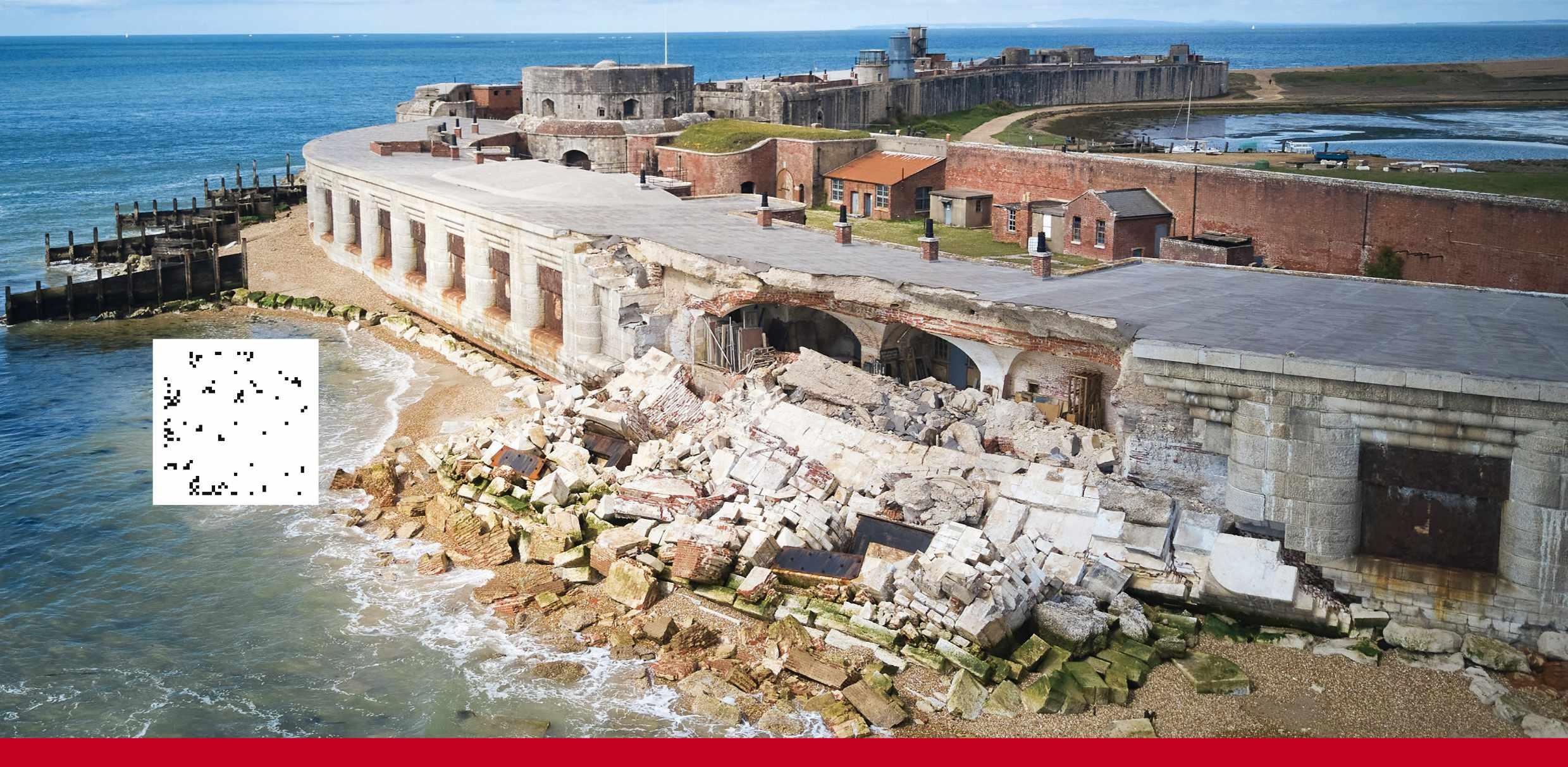
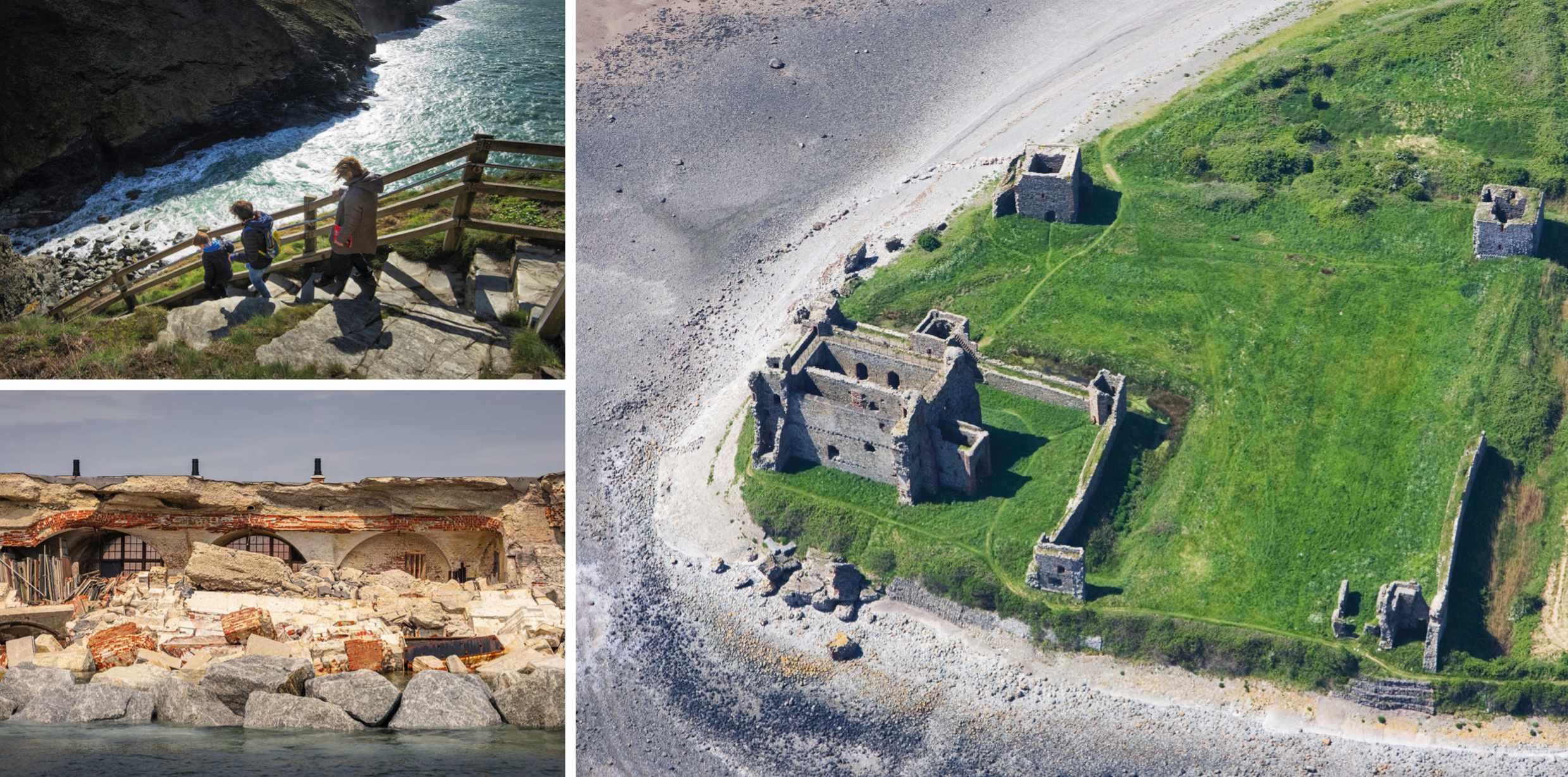
Standing on the very edge of the Kentish coast, half of this impressive site has already been lost to erosion. £35 could help pay for the upgrading and repair of coastal defences.
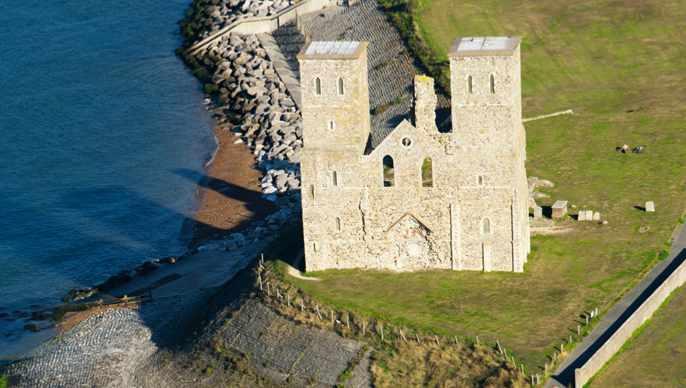
Situated on Piel Island, off Barrow-inFurness, the castle’s keep and bastions are vulnerable to coastal erosion. £50 could help pay for repairs to the blockwork sea banks and gabion sea defences.
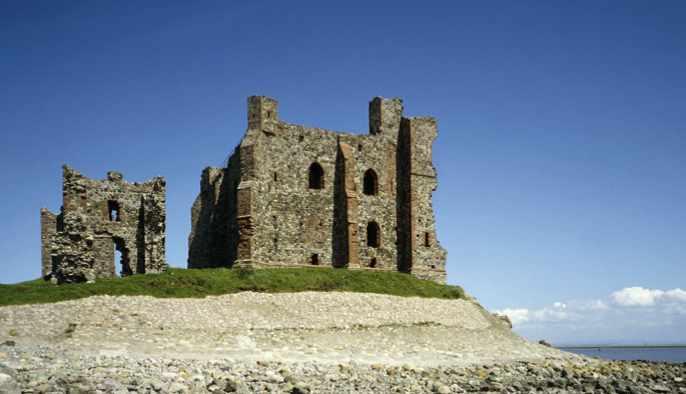
Many of our finest buildings have stood for centuries on England’s coast. But they are now at risk from erosion – and conserving them is one of the greatest challenges we’ve ever faced. Climate change is causing more frequent and powerful storms, rising sea levels and coastal flooding.All are having a devastating impact on vulnerable sites, such as Hampshire’s Hurst Castle.
In 2021, critical work to protect Hurst Castle was already underway, but powerful storms caused significant damage and disaster struck.Around 30 metres of the fortress’s East Battery wall crashed into the sea during a storm. While £160,000 is needed to repair and strengthen sea walls alone, the costs of conserving all of our coastal properties will reach the millions. Tintagel Castle, ReculverTowers and Roman Fort, and Piel Castle are just some of the historic sites at risk.
Your membership is an enormous help in covering essential costs, but your support is urgently needed to help us continue to protect, conserve and carry out critical maintenance at our most vulnerable coastal sites. Please donate now to protect our coastal heritage. There’s not a moment to lose.
Your donation will go towards our conservation and maintenance work to urgently protect our historic sites.
Parts of the cliff situated in front of Tintagel’s visitor centre have been lost to erosion, affecting the viewing area and coastal path. £80 could help towards repairing the damage from last year’s winter storms.
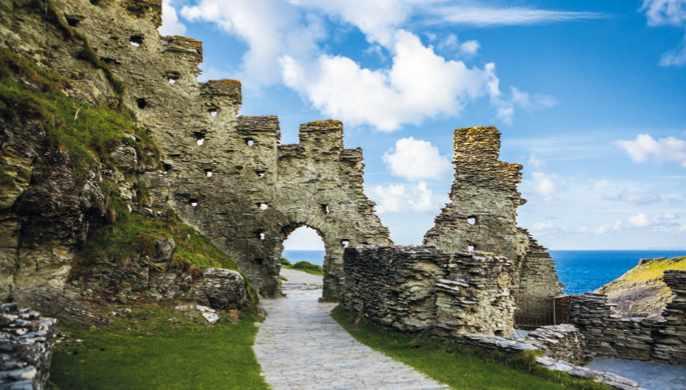
You can donate online by scanning the QR code, visiting www.english-heritage.org.uk/ coast or by completing the form below and returning it in an envelope to: Coastal Conservation Appeal, English Heritage,The Engine House, Firefly Avenue, Swindon, SN2 2EH
Here is my gift of:
£35 £50 £80 Other
Title First name Surname
Address
Membership number
COASTALMAG
(please choose your own amount)
Postcode
I enclose a CHEQUE/CAF CHEQUE for £ , payable to The English Heritage Trust (please write your Membership number clearly on the reverse of your cheque)
Please note, cash and CAF card donations cannot be accepted.
Debit my Visa/American Express/Mastercard for £
Card No.
Cardholder’s name Expiry date
Boost your donation by 25p for every £1 with Gift Aid
CVV
By ticking this box you confirm that you agree that you wish The English Heritage Trust to benefit from Gift Aid legislation. You confirm that you are a UK taxpayer and have paid or will pay an amount of income tax and/or capital gains tax that is at least equal to the amount reclaimed on ALL your Gift Aid donations (not just The English Heritage Trust) for each tax year.You understand that other taxes such as VAT and Council Tax do not qualify.This declaration applies to all eligible Membership subscriptions/donations you have made during the last four-year period and until further notice.
Please let us know if you wish to cancel this declaration, change your home address, or you no longer pay sufficient tax on your income and/or capital gains.
Your support is helping to keep the story of England alive at over 400 historic sites across the country.We’d love to keep in touch with you about things to see and do, exclusive offers, our latest work, appeals and how your support makes a difference.We will never share your details with anyone else to use for their purposes.You can change your mind at any time. Please let us know how you would like to hear from us: Email Post Phone SMS
The English Heritage Trust is a charity, no. 1140351, and a company, no. 07447221, registered in England.
A new exhibition at Stonehenge reveals the remarkable similarities between our most famous Neolithic monument and stone circles created at the same time in prehistoric Japan


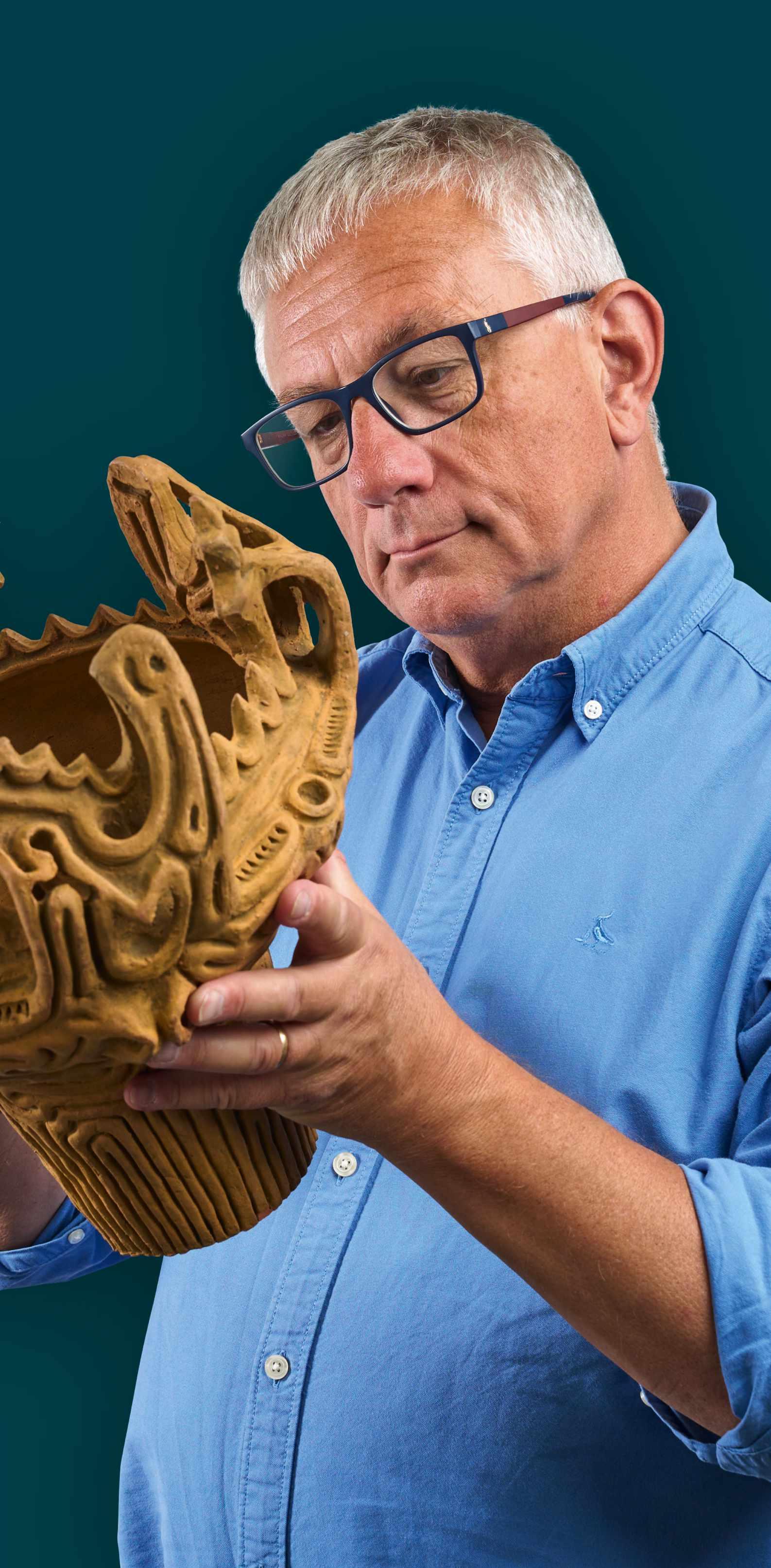
‘Circles of Stone’ co-curator Dr Simon Kaner, executive director of the Sainsbury Institute for the Study of Japanese Arts and Cultures and director of the Centre for Japanese Studies at the University of East Anglia, holds a replica of the Jo¯mon ‘flame pot’ from the exhibition
The story of Stonehenge is steeped in alluring mysteries and its latest special exhibition adds another fascinating enigma to the list. ‘Circles of Stone: Stonehenge and Prehistoric Japan’ asks how and why, just as the Neolithic inhabitants of Britain were building our most well-known ancient monument, were people on another island archipelago, at a comparable latitude, 6,000 miles away, doing something very, very similar?
It’s a little-known fact that, like Britain, Japan is also home to many stone circles. These were built at the same time as Stonehenge and served a seemingly similar purpose. And yet there was no contact between the two areas. What’s more, there are also notable parallels between the lives of the people who built them, as well as the pots and tools they left behind.
‘Very few people in Britain are aware of prehistoric monuments in other parts of the world,’ says Dr Susan Greaney, a curator of ‘Circles of Stone’. ‘And so we thought it was important to create an exhibition comparing and contrasting prehistoric Britain with prehistoric Japan.’
‘Circles of Stone’ looks at the monuments and settlements of Japan’s J mon period alongside those built by the late Neolithic people of Britain at the same time. The two countries had striking similarities and differences in the prehistoric period.
‘In order to understand the significance of Stonehenge, we have to understand what is happening at the same time elsewhere in the world, and J mon Japan is a fascinating case study,’ says Greaney.
To achieve this, ‘Circles of Stone’ will feature 80 objects loaned by Japanese museums – most of which have never


been seen outside Japan, including a highly decorated ‘flame pot’ (see box) with an eyecatching design that evokes a blazing fire. There will also be fragments of small clay human figurines called dog h have been found at many J m i While their purpose remains an intriguing mystery, they may have represented some kind of gods or spirits and were probably used in rituals. Interestingly, many dog seem to have been deliberately smashed
and scattered at J mon sites. While the exhibition takes in objects and sites from across Japan, at its core are two large stone circles on an artificially flattened terrace on the left bank of the yu River in northern Japan
es i o Ja a , s c r
t n ci l n ifi ia
r ce n eft ba o th
n rt e n a a
Left During the same period that Neolithic inhabitants of Britain were building Stonehenge (pictured), many stone circles were also being created in Japan led o th t nd a ny it se r ain in igui
y r re ente ome wer roba l
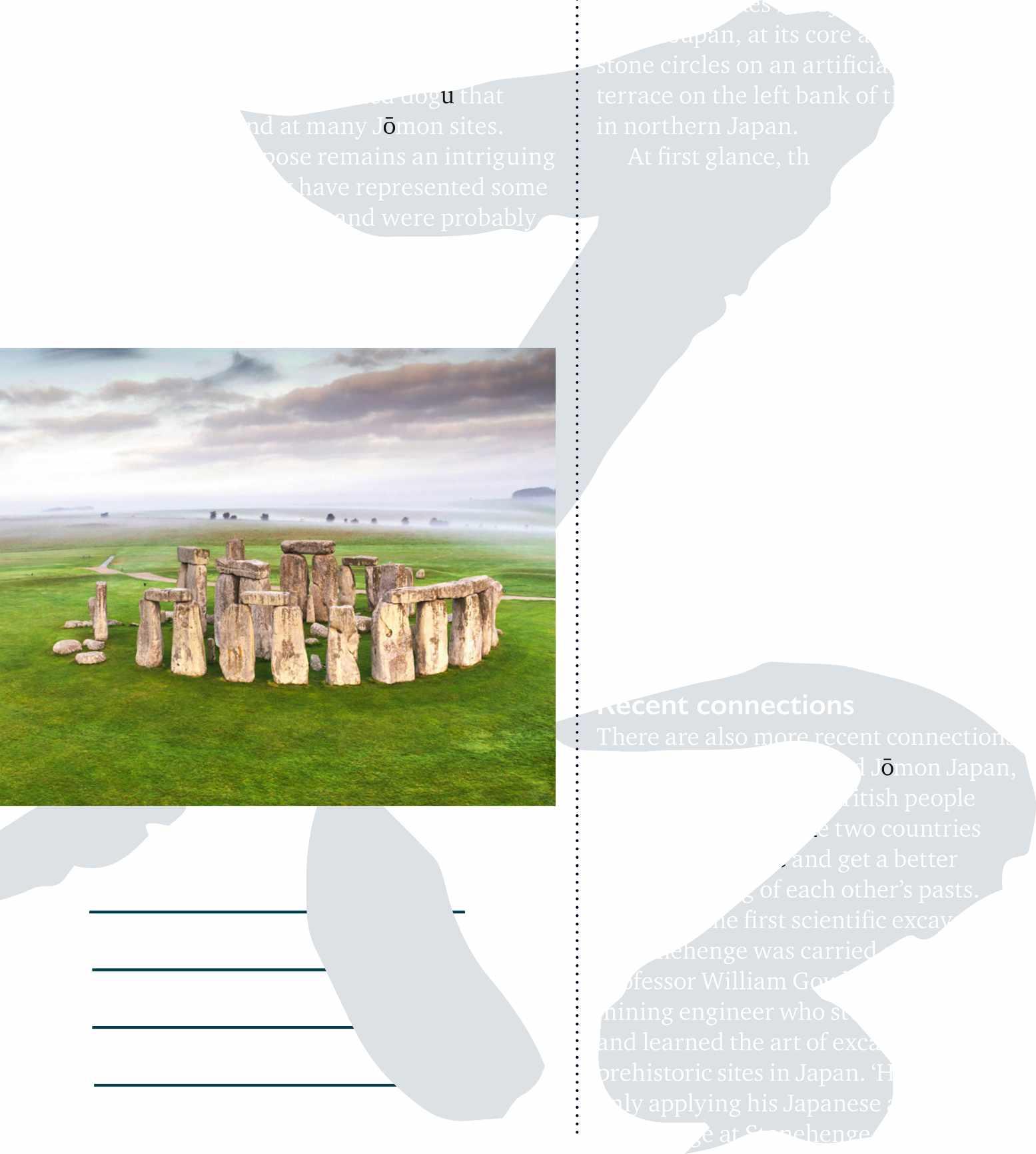
t s glance,

o ’t uc
rt inl d n’ hav th

fi l h i l don’t look much like Stonehenge They certainly don’t have the same giant standing stones: instead the circles were made up of thousands of river pebbles
ndi s one d tho
t o sto
ri ls an
But both stone circles are associated with burials and share other key features –perhaps most remarkably the alignment of the stone circles with the midsummer and midwinter solstices.
erhap
t n
‘Japan and Britain share a very similar climate, with distinctive seasons, harsh winters and warm summers, and so you can imagine that marking the solstices was important for both cultures,’ adds Greaney. ‘The changing seasons would have been an important part of their lives.’
e ent o t o s re als ent n e t ons on Japan, r ti h ple e tw o t ies


n e er


Listen and learn

Megalithic mascots
agi e g e w or
‘Y i i h ki the solstices was i f both cultures’
There are also more recent connections between Stonehenge and J m J as both Japanese and British people travelled between the two countries to share expertise and get a better understanding of each other’s pasts.
f ch er s ast .
t s en fi c va n e g wa ar ed o
One of the first scientific excavations at Stonehenge was carried out in 1901 by Professor William Gowland, an English mining engineer who studied archaeology and learned the art of excavation at prehistoric sites in Japan ‘He was not only applying his Japanese archaeological knowledge at Stonehenge – Japanese
ss r W l a Go in engi e o s
nd l a ed e a t e a rehistoric sit s p n H
app y n p ne a g t
Discover more about the exhibition by listening to episode 183 of the English Heritage Podcast. www.englishheritage.org.uk/ podcast

Look out for our cute characters, Big Rock and Little Clay, as you make your way around the exhibition
Two yuru-chara characters have been specially created to help guide visitors through the ‘Circles of Stone: Stonehenge and Prehistoric Japan’ exhibition. In Japan, these cute mascots are often used to promote a particular region, an event

or an organisation, and there are thousands of different examples spread across the country. The two characters that have been created to represent Stonehenge and Jomon Japan are called Big Rock (or Daiganseki in Japanese) for Stonehenge, and Little Clay (Minichi in Japanese) for Jo¯ mon Japan.
Although yuru-chara are a relatively recent phenomenon that has only become widely popular this century, the appeal of these characters is believed to lie in a fondness and nostalgia for far older, non-human mythological characters and polytheistic
u i
religious traditions.‘To us they look like children’s characters but in Japan they are just a fun way of doing business for everyone,’ says Dr Susan Greaney.‘Daiganseki and Minichi will be featured throughout the exhibition and will appear on a number of the information panels, where they will explore the similarities and differences between ancient Britain and Japan.’

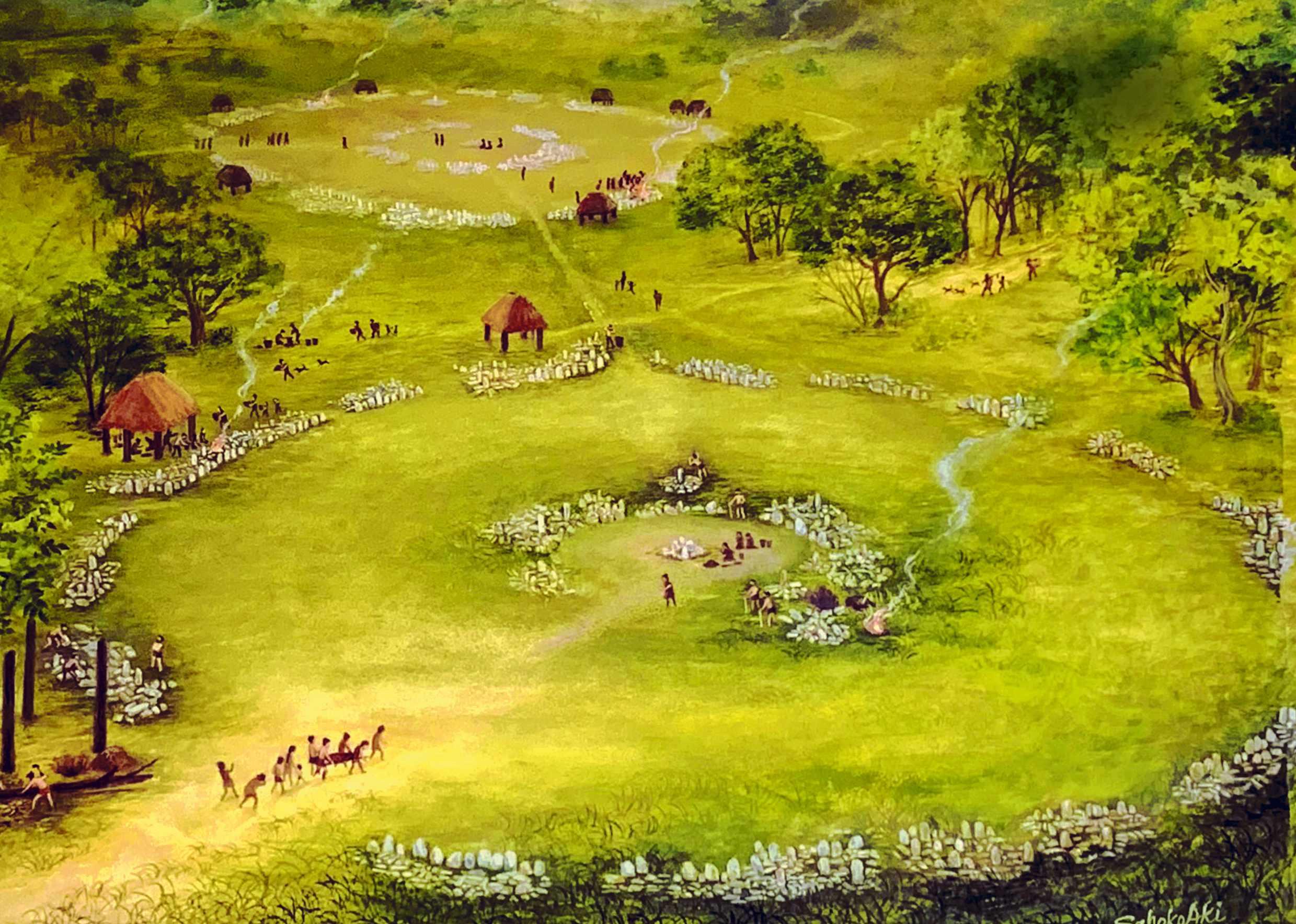
culture and history also inspired his interpretation of Stonehenge,’ says Greaney. ‘For example, he suggested that some of the stones might have been moved in a similar way to the huge stones used to build the imperial palaces in Japan.’
In addition, some of the most atmospheric images of Stonehenge were created by a traditional Japanese woodblock artist, Yoshijiro Urushibara, who came to the UK for the 1910 Japan-British exhibition but stayed until 1940 and worked for the British Museum.
Similarily, the ‘Circles of Stone’ exhibition features a newly commissioned illustration by Japanese artist Sahoko Aki, showing yu stone
circles as they appeared when first constructed. However, for all these connections, there are also important differences between Britain and Japan during the prehistoric period. Most significantly, while the people who built Stonehenge were farmers, the builders of the J mon sites were hunter-gatherers.
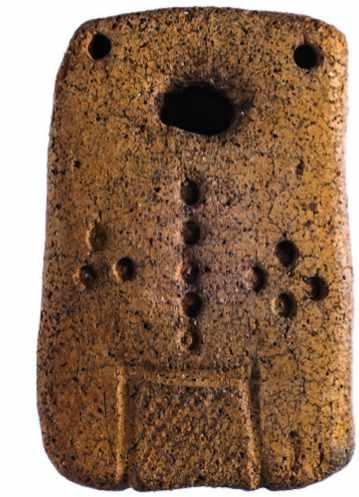
‘There is no evidence for agriculture in Japan at this time, certainly no evidence of domestic animals,’ explains Dr Simon Kaner, executive director of the Sainsbury Institute for the Study of Japanese Arts and Cultures and director of the Centre for Japanese Studies at the University of East Anglia, who helped to co-curate the exhibition. ‘Instead, people
To enjoy a 360º tour of Stonehenge, go to youtu.be/_ RyqU1r1Fmk
were dependent on wild resources, such as fish, game and wild plants – particularly nuts, which may have been managed in some way to encourage greater growth.’
But while most people assume all hunter-gatherers operated in small, extended family groups moving across the landscape following the game and plants they depended on, the J mon people lived in large, permanent settlements. This is important because the belief that huntergatherers operated on a small scale led to the incorrect assumption that they could not generate the surplus food needed to support a group of monument builders or large settlements. ‘The evidence from J mon Japan blows that theory clear out of the water,’ says Greaney.
Neither Britain nor Japan appears to have had much social ranking or
How we created a replica Jo¯mon ‘flame pot’ to go on display
At the heart of the ‘Circles of Stone: Stonehenge and Prehistoric Japan’ exhibition is the magnificent Jo¯mon ‘flame pot’, a remarkable artefact that serves as a testament to both the skill and the imagination of the society that created it.
‘Obviously it’s a very rare and valuable artefact.We take the responsibility for looking after it very seriously, and so it is protected behind glass,’ says co-curator Dr Susan Greaney. ‘But we also understand that with an object like this people really want to get close to it, they want to interact with it.This is an important part of how we want people to experience the exhibition and so we decided to commission a replica pot to put on display.’
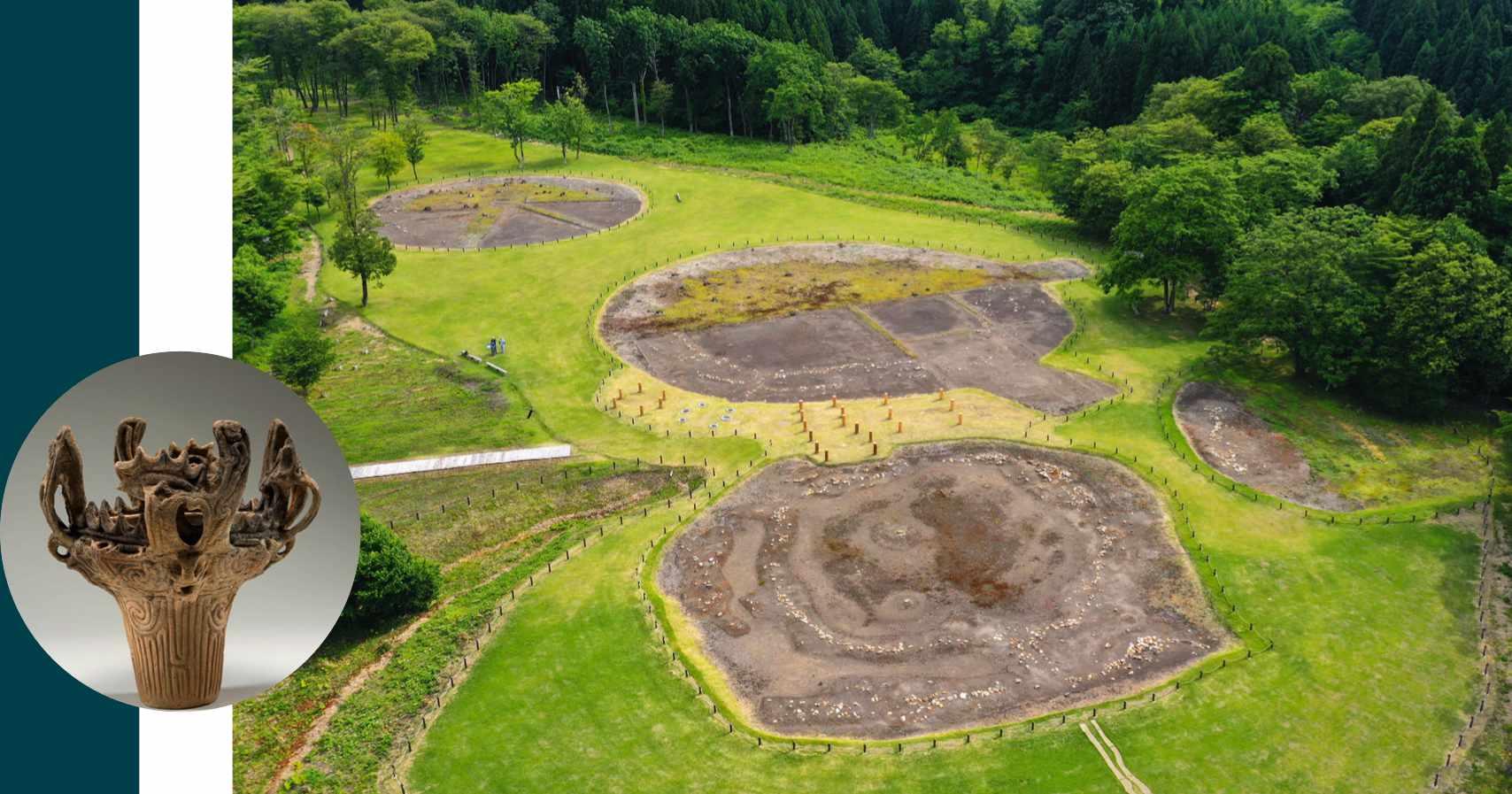
Japan is home to many stone circles, built at the same time as Stonehenge and serving a seemingly similar purpose
The artist chosen to produce this 21st-century version was experimental archaeologist and ancient pottery technology specialist Graham Taylor from Potted History, who has huge experience recreating artefacts from the Neolithic to Roman periods using authentic techniques and materials.
‘It was a very complex pot to make, a real test of his skills, and it’s fair to say he had never done anything like this before,’ says Greaney.‘But we were so pleased he was up for the challenge, and we’re absolutely delighted with

‘The building of monumental stone circles took off in multiple places’
inherited social standing at this time, as there is no evidence of individual highstatus burials or of stone circles being associated with important people in the way castles or palaces were centuries later.
‘We believe the henges in both Japan and Britain reflect a common interest in marking a group’s place in the landscape and its association with particular places, alongside a common interest in what to do with ancestors,’ says Kaner. ‘I think it’s really fascinating that people in very different parts of the world were doing similar things at the same time, despite never having met,’ he adds.
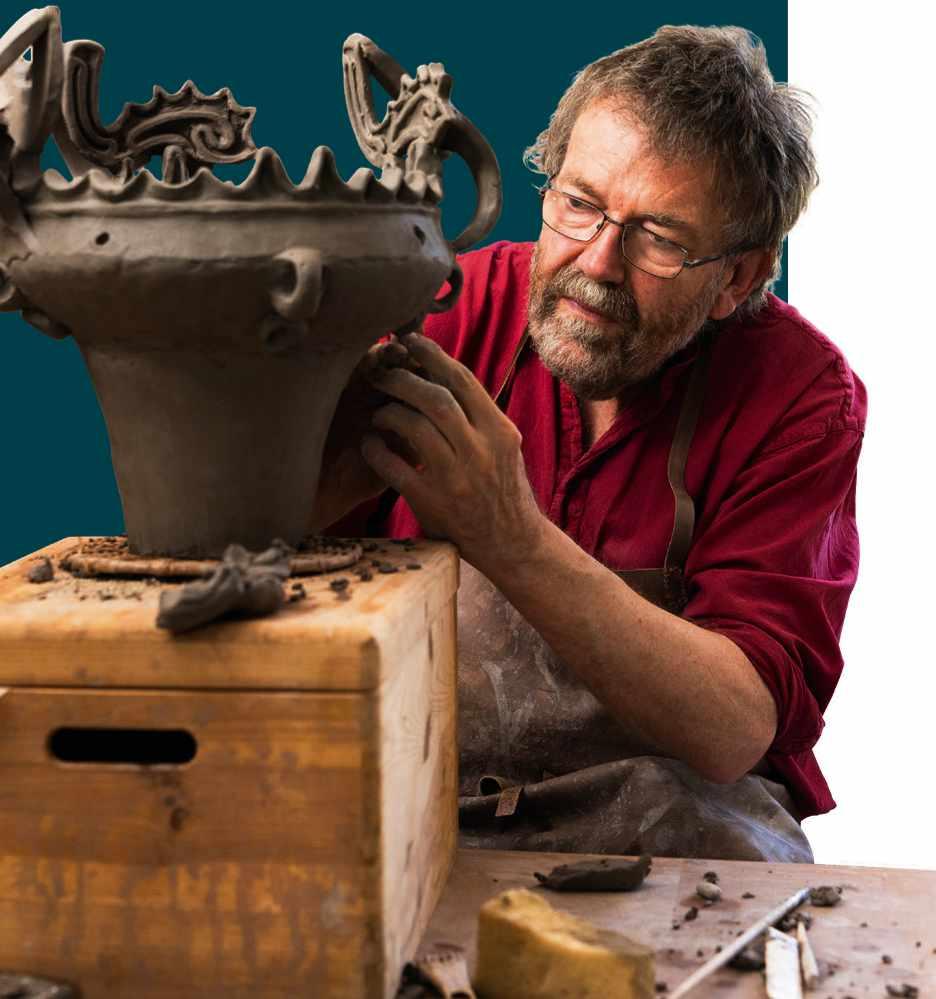
‘It seems Stonehenge isn’t as unique as we might like to think it is. It is part of a global story – not just an English one,’ says Kaner. ‘For reasons we don’t yet fully understand, the building of monumental stone circles associated with burials and with some sort of astrological significance took off in multiple places around the same time.’
This global view is echoed by Dr Toru Miyao from the Niigata Prefectural Museum of History in Japan, the lead Japanese curator of ‘Circles of Stone’, who helped to organise the loan of objects from Japan. ‘The way humans work with their environment can explain universal human characteristics,’ he says. ‘Such universality includes forms that are unique to each region, which in turn provide
the impetus for the survival of the history and culture of each region to the present day. But there are similarities in the universal environmental workings of past human beings and their ritual behaviours, irrespective of region or country.’
This spirit of a common human culture has also influenced the design of the ‘Circles of Stone’ exhibition, which draws as much of its inspiration from Japan as the landscape of Wiltshire. ‘We were very lucky to go to Japan in autumn 2019 and were hugely inspired by a lot of what we saw,’ says Greaney.
As a result, ‘Circles of Stone’ has been laid out on a subtle grid of regular squares, inspired by traditional Japanese architecture, and many of the displays feature the work of a Japanese calligrapher. The exhibition also features two yuru-chara characters (see page 22), which have been specially created to represent ancient Britain and Japan and narrate the exhibits. Visitors can follow their adventures as they discover the prehistory of the two countries and explore the mysterious similarities between Neolithic Britain and J mon Japan.
Discover more
To plan your visit to Stonehenge, go to www.english-heritage.org.uk/stonehenge. With thanks to the Ishibashi Foundation for supporting the ‘Circles of Stone’ exhibition


Equine consultant and Norman cavalry re-enactor, 1066 Battle of Hastings, Abbey and Battlefield, East Sussex
AL In my role as an equine consultant, I organise equestrian reconstructions for live events and television filming across many historical periods, from Roman times to the First World War. This includes the annual Battle of Hastings re-enactment that takes place on the Battle of Hastings battlefield in East Sussex – this year it’s taking place on 15–16 October. It’s an amazing event that I first experienced as a rider in the Norman cavalry in the 1990 re-enactment.
AL My job is to recruit the horses and riders to represent the Norman knights who played such a crucial role in securing victory in 1066. We should have around 16 horses and riders this year. I’m also responsible for organising the scripted elements of the re-enactment, such as the mounted arrival of King Harold, Duke William’s cameos and the death of Taillefer (a Norman minstrel). On the battlefield, I will act as second-in-command to Laura in her first year as the Norman cavalry commander, passing on her instructions on the battlefield and making sure the cavalry are ready for her at specified times.
AL Another big part of my job is the layout and safe running of the backstage horselines. This includes the preparation of grazing areas, organising the parking of lorries, and the provision of hay and water. I’m also responsible for organising emergency farrier and veterinary cover.
LF I first joined the Viking Society, which performs at the Battle of Hastings re-enactment, in 2005. I was invited along to an event by some friends who mysteriously went off to be Vikings at the weekend. I thought it sounded like the nerdiest thing I’d ever heard, but it piqued my curiosity and I went along to a show. By the end of the weekend I was standing on the battlefield in borrowed kit, holding a banner and absolutely loving life!

Clockwise from above Alan and Laura prepare to perform on the battlefield; Alan and Laura at the site where the Battle of Hastings took place; more than 300 performers take part in the re-enactment
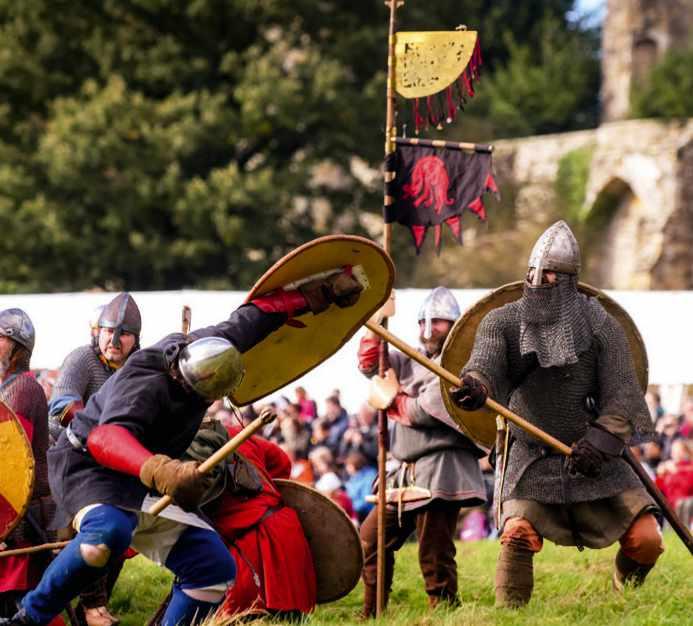
LF For re-enactment events that include horses, it doesn’t get any bigger than the Battle of Hastings. I’ve ridden as a Norman knight many times and the experience is phenomenal – the size and scale of the field, the thundering of hooves when the conrois (groups of knights) charge together, and the joy of working as a unit and holding the line. It’s very challenging physically but immensely satisfying. In the moment it’s quite easy to forget that you’re actually a 40-odd-year-old NHS physio from Lancashire.
LF This year will be special to me as I am performing as the Norman cavalry commander. We don’t all look like battle-hardened military men, but I think it’s a reflection of the inclusivity and equality our hobby provides that we can have a female commander. In our society, we have many prominent women in pivotal roles. For example, we now have our first female leader since the formation of our society around fifty years ago. I think it’s great that everyone can be recognised on their merit.
Book your ticket
To see Alan and Laura in action at the Battle of Hastings re-enactment, go to www.english-heritage.org.uk/battle
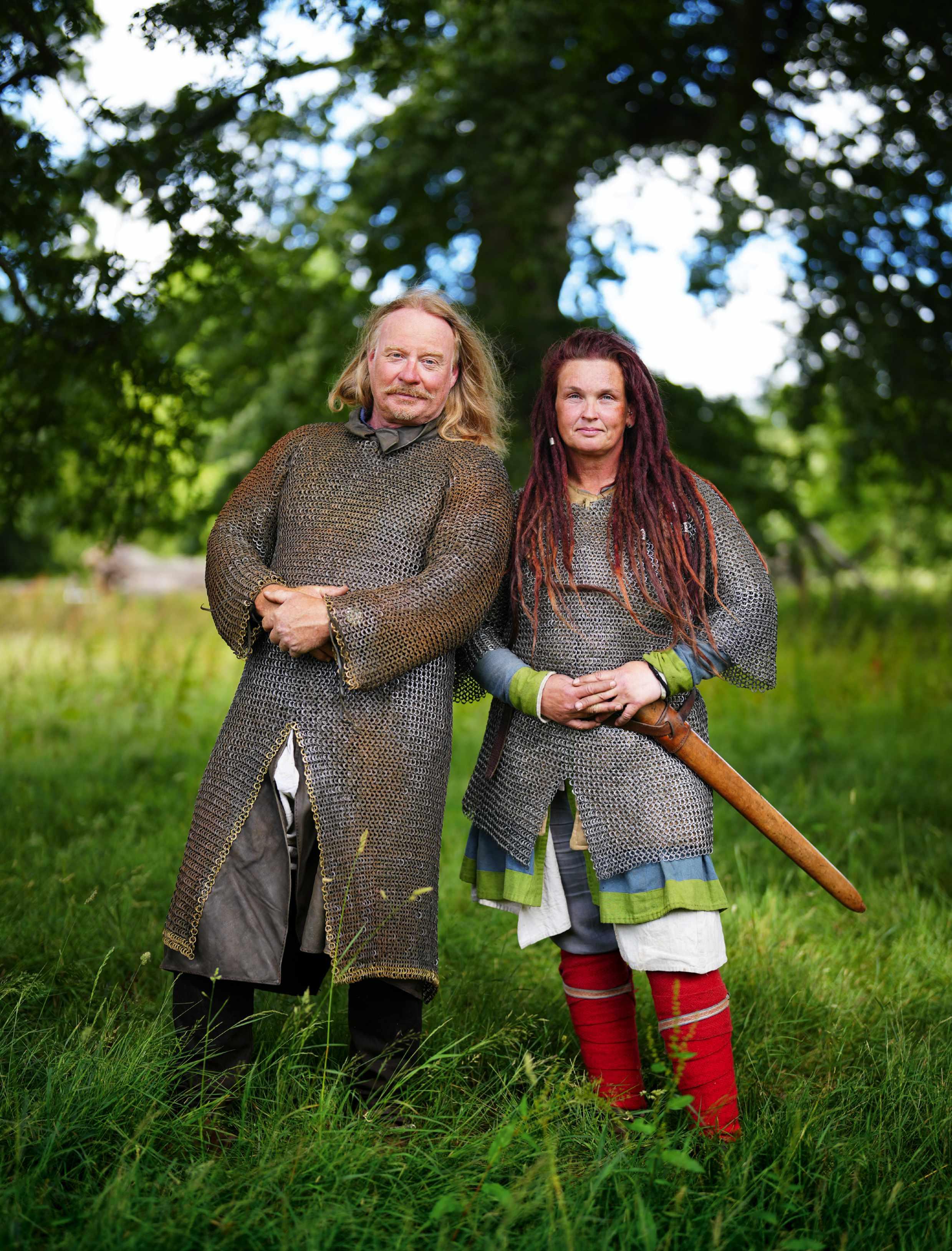
‘For
re-enactment events that include horses, it doesn’t get any bigger than the Battle of Hastings’

jou nalist Emin San
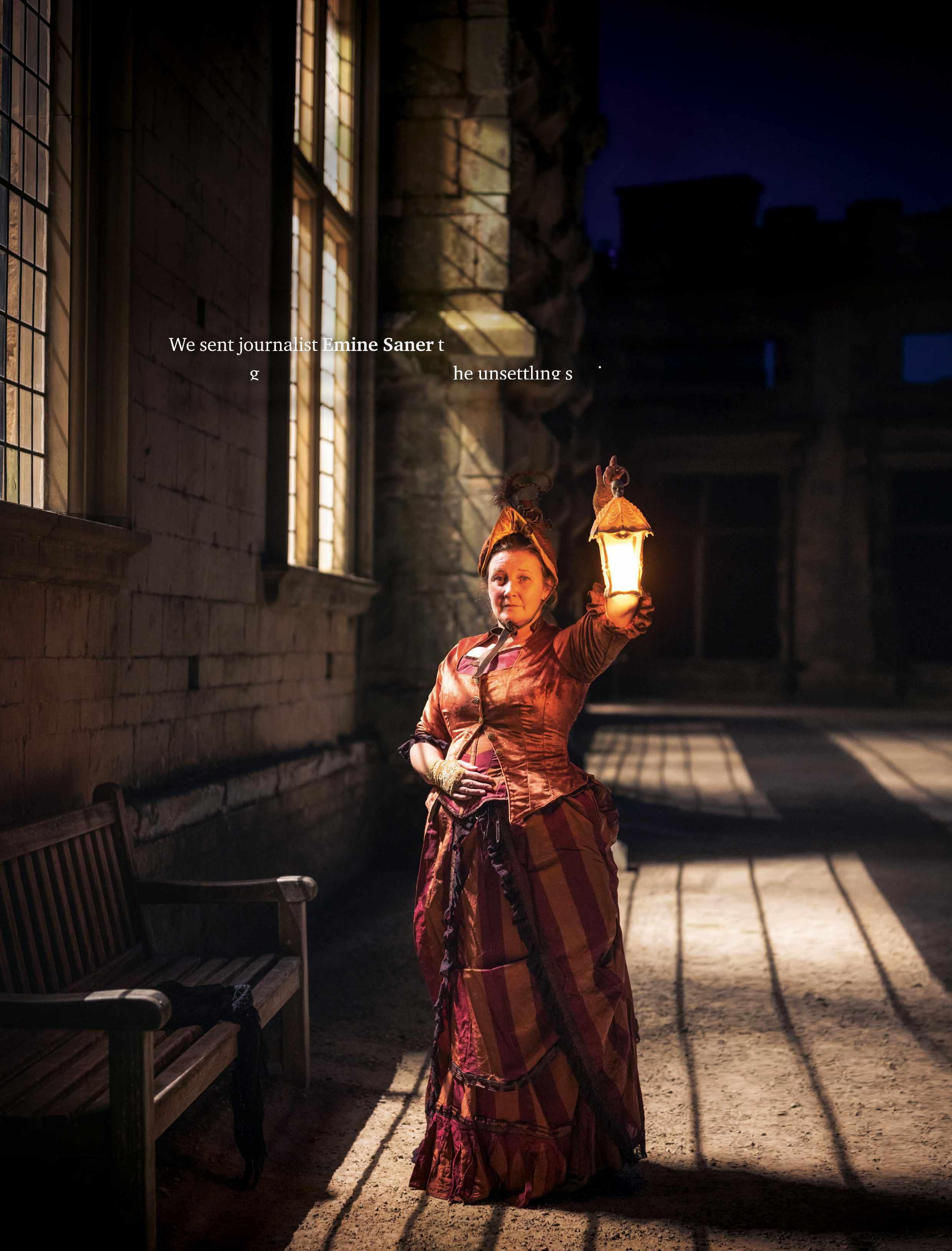

We sent journalist Emine Saner to Bolsover Castle in Derbyshire to take an after-dark ghost tour and discover the unsettling stories of our most haunted site. The question is, are you brave enough to do the same this Halloween?
PHOTOGRAPHS CHRISTOPHER ISON
Even though it’s a warm summer night, there is the barest sense of unease as darkness descends on Bolsover Castle. Bats dart out of trees, and floodlights beyond the walls cast long shadows through windows – a building once filled with life, now an empty shell – on to a large courtyard.
The castle – a 17th-century retreat for William Cavendish, a Cavalier ‘playboy’, with rampart walls and a riding house where horses were kept and trained – is said to be English Heritage’s most haunted site. High on a Derbyshire hilltop, it is home to numerous stories of spectres and unexplained footsteps.
Doors have swung open or closed of their own accord. One tour guide claims she felt a push on her back before tumbling down the stone steps and breaking her collarbone. There are stories of sightings of ghostly women, horses and, most recently, a dog. Another staff member reported seeing a child sitting on the stairs, mistaking them for a lost visitor, until they vanished. There are even tales of armies in Civil War-era uniform, approaching from the hills beyond.
‘People have said that at dusk, just like it is now, they have seen a lone horseman
Historian Kate Vigurs leads night-time ghost tours of Bolsover Castle around Halloween
Above Our bold correspondent braves a visit to the castle after dark

galloping across this piece of land,’ says Kate Vigurs, a historian and writer who leads night-time ghost tours of the castle around Halloween. We’re standing by the castle gates. It is eerily quiet, the day’s visitors having long gone. ‘The sound of the horse’s hooves echo through the cold air, and the horseman gallops as fast as he can right the way up to the gates, into the castle, and then simply disappears,’ she continues.
Bolsover Castle – built on the ruins of a medieval fortress and said to be the site of a plague burial pit – was a Royalist stronghold during the English Civil War. Perhaps the horseman, adds Vigurs mysteriously, ‘is a messenger bringing news of the advance of Cromwell’s army.’ It’s past 10pm and Vigurs, dressed in Victorian storyteller costume, leads the way into the castle, the sky now black,
‘Doors have swung open of their own accord.There are stories of sightings of ghostly women and horses’
her lantern lighting our way. We pause as she tells us about an incident a couple of decades ago, when Civil War re-enactors were staying at the castle overnight. One, needing the loo, left his tent. ‘He chose the bushes just over there,’ she says, pointing across the grass. ‘He saw, marching towards him, an army. He wondered if this was some sort of joke, but as they got closer, he saw their swords were dripping with blood, and the soldiers’ faces were vacant and grim.’ Perhaps he’d just had too much mead, but I can’t help glancing over to the bushes, just in case.
The castle’s food and beverage manager Paul Lucas doesn’t look like the type of man who believes in ghosts or is frightened easily, but he says he’s also had some unsettling experiences during his six years working here. ‘I’m sceptical but I don’t like being here on my own, in the dark.’ Earlier in the day, we met in the café in the visitors’ centre – a modern glass building just a short walk from the castle. He describes once seeing the chain screen across a door moving violently, as if an invisible presence had walked through it, and small easels displaying menus falling off counters. ‘We thought it was someone messing about,’ he says.
On another evening, Lucas says he was sitting in his office going through stock orders, when he heard the door to the kitchen swing open. It has a distinctive, and loud, squeak, which he demonstrates, swinging the door. It’s also heavy – too heavy for the wind to move it. And anyway, there would have been no breeze through the kitchen.
‘I came out. I’d locked up so no one could get in but I thought someone must be in here already.’ Nobody was there. ‘As soon as I realised I was on own, I thought, “I’m off.”’ Even now, he says, if he has work to do but is the only person left in the building, he prefers to leave ‘and come back early the next morning’.
‘I’m sceptical but I don’t like being here on my own, in the dark’
Except, it seems there’s no guarantee mornings are safe from spirits either. During an early-morning visit to the castle to give contractors access during the Covid lockdown last February, site manager Richard Shaw claims to have been greeted by an unwelcome visitor. ‘I switched the alarm off and then opened that door,’ he says, pointing to the entrance to the grounds. He turned around and, in the middle of where the shop is, ‘there was a figure of a man. He was wearing brown trousers and a white shirt. I couldn’t really
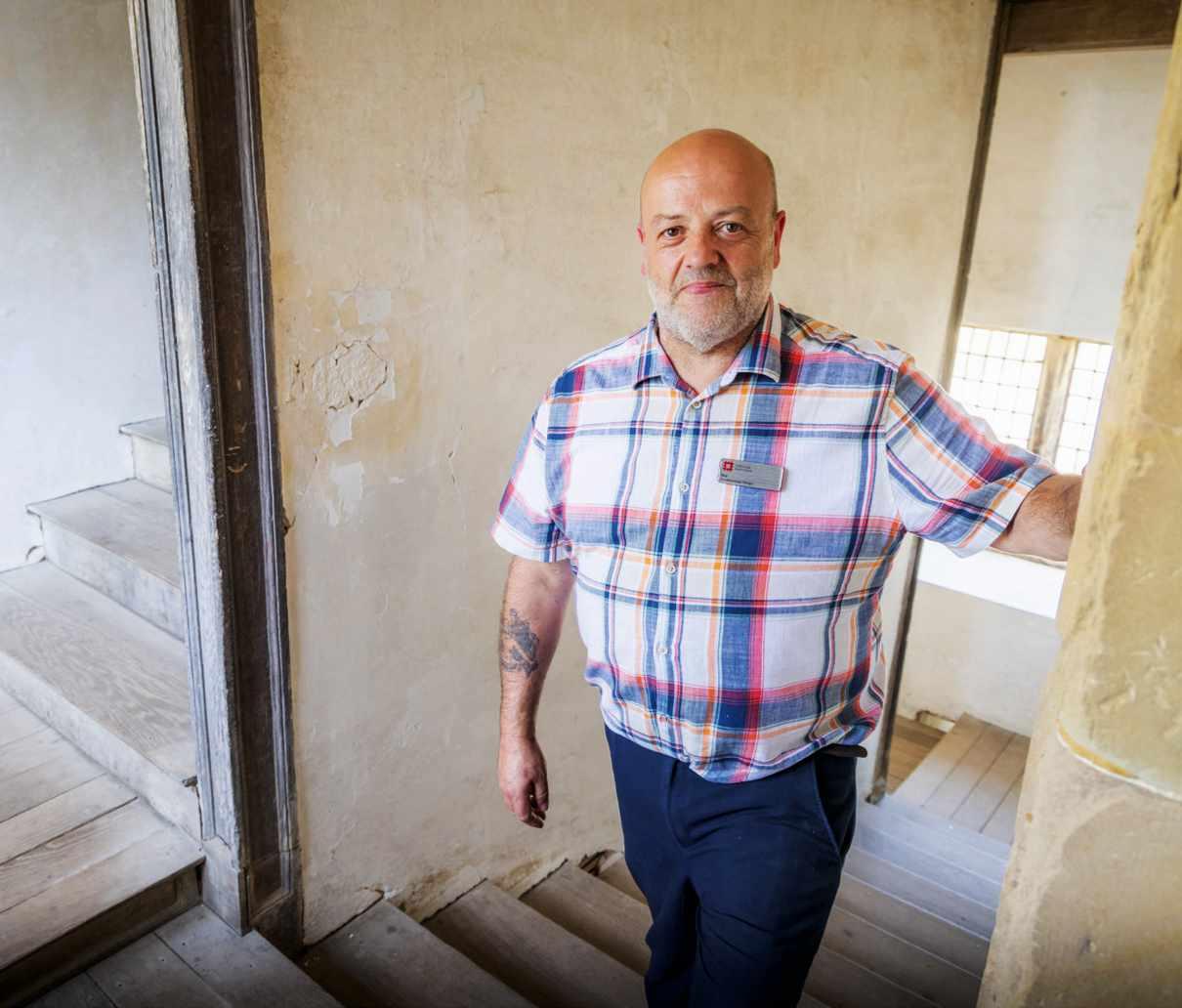

Top Site manager Richard Shaw describes the unusual things he has seen at Bolsover Left Food and beverage manager Paul Lucas has had several unsettling experiences at the castle
Don’t miss the chance to visit the spectacular ruins of nearby Sutton Scarsdale Hall
see his face, but he had quite long hair, like in the 1970s.’ The man vanished. Shaw looks down at his arms. ‘My hairs are standing up now just talking about it.’ Shaw brings out a large, ruled notebook, where visitors have been encouraged to record their own spooky experiences at the castle. Inside are accounts of hearing the screams of children or the clattering of armour, smelling cooked pork and smoke from empty fireplaces, and of seeing a ghoulish hanging figure.
Strangely, it’s this modern building, with its squeaky doors and ’70s spectres, that is ‘one of the most active’, says Shaw. ‘It’s built on the site of the old castle keepers’ cottages.’ As for the rest of the site, where he is often left alone to open or lock up, ‘it always feels fine’. But he adds darkly: ‘There’s one place I don’t like going.’
When he first started his job a couple of years ago, he went around the site, checking the ‘fire action’ notices. The riding school wasn’t a space he needed to check but, as it was an area he hadn’t seen before, he was intrigued to look and stopped at the doorway. ‘I just stood there thinking, “I can’t go in.” I can’t describe it, it just felt really weird, to the point where I said out loud, “I’m not coming in.”’ He says he has only been back a couple of times since.

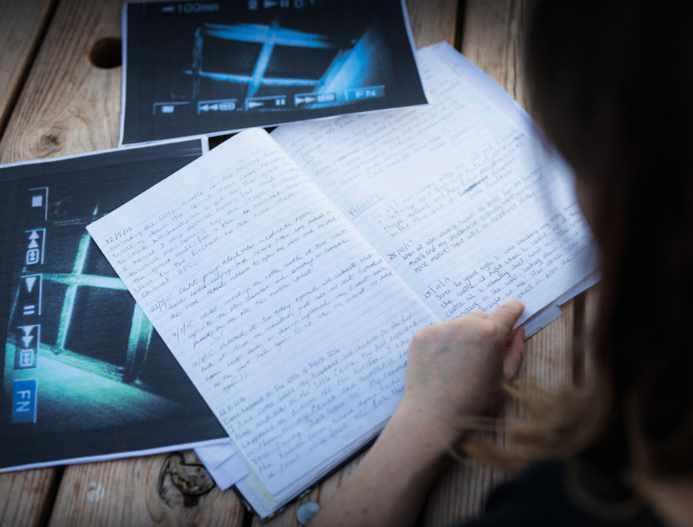
Top Visitors and staff are invited to record any creepy occurrences at the castle in a book
Earlier, I too had ventured into the old riding school and found it deeply creepy. Paul Lucas had taken me there, to describe what had happened when he was locking up, late one night, after an event. Standing at the foot of the stairs, he heard six or seven bangs, noisy footsteps perhaps, or someone knocking at the door. He walked up the stairs, his torch lighting the way, as he shouted ‘hello?’, expecting to see someone. He searched the first floor but there was nobody there. So, he headed up to the second floor – a stark, empty attic space with a pitched roof and wooden beams that feels spooky, even in daylight. ‘It’s worse at night,’ says Lucas. On the night of the mysterious ghostly bangs, he remembers getting out of there fast.
I’m relieved, then, when Kate Vigurs doesn’t take me to the attic of the riding house. Instead, we head down to the floor below, where she tells of sightings of ‘a lady in a pale blue dress’, who may or may not be William Cavendish’s wife, Margaret. Across the courtyard, at the old copper beech tree, she describes sad reports of a ghostly boy who plays with child visitors, or who slips his hand into
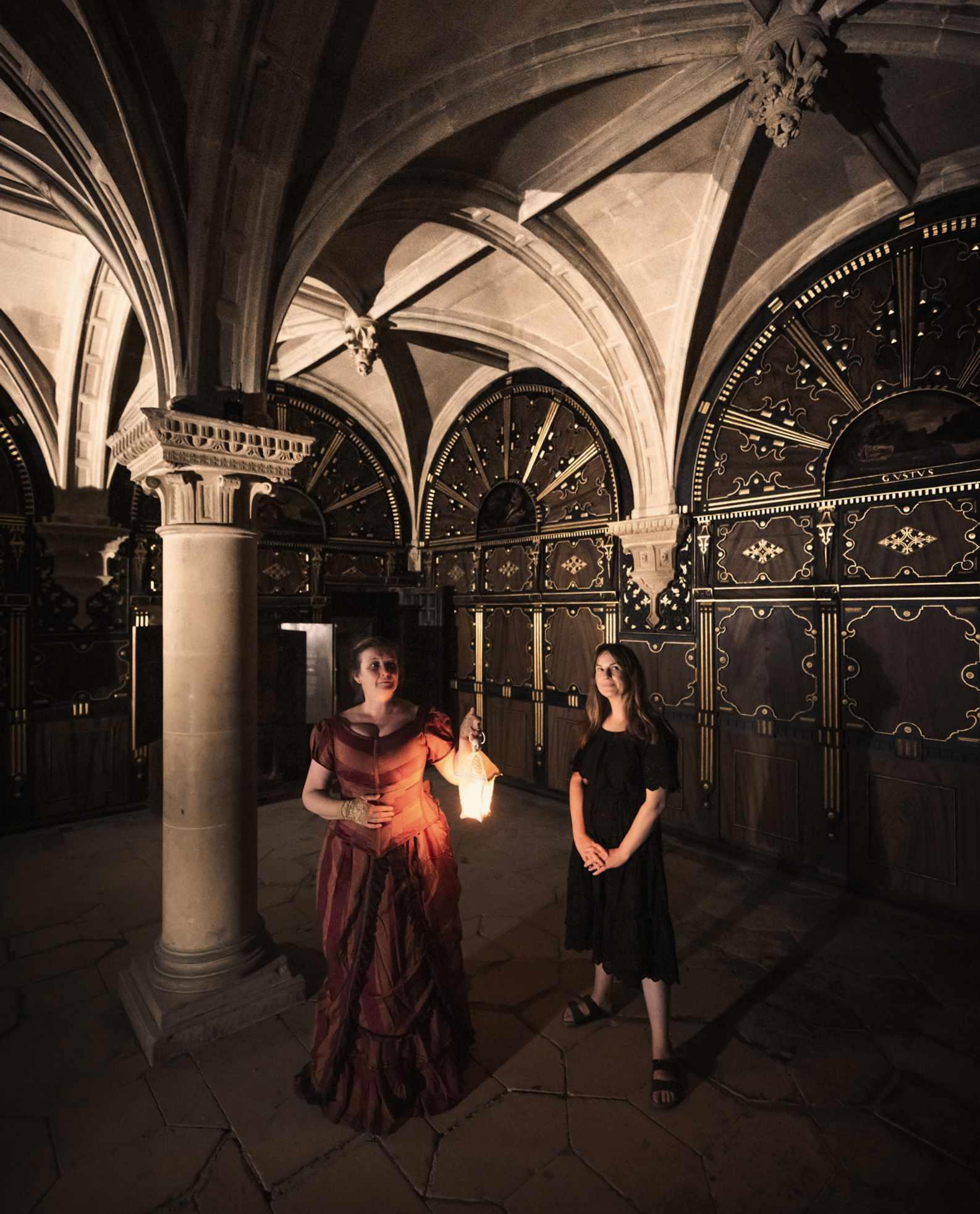
the hand of a female visitor. ‘Perhaps space and time bear the scars of something terrible that happened here,’ she says. ‘Perhaps he once climbed its branches and, maybe misjudging a branch or losing his balance, he toppled to his death. Or maybe he was abandoned here.’
She’s an engaging storyteller but I ask if she has had any unexplained experiences of her own. Not exactly, she says, although she once saw a shadow flash past in a corridor in the small castle and also recalls seeing some floating, glowing orbs of light in front of the castle on another night.
‘Standing at the foot of the stairs, he heard six or seven bangs’
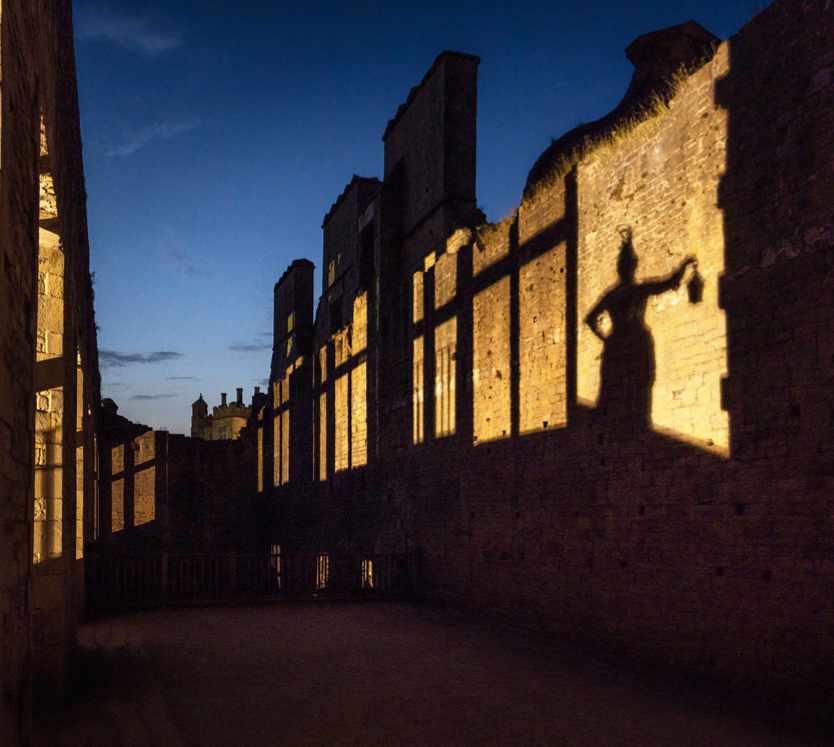
The paintings in the Little Castle lead up to the Elysium Closet and its depictions of hell
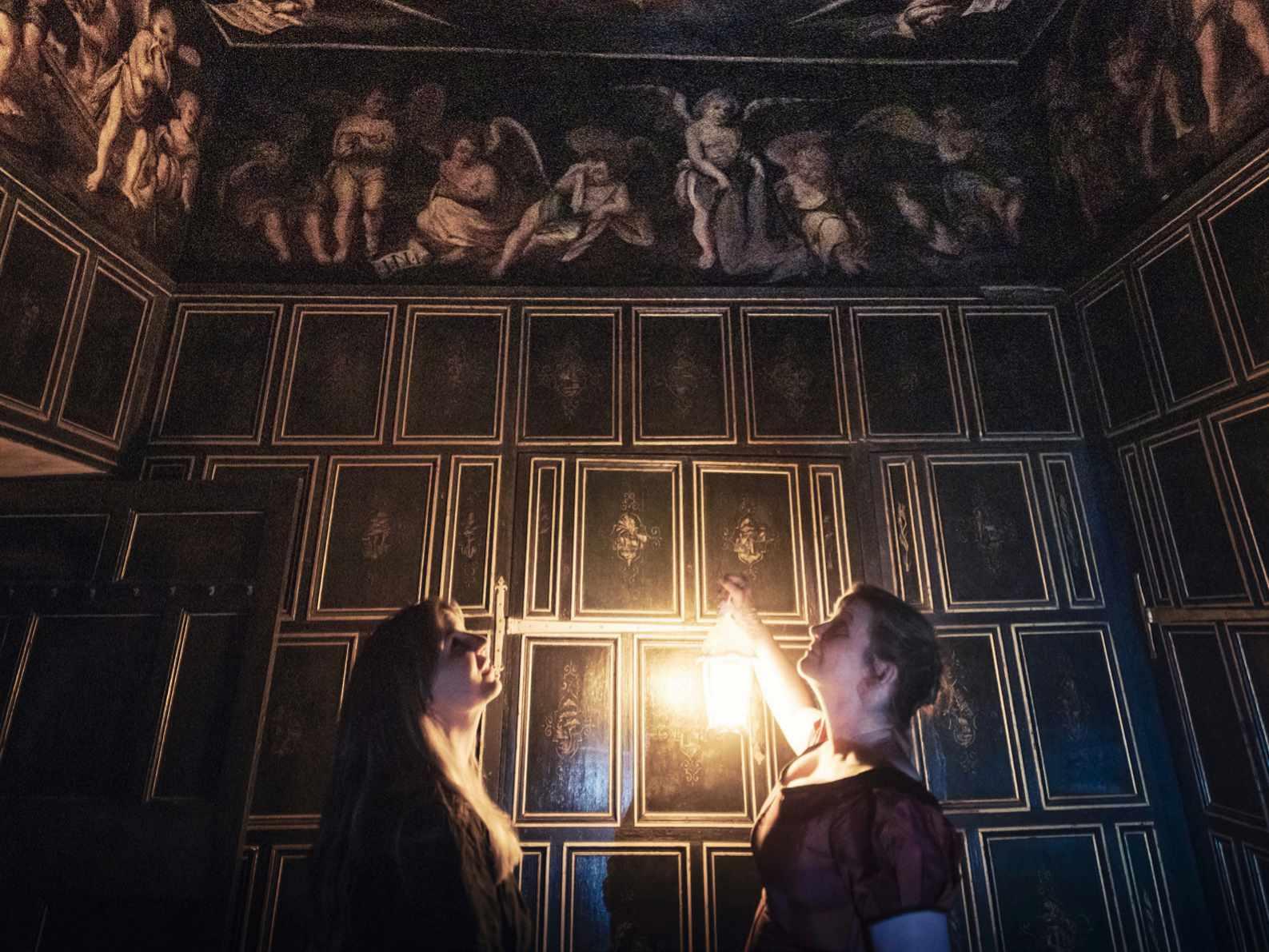
Others on her tour took photographs. ‘What they were or who they were…’ She doesn’t finish the sentence.
At the Little Castle, Vigurs pauses at the entrance. ‘I always ask permission to go inside because you’re never quite sure who might be here.’ I follow her down stone steps to the kitchens and rooms that are suddenly, shockingly cold. Castle kitchens are deliberately chilly, of course – we’re underground, and the stone walls are thick, so it’s perfectly explainable – but the change in temperature is unsettling. ‘The wail of a baby can sometimes be heard here,’ says Vigurs.
in them, but Vigurs shows me where, on a ghost tour she ran, a visitor reported seeing a dog outside the window.
High up, and with no way to the balcony from the ground, it couldn’t have been an earthly stray, so they decided it may have been a ghost of the Labrador owned by a Victorian vicar, who was one of the more recent and final tenants.
‘On a ghost tour, a visitor reported seeing a dog outside the window’
(Earlier, Richard Shaw had shown me blurry printouts from footage of this exact moment. I wasn’t convinced, but squint and it could look like a dog with glowing eyes.)
Don’t miss our Halloween quests and tours for all ages
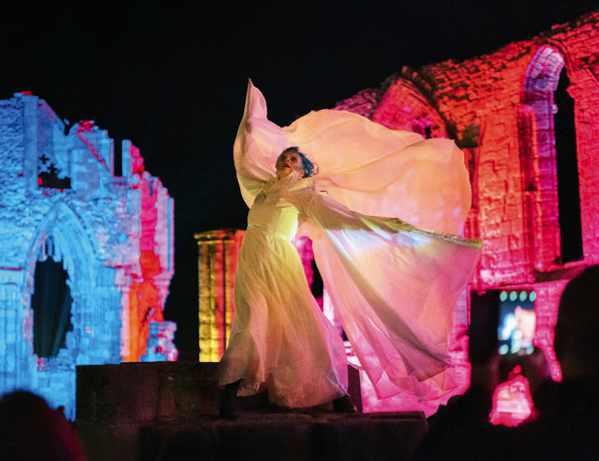
Halloween Quests (with Beano) Sat 22–Sun 30 Oct, 10am–5pm
We’ve teamed up with your favourite Beano characters to bring you Halloween quests with a twist this October halfterm!The events are taking place at sites across the country, including Bolsover Castle in Derbyshire, Pendennis Castle in Cornwall, and Carisbrooke Castle on the Isle of Wight (15–30 Oct).
Spooky Woodland Walk
Thu 27–Sun 30 Oct, from 5pm
Join our ghost-hunting storytellers on a family-friendly walk through our woodlands at sites across the country, including Audley End House and Gardens in Essex,Wrest Park in Bedfordshire and Belsay Hall and Gardens in Northumberland.This is an outdoor early evening tour lasting around 45 minutes, ideal for families with children aged 5–12.
Thu 27–Mon 31 Oct, from 6pm
Upstairs, in the rooms where William Cavendish was known to hold wild parties, gilt designs on panelling glint in the lamplight and paintings depict sensual pleasures. On the floor above is his chamber, with two rooms off it on either side, with wall paintings depicting images of heaven and hell, says Vigurs. On this point, English Heritage is a bit less dramatic, referring to the ‘hell’ room as the Elysium Closet, where ‘erotic love is celebrated’. It’s too dark to see the murals of nudes Cavendish had painted
We head back downstairs. By now it’s well past midnight. Chris, the photographer, thinks he hears voices.
‘The place really feels like it’s still lived in,’ notes Vigurs. I agree. Maybe it’s the compact size, or its well-preserved condition. Or just maybe it’s because we’re not alone.
To plan a visit to Bolsover Castle and find out more about its ghost tours, go to www.english-heritage.org.uk/bolsover
Have you got the nerve to explore a selection of our most haunted sites on these spine-chilling after-dark Halloween tours? Join our storytellers at 10 sites across the country, including Bolsover Castle in Derbyshire, Dover Castle in Kent and Scarborough Castle in NorthYorkshire.These early evening tours last around 45 minutes and are suitable for visitors aged 16-plus.
To book your tickets now, go to www.english-heritage.org.uk/events
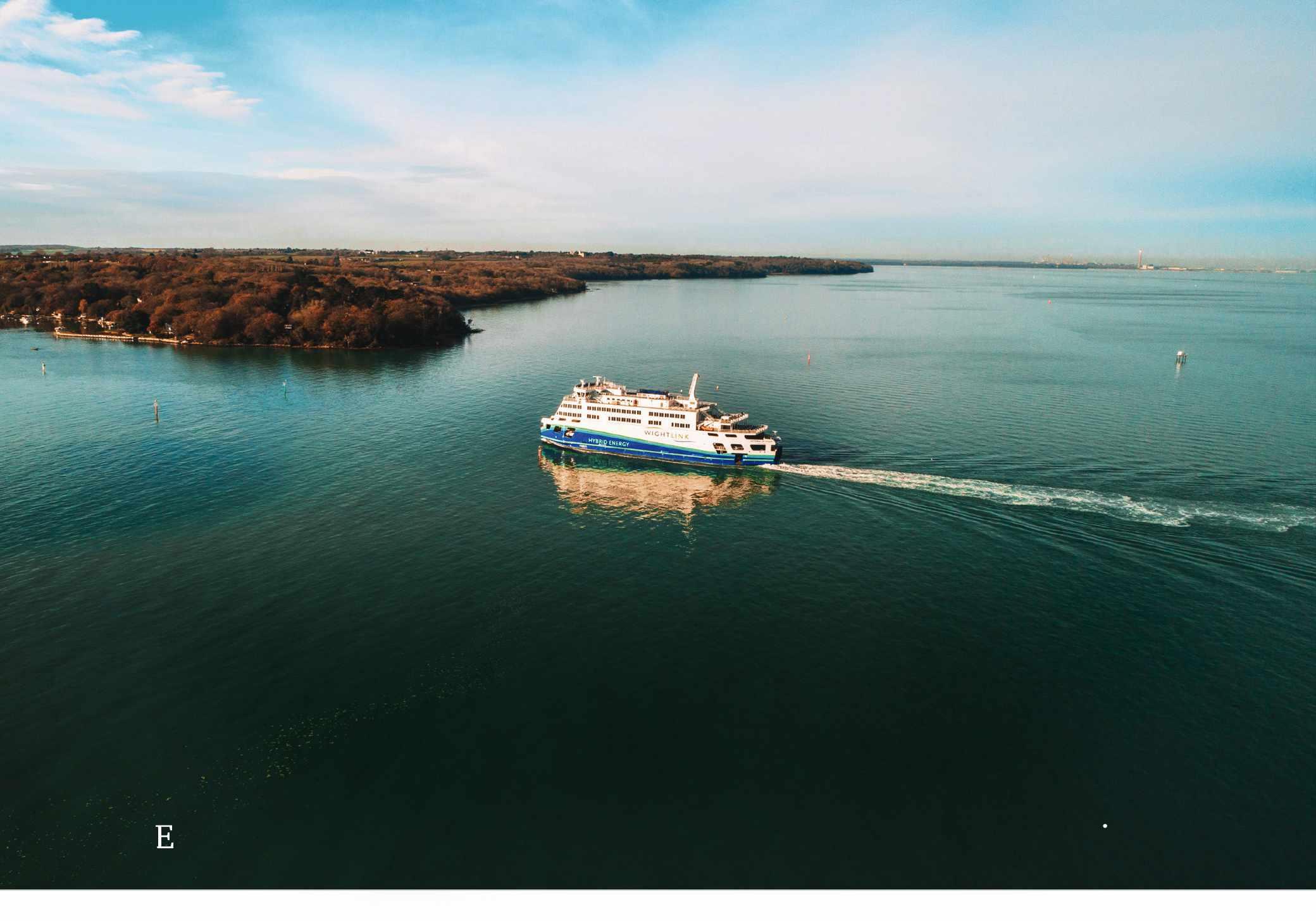
Explore this stunning island for less when you travel with Wightlink xplo thi stun ng is an s h n y u tr v l Wig lin
ust 40 minutes. That’s all it takes to reach the Isle of Wight with Wightlink – or a mere 22 minutes on foot passenger sailings – after which you can be enjoying crystal blue seas, rolling hills, a warm breeze and breathtaking scenery. And as an English Heritage Member you can enjoy 15% off car tickets and 20% off foot passenger tickets.
Exploring the island
So why is the Isle of Wight one of the UK’s best places to visit? With its own microclimate, temperatures are usually one to two degrees higher than on the mainland. You’ll find more awardwinning beaches than anywhere else in England, 200 miles of bike paths through scenic countryside and a 68 mile-long coastal path to explore on foot.
Over half of the island is a designated Area of Outstanding Natural Beauty, and in 2019 it became a UNESCO Biosphere Reserve, reflecting a commitment to ensuring that wildlife and plants thrive.
As an English Heritage Member, there are plenty of fascinating places to visit. A trip to the Isle of Wight isn’t complete without seeing Osborne, Queen Victoria and Prince Albert’s sumptuous home near Cowes. If you’re a castle fan, don’t miss Carisbrooke Castle, which has its own resident donkeys, and coastal fortress Yarmouth Castle – with one of the best picnic spots on the island. You can also explore Appuldurcombe House, which was once the grandest house on the Isle of Wight, and the medieval St Catherine’s Oratory on the picturesque Tennyson Heritage Coast.
There are many reasons that Wightlink has been awarded numerous accolades. On board you’ll find state-of-the-art facilities, including free Wi-Fi, a wide selection of Isle of Wight-sourced food and drink, a dedicated pet area and colour-coded vehicle decks to make it easier to find your car. There’s also plenty

of seating, from which you can enjoy panoramic views.
Preserving the beauty of the island and the rest of the planet is important to Wightlink, so it has pledged to achieve net zero carbon emissions within the next decade. Leading the way is Victoria of Wight, its hybrid-energy flagship ferry. Wightlink has also introduced a host of environmentally friendly initiatives, including recycling 99% of all waste and no longer using single-use plastic cutlery.

As an English Heritage Member, you can save 15% on car and motorbike tickets and 20% on foot passenger tickets on all Wightlink routes.To book your ferry tickets, head to www.wightlink.co.uk/ englishheritage





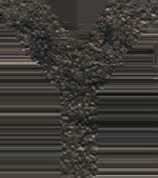
There’s no better way to share season’s greetings than with our Victorian Christmas collection he e’ o etter wa o s a e s aso ’s r e ing th ith o r Vi r C tm colle t n

Spread some festive cheer with our new collection inspired by Victorian Christmas traditions – and you’ll be supporting English Heritage’s vital conservation work at the same time. These magical images of woodland creatures have been exclusively designed for English Heritage, and evoke classic seasonal motifs that are matched with vibrant colours for a more contemporary feel. As well as a box of Christmas cards, with four different designs printed using vegetablebased inks, the range includes a delicious selection of chocolate bars Who could resist?
g ludes d li u on f c o at
Choose from six flavours of chocolate bars, which are produced by Choc Affair, a family-run York-based chocolatier that handmakes luxury products using ethically sourced ingredients





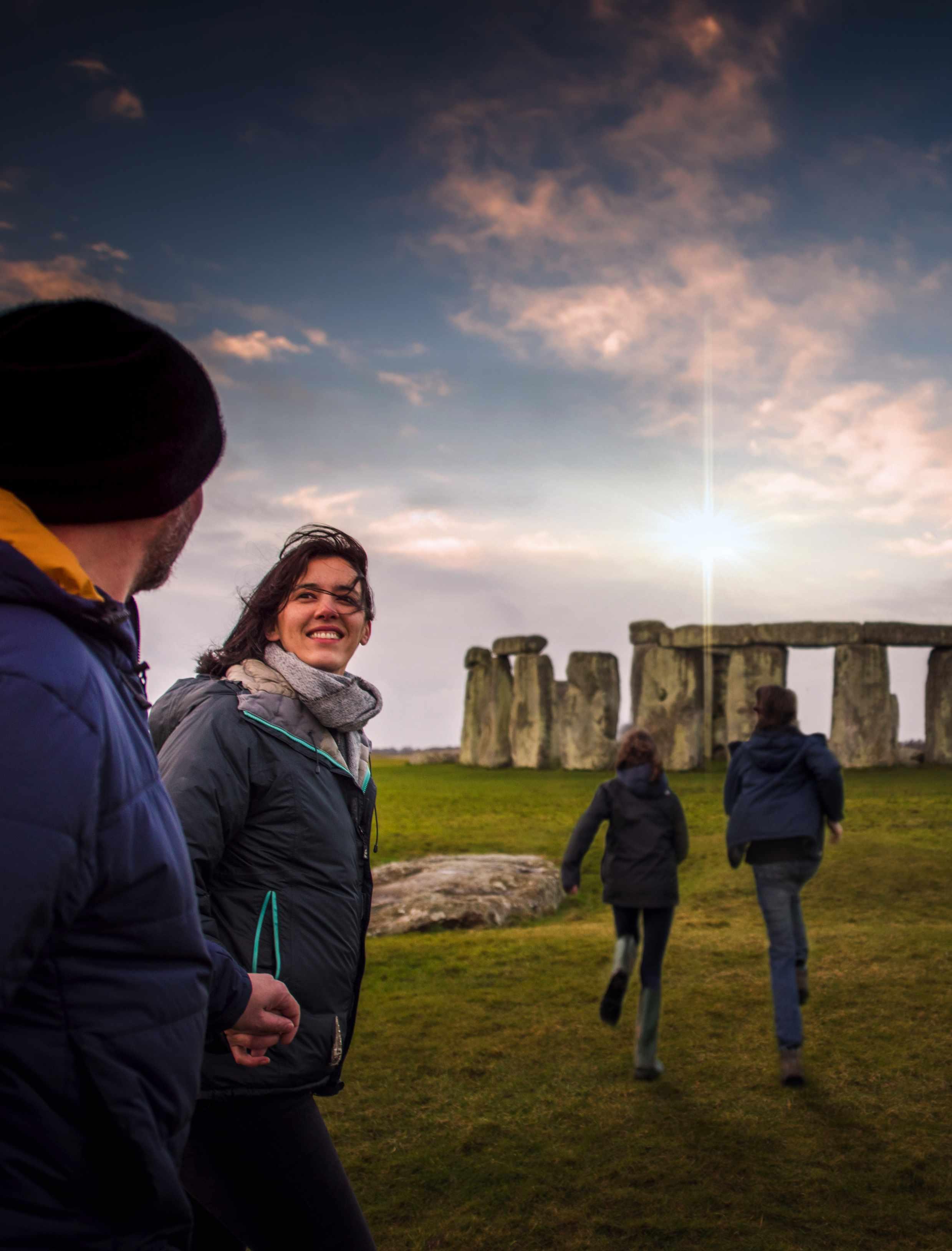
As the new school year gets underway, it’s the perfect time to help your children learn about England’s history while enjoying a family day out. Here are some of the best sites for exploring key periods covered in the curriculum

Stay local and explore history closer to home with over 400 sites across the country – visit www.englishheritage.org.uk/ visit/places to find places near you
If your children are studying prehistory, a visit to the world’s most well-known prehistoric stone circle is a fantastic place to start. At Stonehenge, kids can really get to grips with prehistoric life, design and engineering – and the enduring mysteries of the site are sure to spark their imaginations.
As well as the awe-inspiring stone circle, there are Neolithic houses to explore, where volunteers show what daily life would have been like. The visitor centre tells the story of Stonehenge through objects, photographs and multimedia exhibitions. Kids will love seeing everyday objects from the era, such as jewellery, pottery and tools –and will no doubt find the human remains intriguing too.
Grime’s Graves in Norfolk is a lesser known but no less fascinating prehistoric site. Set in a lunar-like landscape caused by hundreds of years of activity by Neolithic flint miners, it’s one of only 10 Neolithic flint mines in the country – and the only one that’s open to visitors.
Climb down a 9-metre shaft to see jet-black flint glinting underground and get a feel for how Neolithic miners would have toiled under the earth. You can also learn more about how the mine was used a site for sacred ceremonies.
(Please note that children under seven aren’t allowed into the mine shaft itself.)
A new ladder means there is now improved access to
one of the mines at Grime’s Graves
It’s one thing to create a Roman mosaic in school but another to see an original in situ. You can experience the real thing at Lullingstone Roman Villa in Kent and Wroxeter Roman City in Shropshire – two sites that give a real feel for day-to-day life from this period. Built for a wealthy family in AD 100, Lullingstone is one of the best-preserved villas in the country. Step on to the elevated walkway and the light installation will highlight the archaeology below, including the remains of walls, floor mosaics and rare wall paintings.
While Lullingstone shows children what an individual villa would have looked like, at Wroxeter Roman City they can see a whole collection of buildings from the era. Visitors can explore the remains of the bathhouse, look up at the 7 metre-high Old Work (the largest piece of freestanding Roman wall in the country), and stand in what was once the forum and market hall.
If you want to know more about the Roman army, the sites of Hadrian’s Wall in Northumberland and Cumbria should be on your to-visit list. There are three forts –Housesteads, Chesters and Birdoswald – all of which have extensive remains for young feet to run around, and Birdoswald includes an interactive exhibition with lots of hands-on fun. There is also the frontier town, Corbridge. The most northerly town in the Roman Empire, it was home to merchants and traders who played a key role in supplying the frontier. Follow in the footsteps of the Romans as you walk their high street, then find out about daily life through the spectacular museum display.
‘Follow in the footsteps of the Romans as you walk their high street’
Housesteads, Chesters and Birdoswald forts have extensive remains
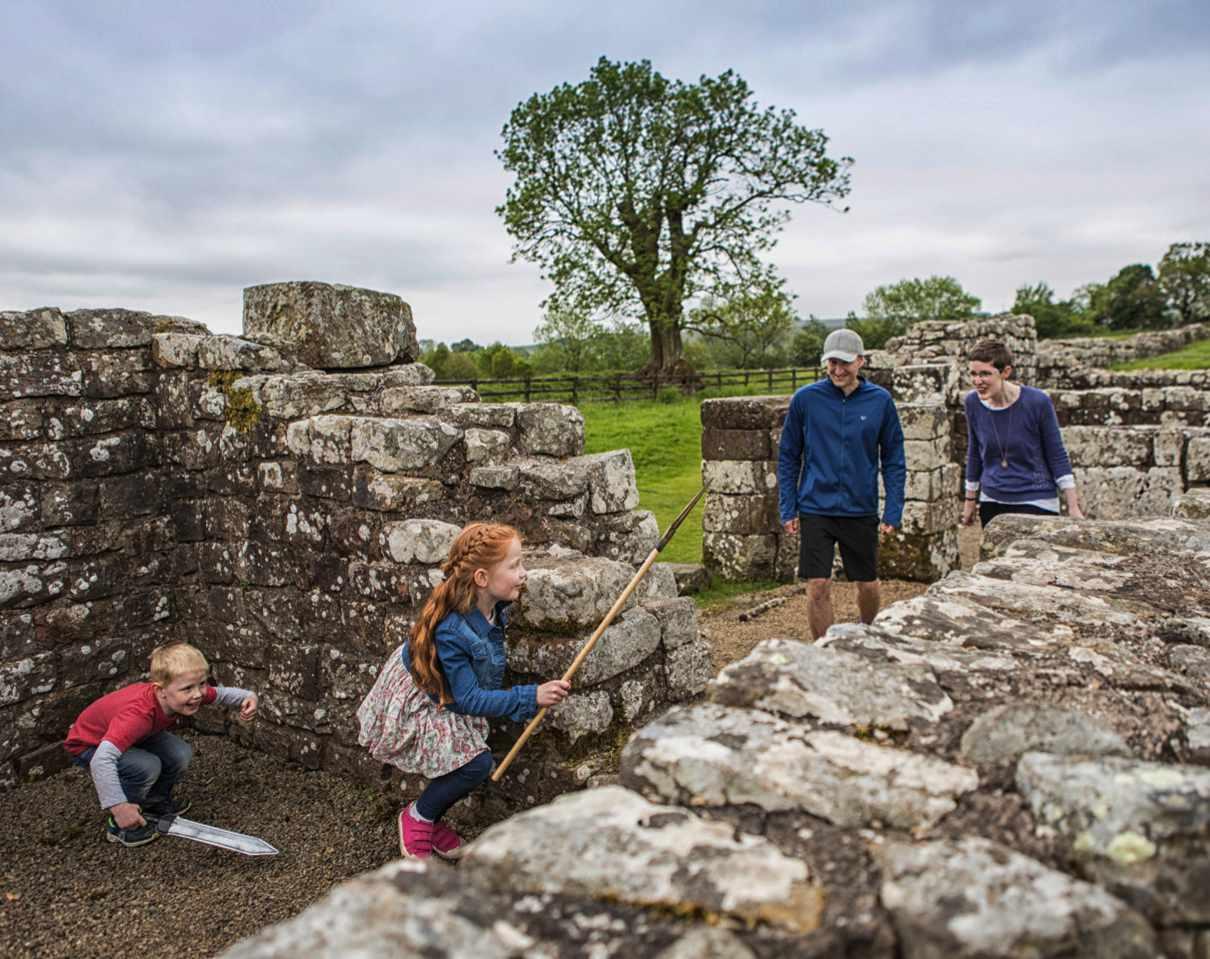
museum before roaming its wide open grounds
As a Member you get free entry for up to six children within the family group
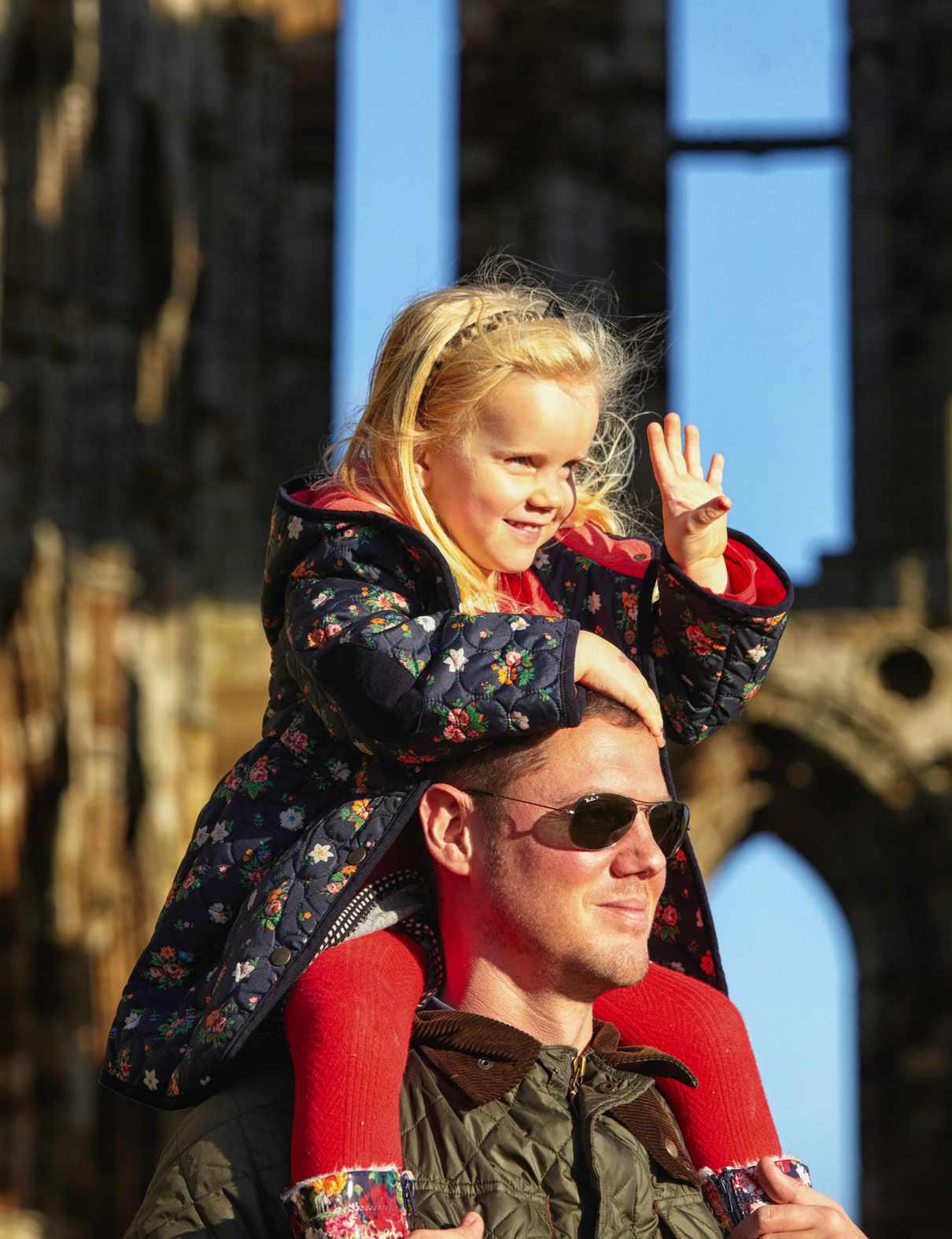
In 1539 Henry VIII commissioned a series of castles to defend the country from invaders, and Deal Castle in Kent is one of the finest examples of these coastal fortresses. You can walk along the battlements with their sea views, wander passageways underneath the keep, and pretend to be a Tudor soldier with a wooden firearm. You could also cycle or walk the mile-and-a-half along the beach to Walmer Castle and Gardens, another of Henry’s coastal forts. Head to Kenilworth Castle and Elizabethan Garden in Warwickshire to follow in the footsteps of Henry’s
daughter, Elizabeth I. Originally a medieval stronghold, Kenilworth was transformed into a lavish palace by Robert Dudley, Earl of Leicester, to impress his queen. Interactive displays help to bring the Tudor era to life, while kids can enjoy dressing up like a Tudor with the fancy-dress box. In North Yorkshire, the ruins of Rievaulx Abbey are well worth a visit to learn about the Reformation and Henry VIII’s Suppression of the Monasteries. Founded in 1132, the abbey was forcibly shut down in December 1538 and the buildings dismantled. A museum further illuminates the story of the abbey’s rise and fall.
The Anglo-Saxon period of history spans a huge amount of time – six centuries – and takes in the breaking up of the Roman Empire into separate kingdoms, Viking battles and religious change. It’s a long period to grasp, so a trip to Whitby Abbey in North Yorkshire can give kids a great flavour of Anglo-Saxon life. While the building you can see today was built in the 13th century, concealed beneath the arches are remains of the original Anglo-Saxon monastery. Founded in the 7th century by St Hild, it became one of the most important religious centres in the country. The building may not be visible, but its legacy lives on in tales of saints, poets and miracles, which you can learn about during your visit. The Anglo-
Saxon age came to a violent end at the hands of William the Conqueror – and there’s nowhere better to learn about the Normans than at the sites where they landed and fought. William the Conqueror’s army landed at Pevensey Castle in 1066. Originally a Roman ‘Saxon shore’ fort, twothirds of the walls still stand, allowing for climbs up to the battlements. Just a 20-minute drive away is 1066 Battle of Hastings, Abbey and Battlefield. Kids can stand on the very spot where England’s future was decided. Set the scene with the multimedia exhibition, then roam the battlefield. Elsewhere, Portchester Castle, originally a vast Roman fort, was later transformed in a Norman castle – kids will love exploring the magnificent Norman keep.
‘Concealed beneath the arches are the remains of the original Anglo-Saxon monastery’

Kenilworth is one of England’s most spectacular castles and once stood at the heart of a vast hunting ground

Listen up Listen to episode 105 of our podcast, on the story of Lindisfarne Priory, which includes everything from saints to Viking raids. www.englishheritage.org.uk/ podcast
Can’t get out this weekend? Why not explore some of our history at home resources instead…

Did you know we have a dedicated kids’ area on our website? It’s a great place to start when you want to help children learn about different periods of history. Head to www.english-heritage. org.uk/kids and you’ll find articles, games, posters and quizzes, covering prehistory right up to the World Wars.
If your kids are more visual learners, the English Heritage YouTube channel (youtube.com/ englishheritage) is packed full of fascinating videos and regularly updated with new content. This includes our ‘What was life like?’ series, in which young Members meet historic characters at our sites. You’ll also find historical make-up tutorials, historical how-tos and our brand new Kids Rule! TV series, providing a fun romp through the ages.
Older children will enjoy our Google Arts & Culture site (artsandculture.google. com/project/englishheritage), while you can find out about teaching resources and school visits at www. english-heritage.org.uk/ learn. As a Member, you also get access to our exclusive Members’ events, including a new virtual lecture series to look out for this winter.
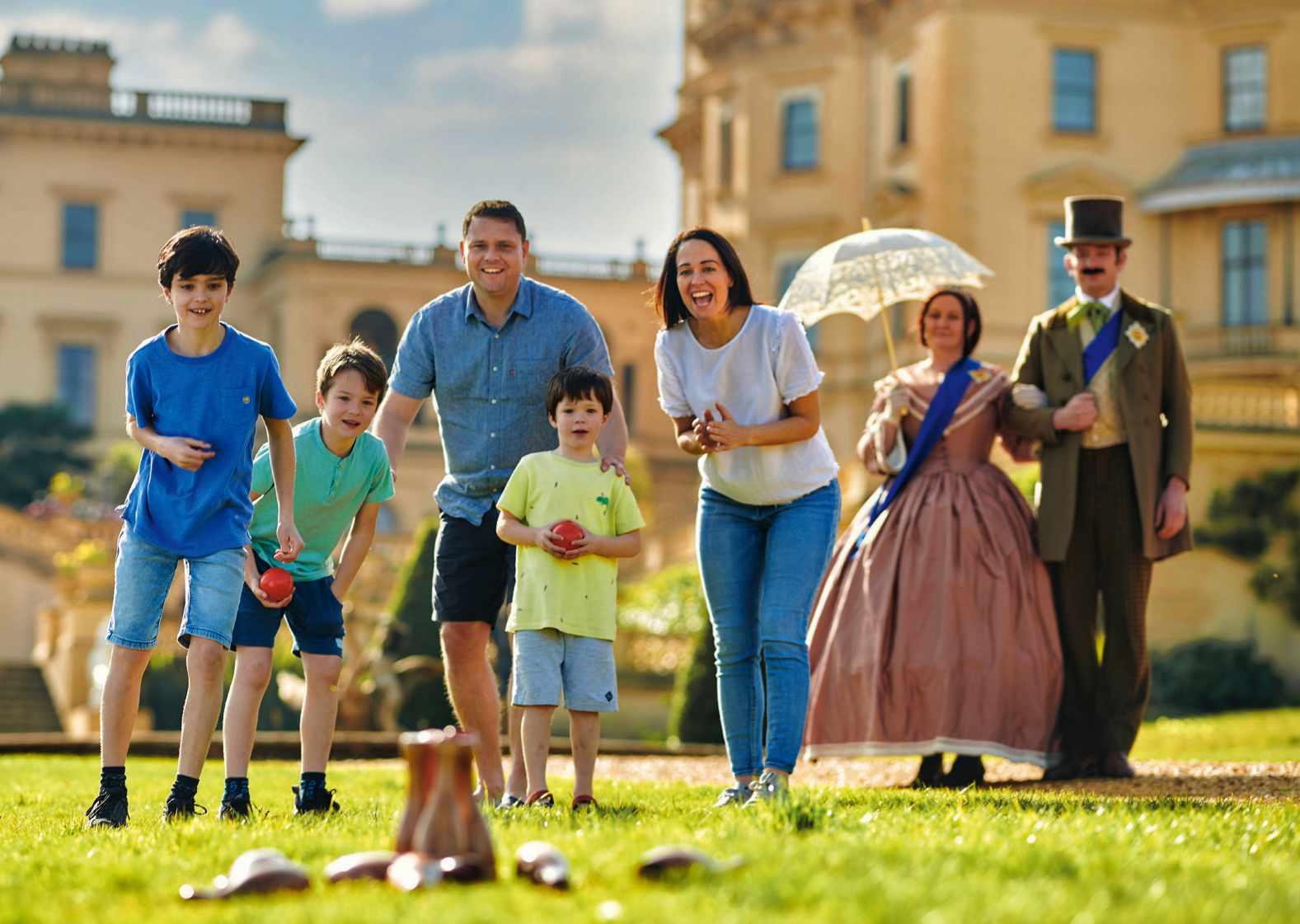
Explore more time periods with your kids, from prehistory to the World Wars, at www.englishheritage.org.uk/ kids
Osborne on the Isle of Wight was the summer retreat for Queen Victoria and her family, and it’s the perfect place to get an intimate glimpse into royal family life, with access to private rooms and the Swiss Cottage where the royal children learned and played. Back on the mainland, discover more about Charles Darwin’s life and work at Down House in Kent – you can see the very study where he wrote On the Origin of Species. You can discover life ‘upstairs and downstairs’ at
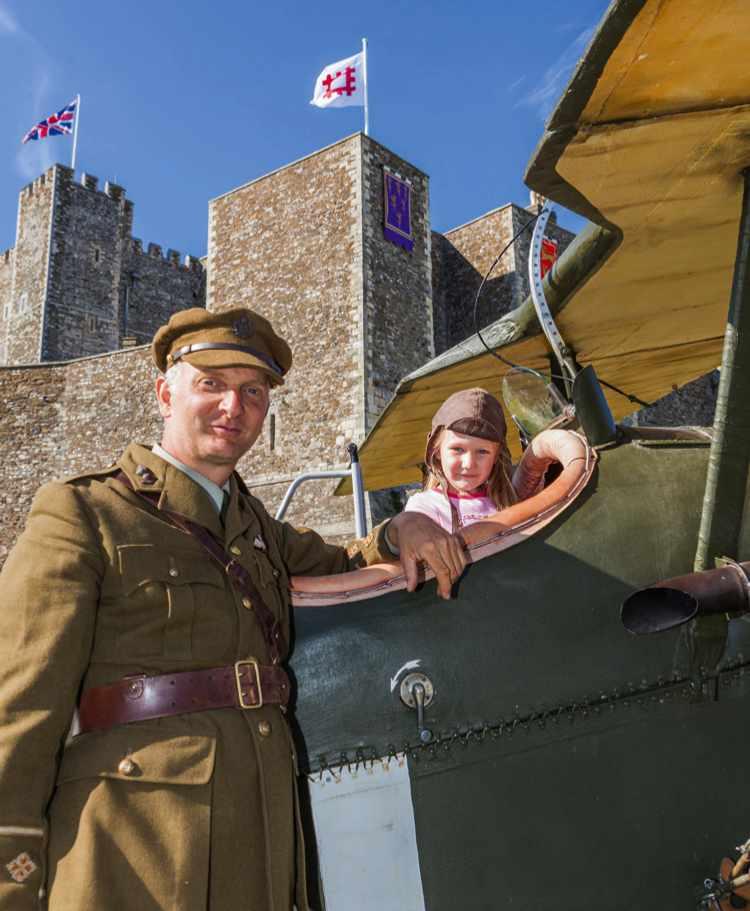
Audley End House and Gardens in Essex, where you can explore the working kitchen, gardens and stables alongside grand rooms. There’s even the opportunity to meet Victorian cook Mrs Crocombe and other servants on certain days throughout the year. Another great place to experience the grandeur of Victorian country living is Brodsworth Hall and Gardens in South Yorkshire. There are family activities during school holidays, and the gardens are great for adventures at any time of year.
There’s been a fortress on the site of Dover Castle in Kent since the Iron Age – not surprising when you consider its position overlooking the English Channel towards France. And the castle played a crucial role during the Second World War. The evacuation from Dunkirk was masterminded in tunnels beneath the castle, and an immersive underground exhibition takes you right into the heart of the story. At the other end of England’s south coast lies Pendennis Castle in Cornwall, another of Henry VIII’s forts. During the Second World War it was in control of coastal defences for the area. It’s a great opportunity to see real-life weapons from the era, with volunteer-led talks on certain days showing how they worked.

A voyage exploring the wonders of the Aegean & beyond aboard the MS Monet 10th to 20th July, 2nd to 12th September* & 2nd to 12th October 2023
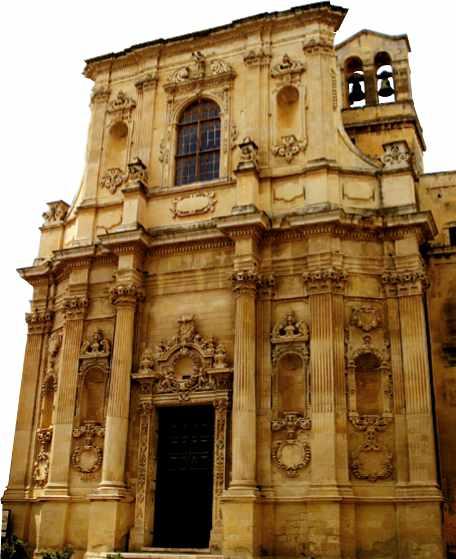
Anyone who has sailed through the Aegean and along the Adriatic Coast will tell you that it is one of the most beautiful places on earth and if you enjoy sailing aboard a delightful small ship with a varied programme of interesting visits ashore then this could be the perfect voyage. From Athens we will sail to the wonderful Croatian port of Dubrovnik aboard the 50-passenger MS Monet, our itinerary taking us off the beaten track to many places with great natural beauty and an intriguing history that are beyond the reach of the mega-cruise ships.
Our voyage begins in the Peloponnese which is home to an extraordinary collection of great archaeological sites with tangible traces of the many civilisations which have at one point over the course of history called this region home During our exploration of the region we will visit the picturesque port of Nafplio, the Byzantine city of Mystras, the magical castle town of Monemvasia and learn of the sporting history of Olympia. Upon leaving the Peloponnese we ensure we stay a little off the beaten track with our visit to the delightful town of Vathy on the legendary island of Ithaca Upon reaching the heel of Italy we will spend three days discovering Puglia’s many gems From traditional trulli abodes to splendid Baroque architecture and 15th century palazzos, we will explore the region in depth with local guides. As we continue along the Adriatic coast of Italy and across to Montenegro, a highlight for many will be our exploration of Kotor, Montenegro’s 14th century walled fortress town, a fitting final call before our voyage ends in Dubrovnik.
MS MONET is a 220 foot motor yacht accommodating a maximum of 50 guests Cabins are designed for comfort and have a warm and inviting feel with light fabrics and wood trimmings Cabins feature an en-suite bathroom with shower, television, minifridge, safety deposit box, air-conditioning and hairdryer The public areas include a main lounge and bar with comfortable sofas and the Sun Deck which provides a delightful space with sun loungers and a Jacuzzi, ideal for relaxation and wonderful views The indoor dining room seats all passengers in a single sitting with unassigned seating and allows for wonderful panoramic views of the stunning scenery as we sail The Lumiere Open Deck provides a generous covered area where guests can enjoy meals al fresco, weather permitting
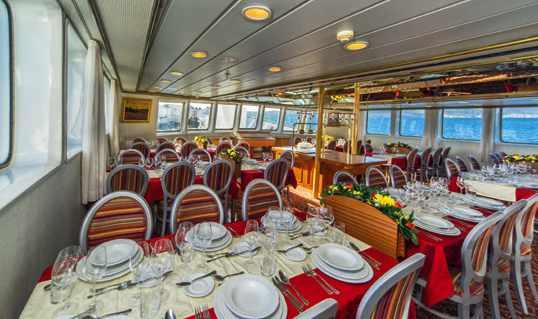
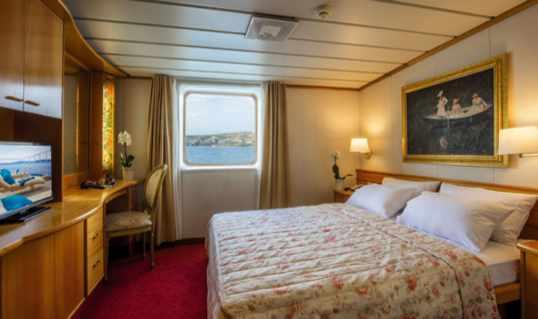







Day 1 London to Athens, Greece Fly by scheduled flight Arrive this afternoon and transfer to the MS Monet in Piraeus Sail this evening
Day 2 Nafplio, Mycenae & Epidaurus. Today there will be a choice of guided tours, maybe visit Epidaurus, one of the most renowned of Greece’s ancient sites which was known throughout the Hellenic world for its unique medical facilities and healing treatments Most of the ruins of Epidaurus have been reduced to their foundations, with the exception of the astonishing theatre which is in an admirable state of preservation Alternatively visit the famous citadel of Mycenae where we will explore the Royal Palace, the shaft graves and the remains of the city walls An archaeological briefing within the Treasury of Artreus will add to our understanding and appreciation of the sights Return to Nafplio and enjoy the afternoon wandering the twisting labyrinthine streets
Day 3 Monemvasia. This is a magical place
A massive rock rises dramatically out of the sea and on top there is a fortress. However, the real attraction is the Medieval town On a morning walking tour we will visit the town and have some free time to enjoy there, perhaps climb up to the fort to enjoy the views from the plateau before returning to the ship for lunch Sail in the mid afternoon
Day 4 Kalamata & Mystras From our berth in Kalamata we head inland to Mystras, a remarkably intact Byzantine hillside town that once housed a
population of 20,000 people Here we visit the Cathedral of Agios Dimitrios and strolling through the narrow lanes of the dead city, we will also visit the Church of Agia Sophia, the Palace of the Despots and the Monastery of Pantanassa, with its brilliant frescoes Before returning to the vessel for lunch, refreshments will be served at the picturesque tavern located just beneath the site offering sweeping views The afternoon is free to enjoy at leisure
Day 5 Katakolon for Olympia. The fame of Olympia rests upon the Olympic Games We will see the gymnasium, the stadium and the palestra or wrestling school We will also explore the Altis, or sacred precinct of Zeus, which houses structures including the Temple of Zeus, one of the largest temples on the Greek mainland and the Archaeological Museum
Day 6 Vathy, Ithaca Ithaca, one of the most legendary of all Greek islands is unspoiled by tourism yet has a fascinating history The morning is free to enjoy this delightful town and harbour at leisure or join a tour of the island and explore the ruins of Stavros and the Medieval capital of Perachori with its Byzantine and Venetian architecture Return to the ship for lunch and an afternoon at sea as we sail to Puglia
Day 7 Otranto & Lecce, Italy After breakfast we will drive to Lecce, often referred to as ‘The Florence of the South’ with its amazing collection of Baroque architecture. A guided walk will include a visit to the beautifully decorated Santa Croce Basilica and Piazza Duomo, considered one of the finest and most impressive squares in southern Italy We return to the ship for lunch and the afternoon is free to explore Otranto independently
Day 8 Brindisi & Ostuni From our berth in Brindisi we head to the “White City” of Ostuni, so called due to the almost blinding sunlight reflecting on the walls of its whitewashed dwellings The town has maintained its Medieval atmosphere which we will experience as we walk through the meandering, narrow and picturesque streets of the old town which lead to the impressive 15th century cathedral, a beautiful example of Apulian Romanesque style Spend the afternoon at leisure in Brindisi
Day 9 Monopoli & Alberobello. Today we drive into the Puglian countryside which is scattered with
‘trulli’, limestone dwellings built with dome or conical roofs We will enjoy a pleasant walk in Alberobello, a fairy-tale trulli village and a UNESCO World Heritage Site and see the St Anthony Church also built in trullo style Afterwards we visit ‘Cantina Albea’ and its wine museum where we will enjoy a tasting along with a talk on the wine production Return to the ship for lunch and a free afternoon in Monopoli where you can wander through the historic centre
Day 10 Kotor, Montenegro. Be on deck this morning as we sail through the stunning fjord-like scenery into Kotor On arrival we will take a morning walking tour to explore this Medieval town and UNESCO World Heritage Site This really is an extraordinary place full of marvellous architecture and pretty town squares Our tour will include the 12th century Cathedral of St Tryphon, the ancient town gates, the Maritime Museum and Romanesque churches including St Luke’s Return to the ship for lunch and enjoy the afternoon to explore at your own pace
Day 11 Dubrovnik, Croatia to London. Disembark this morning and transfer to the airport for our scheduled flight to London
*Please note that the 2nd September departure operates in the reverse direction from Dubrovnik to Athens Full details can be viewed online
Special offer prices per person based on double occupancy start from £3795 for a category D cabin
Economy class scheduled air travel • 10 nights aboard the MS Monet on a full board basis • House wine, beer & soft drinks with lunch & dinner • Noble Caledonia onboard team • Shore excursions • Gratuities • Transfers • Port taxes
NB: Ports and itinerary are subject to change All special offers are subject to availability Travel insurance is not included in the price Our current booking conditions apply to all reservations
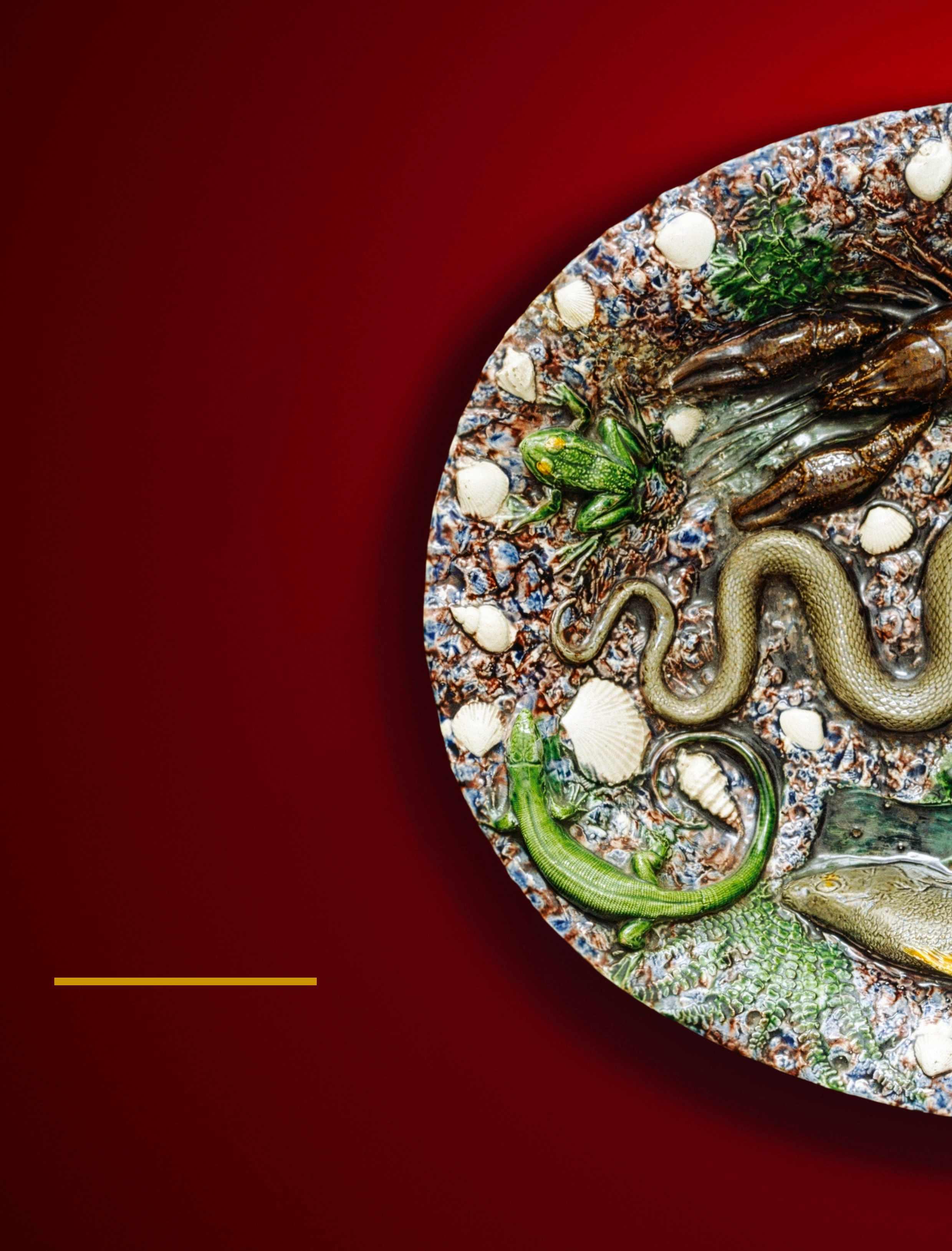
WORDS OLIVIA FRYMAN
This highly decorative dish (c.1570) is attributed to the 16th-century French potter Bernard Palissy. It is an example of his rustiques figulines, a decorative style achieved by casting shapes of plants and animals in moulds taken from real-life examples. In the 16th century this dish would have been owned by someone with wealth and a taste for the curiosities of the natural world. Palissy’s talent led to his appointment, in around 1565, as ‘inventor of rustic pottery’ to France’s King Charles IX and the Queen Mother, Catherine de Medici, for whom Palissy built a pottery grotto in the garden of the Tuileries Palace in Paris. He enjoyed great success until, after three decades of royal favour, Palissy was imprisoned during the French Wars of Religion and died soon afterwards. Today, this dish forms part of the Wernher Collection at Ranger’s House in London. The collection of more than 700 works was amassed by Sir Julius Wernher (1850–1912), who was fascinated by objects that he called ‘splendidly ugly’ – pieces that combined incredible craftsmanship with unusual subject matter.
See the Wernher Collection
To find out more about the collection and to plan a visit to Ranger’s House, go to www.english-heritage.org.uk/rangershouse
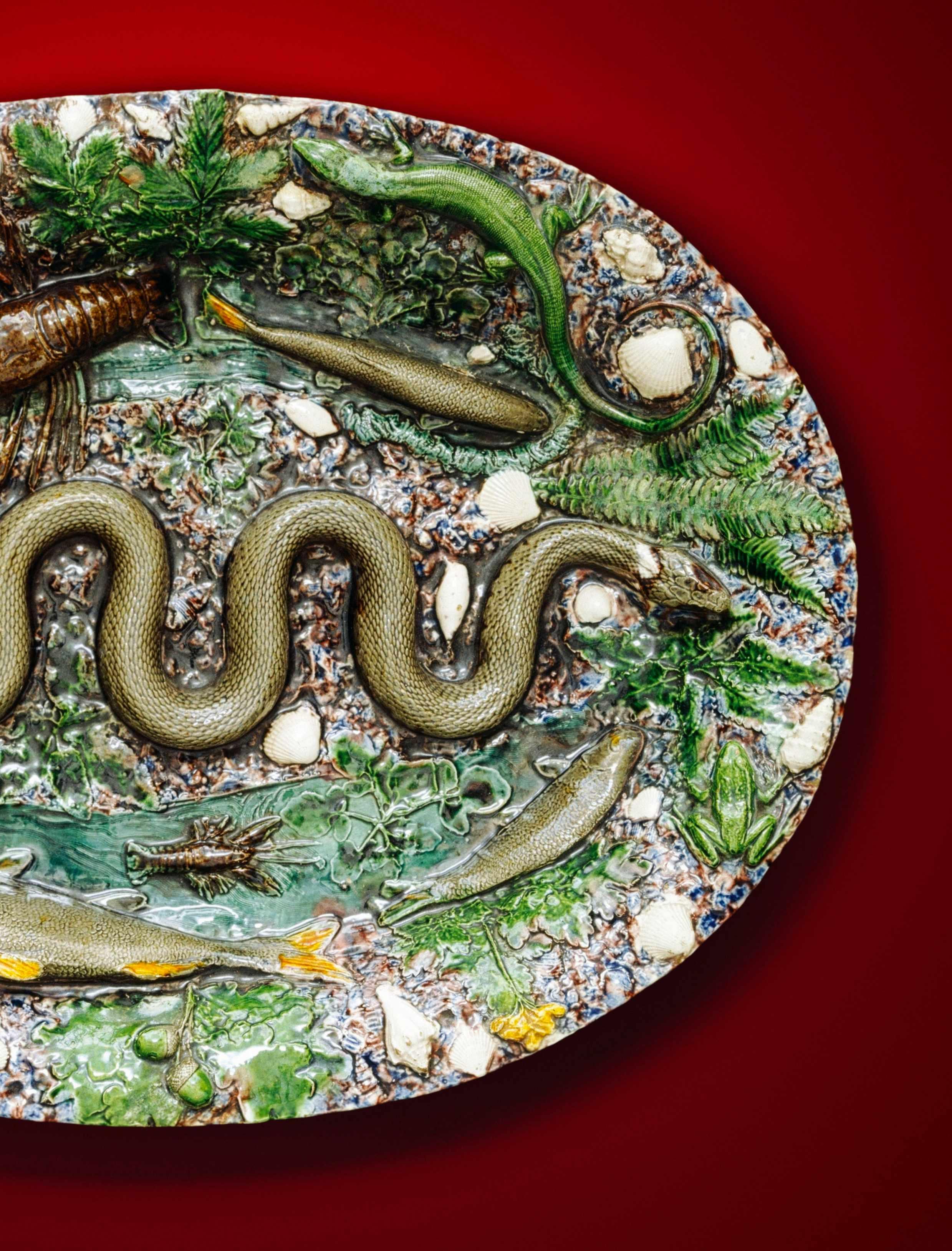
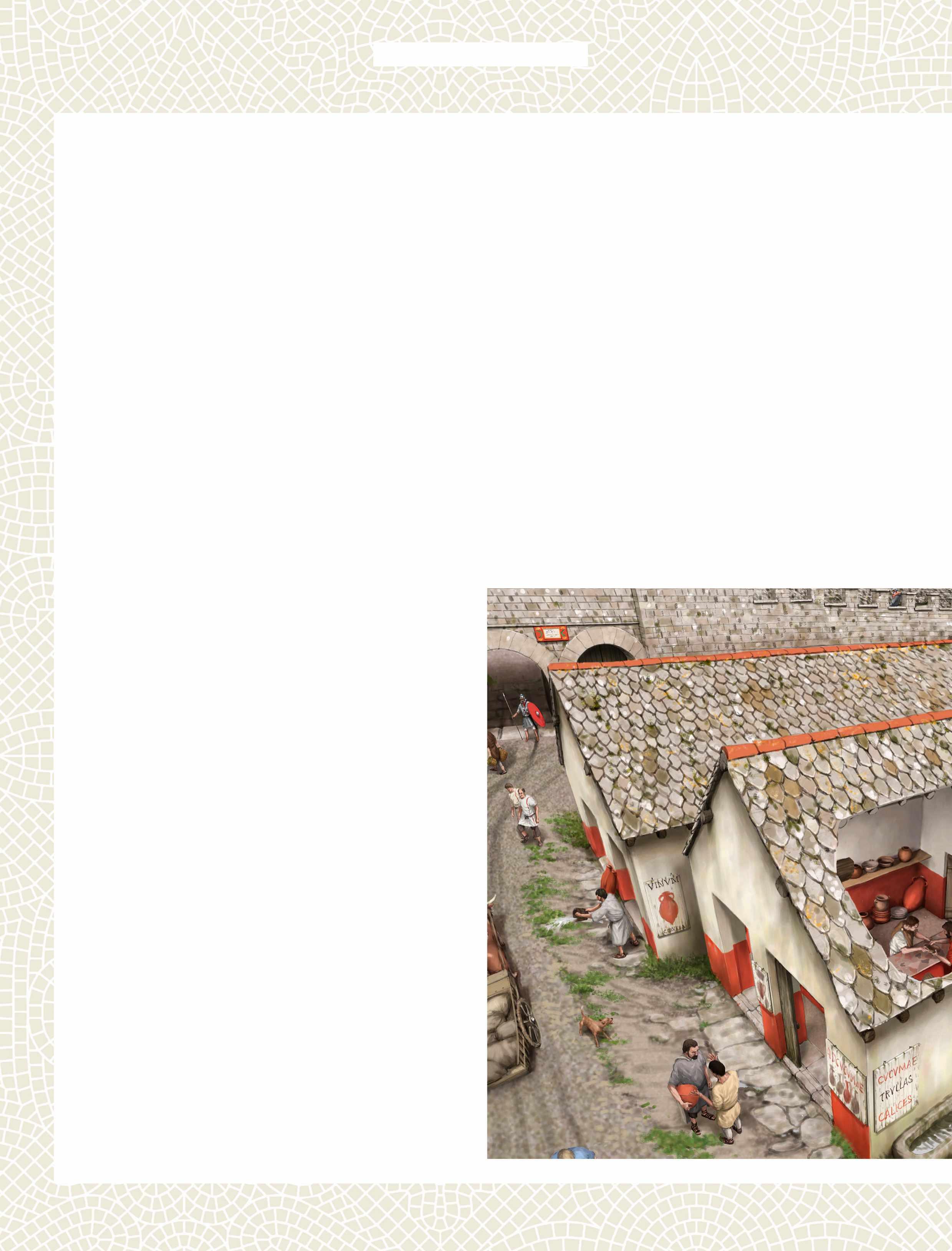
If the 1900th anniversary of Hadrian’s Wall has inspired you to learn more about life in Roman occupied Britain, here are five key sites to visit that each tell a different aspect of the story
Hadrian’s Wall was built to protect the north-western frontier against raiding and to control movement in and out of Roman Britain. Housesteads was one of 16 large military bases constructed along it. Today, its spectacular remains – the most complete example of a Roman fort in Britain – evoke the lifestyles of the 800 soldiers who served here and called it home. Groups of eight ordinary soldiers lived together in two small rooms within the fort’s barracks and sat next to each other in the large communal toilet. The soldiers were auxiliaries, recruited from German-speaking tribes from Tongres in modern-day Belgium. In return for 25 years’ service, they would receive full Roman citizenship. While army life could be dangerous, the soldiers were well paid and looked-after, with communal baths to ensure hygiene and relaxation, and a hospital for the sick. The commanding officer or prefect, however, was a man of the elite ‘equestrian’ class, who lived in a large house within the fort with his family. The house had heated rooms, an opulent dining room and a private courtyard. With slaves to look after the family, life here would have been as luxurious for the family as in comparable houses in towns across the empire. www.english-heritage.org.uk/housesteads
Lullingstone Roman Villa, Kent
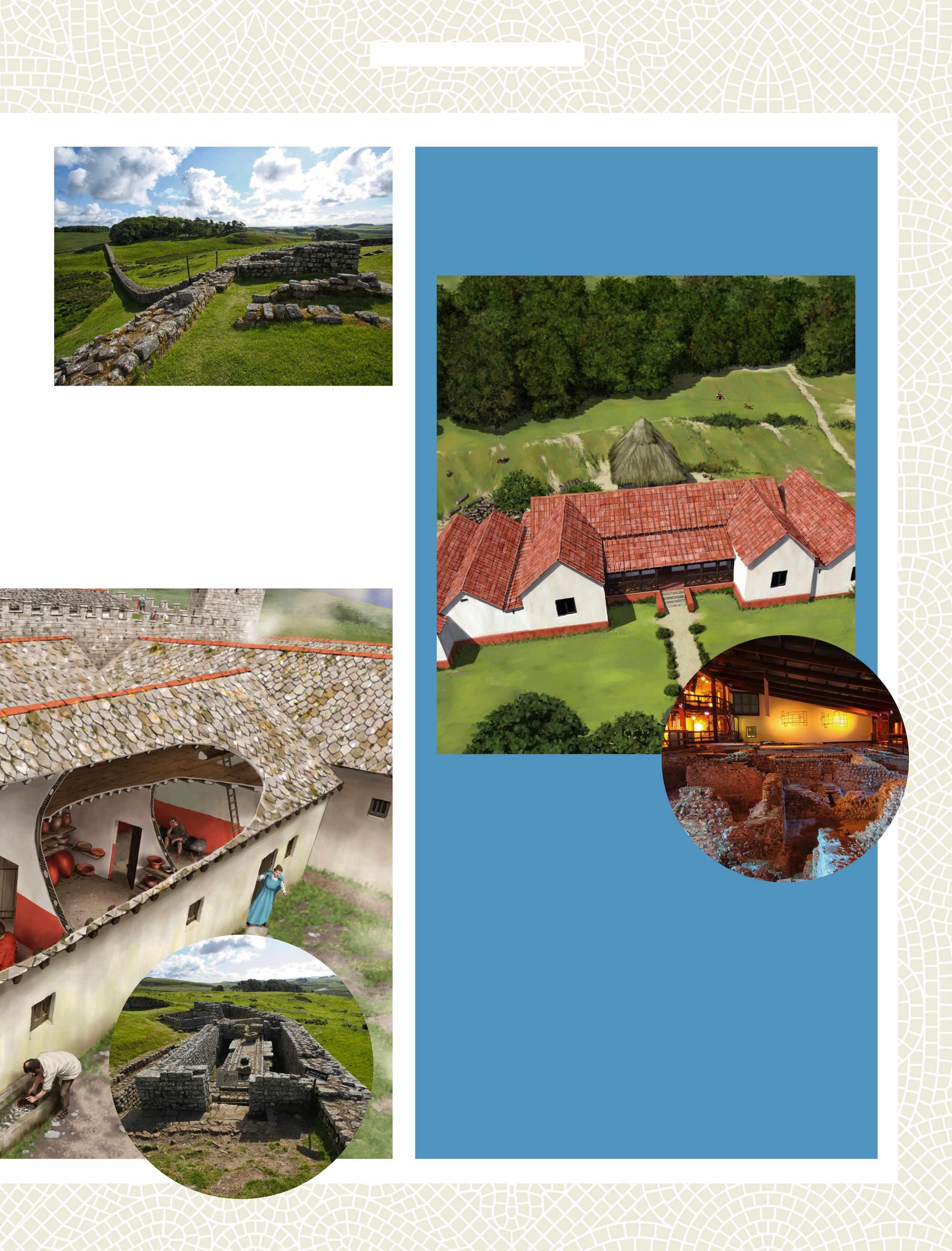
‘While army life could be dangerous, the soldiers were well paid and looked after’
Lullingstone Roman Villa shows how Roman-style living spread throughout Britannia. It was owned by a wealthy and powerful official, perhaps even the governor of Britain himself. Like villas across the empire, it was built so the family could live in style, with underfloor heating and a private bathing suite, featuring hot and cold baths. But it was also designed to impress guests with lavishly decorated reception rooms. When the villa reached its peak of size and opulence in the mid-4th century, its dining room featured spectacular mosaics, depicting scenes from Roman mythology. It also had its own room used for religious ceremonies, thought to be dedicated to the veneration of water nymphs. In the late 4th century Christianity became the official religion of the Roman state and the villa’s private temple was replaced by a large house-church. It was adorned with rare, figurative wall paintings of the household at worship. www.english-heritage.org.uk/lullingstone
Founded in around AD 90, the city of Viroconium (Wroxeter) covered around 180 acres, making it the fourth largest town in Roman Britain – and a little larger than Pompeii. The land once belonged to the tribe of the Cornovii, who were now ruled by the Romans from the city. Under Roman rule, goods from across the empire were imported into the city and around 32,000 artefacts have been found. Excavations have also uncovered a public baths complex, built for the citizens to keep clean, meet up with friends, have their hair cut, play games and more. Across the street, a bustling forum hosted a market selling imported goods and local produce. Its basilica acted as a town hall and law court. Beyond the centre, there were many homes, including dozens of complex town houses with courtyards – a recreation of which can be visited today. For the inhabitants of Cornoviorum, life would have been similar to other large towns across the Britain and the wider empire. www.english-heritage.org.uk/wroxeter
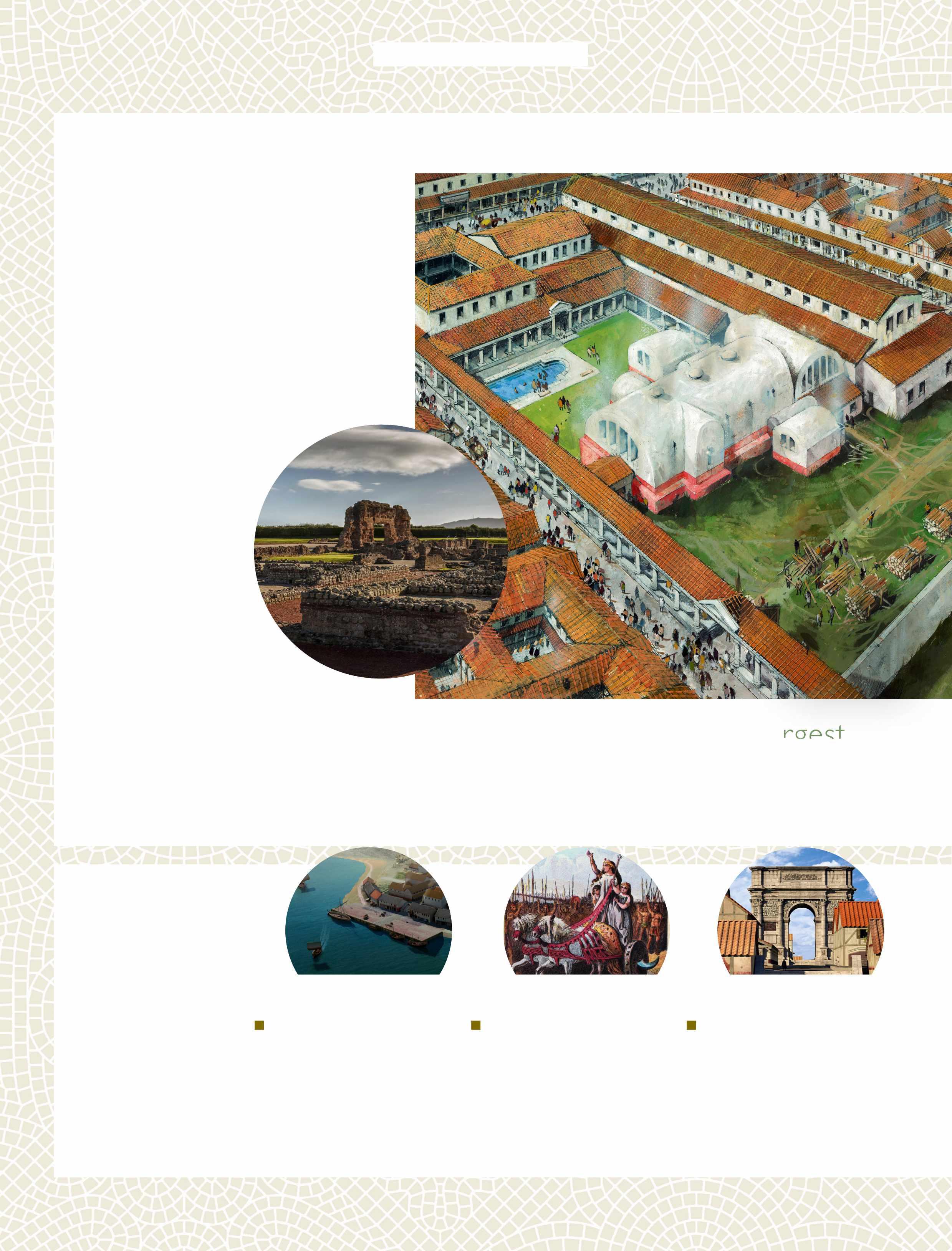
‘Wroxeter was the fourth largest town in Roman Britain – and a little larger than Pompeii’
Seven key moments in the history of Roman Britain
AD 43
Emperor Claudius orders 40,000 soldiers to invade Britain. At least part of the invasion fleet anchors at Richborough before marching inland.The army defeats the Catuvellauni and secures the south-east of Britain.
AD 60–61
While the Roman army is campaigning in northern Wales, Boudicca leads southern Britain in a rebellion. Her army burns Colchester, St Albans and London to the ground before it is defeated at the battle of Watling Street.
AD 83 or 84
After expanding the province of Britain northwards during a series of major campaigns, the Roman army defeats the Caledonians at Mons Graupius. Some time afterwards, a triumphal arch is built at Richborough.
TBhe Emperor Claudius invaded Britain in AD 43, probably landing at Richborough in Kent, then a small island next to a large natural harbour. Fortifications were built by his army to protect the soldiers and supplies during disembarkation. After developing into a port town that thrived for the next 200 years, the army built a fort at Richborough around AD 285. This was just one of a great network of shore defences. Today, its imposing walls still stand close to their original height of 10 metres. www.english-heritage.org.uk/ richborough
athing using heat and steam was something every Roman did, regardless of social status. An excellent example of a bathhouse with beautifully preserved standing walls can be found at Chesters Roman Fort. This was built for the cavalry garrison, who patrolled Hadrian’s Wall. Bathers changed in a large room with space for exercise, then chose to enter either a hot steamy room with a hot bath and fountain, or else opt for the dry heat of a sudatorium (like a modern sauna). The bathing experience could be finished with an invigorating cold plunge pool. Although hygiene was important, a weekly bath was also an opportunity to socialise with the rest of the garrison and perhaps the people from the local civilian settlement.
www.english-heritage.org.uk/chesters
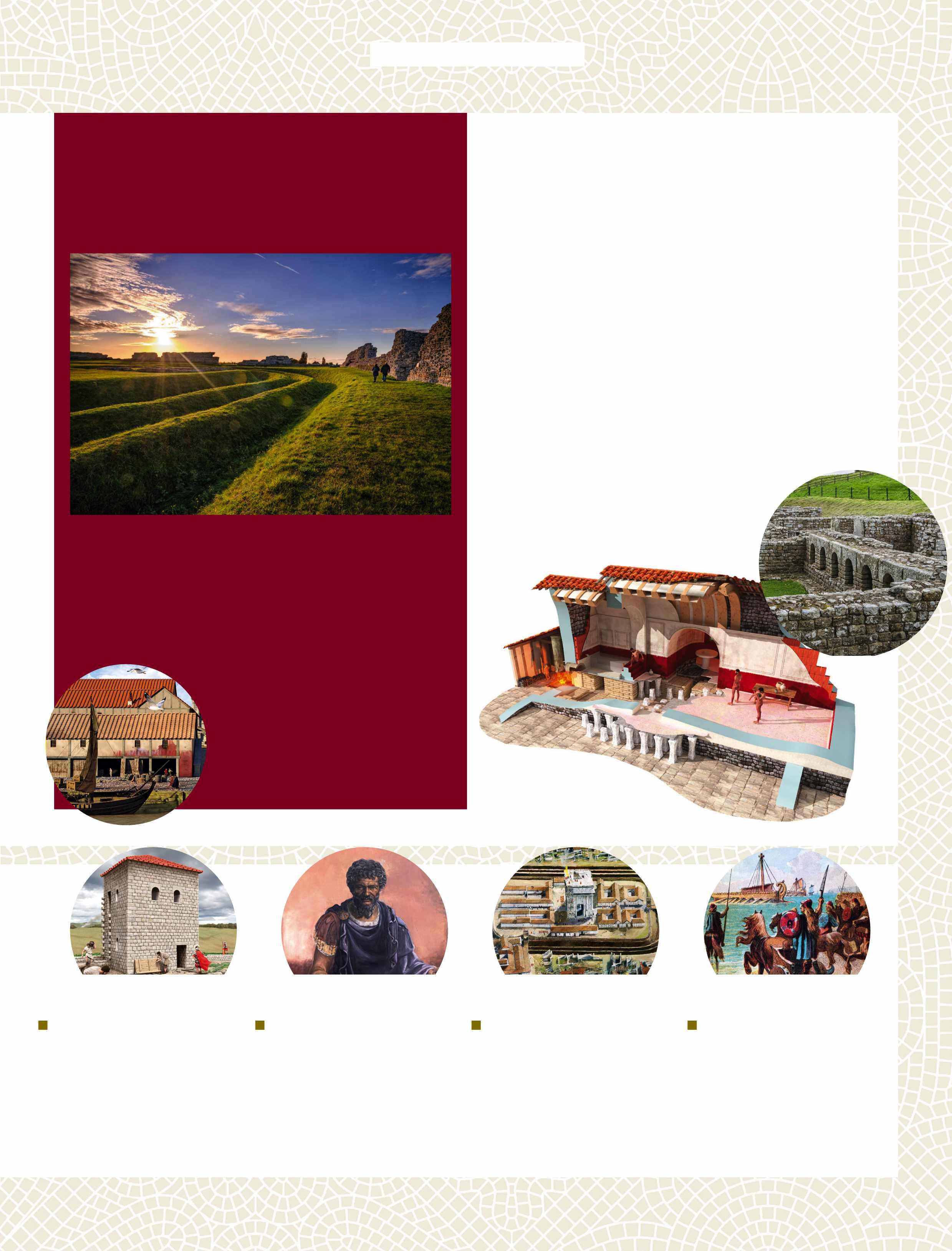
AD 122
The newly crowned Emperor Hadrian arrives in Britain to oversee the construction of a wall that runs 73 miles across the northern frontier.This will secure the border of Roman Britain for more than 250 years.
AD 208
Septimius Severus, the first African emperor, mounts a campaign north of Hadrian’s Wall. He travels with the empress Julia Domna and his court. For three years the Roman Empire is governed from York.
AD 285
A large stone fort is built at Richborough to replace the heart of the port. By the 4th century, around a dozen shore forts had been constructed to form a chain protecting Britain’s coastline from raiders.
AD 410
Repeated attempts to usurp the empire by generals based in Britain drains the diocese of troops. Amid the chaos of civil war and external threats to the safety of the empire, Rome’s rule in Britain ends.

14 NIGHTS FROM £2,899 ‡
Flights, 11 days car hire, 3★+ to 5★ hotels, Tadoussac Whale Watch Cruise, Old Québec City Walking Tour and 12 meals
Discover historical towns, breathtaking views and wonderful wildlife on this grand introduction to Québec, including a stay within 2,500 hectares of untouched nature at a remote yet accessible lakeside resort.
• Montréal • Tremblant National Park
• Saguenay Fjord region • Québec City CLASSIC MONTRÉAL &
7 NIGHTS FROM £1,199 #
Flights, 4★ to 5★ hotels, Old Québec City Walking Tour, Old Montréal Walking Tour and rail journey from Québec City to Montréal
The cities of Québec are for lovers of art, culture and music, both boasting great dining scenes and a real sense of ’joie de vivre'. Fully embracing each and every season, there’s always an ideal time to visit.
• Rue St Catherine • Citadelle de Québec
• Petit Champlain • Explore the many boutique shops, galleries and eateries in quaint Québec and picturesque Montréal
“Truly





Are you looking for a holiday where you can truly immerse yourself in new adventures and experiences? Then look no further. Stretching from the Rocky Mountains to the Pacific Ocean, Western Canada’s stunning provinces of Alberta and British Columbia are waiting for you.
Alberta is the province for people who want the road less travelled. Home to the Canadian Rockies, known for their towering mountains and stunning turquoise lakes, it also boasts no fewer than five national parks. You’ll find epic scenery, abundant wildlife and charming towns with welcoming locals. The
Rockies are home to one of the world’s most iconic rail journeys – the Rocky Mountaineer. This renowned railway showcases the scenery of Western Canada, taking in jagged mountaintops as well as shimmering lakes.
Alberta is also the ideal winter destination with seasonal holidays that make the most of the snowy weather. Go skiing or snowshoeing in Banff and Lake Louise, skate across the frozen Emerald Lake or, for something truly different, drive through the Icefields Parkway and explore the Athabasca Glacier. Travel
further west and you’ll find British Columbia – a unique reminder that you belong in the wild. If it’s big mountain landscapes you’re after, British Columbia is where you’ll find them. The grand scale of the province’s mountains is punctuated by the impossibly vibrant colours of glacial-fed lakes and the sounds of crashing waterfalls.
Home to approximately a quarter of the world’s remaining temperate rainforest and a coast that spans more than 15,000 miles, British Columbia supports a range of wildlife, including bears, moose, caribou, whales and eagles. You may even be lucky enough to catch a glimpse of the elusive spirit bear – a rare black bear with a white coat.
Trailfinders also uses many properties and tour companies that are owned by Indigenous peoples to both support Indigenous culture and offer extensive, authentic Indigenous experiences. Environmental sustainability and land stewardship are central to the Indigenous philosophy and way of life, and supporting Indigenous-owned businesses and experiences is a way to help sustain cultural legacies.
You couldn’t book with a better tour operator. Trailfinders is the UK’s number one tour operator to Canada, offering unbeatable value paired with exceptional service.
As a pioneer of tailor-made travel, Trailfinders believes there’s no substitute for bespoke service. Between them, its travel consultants have travelled to over 96% of the world’s countries, making the advice they offer second to none. Let them curate your ultimate Western Canadian experience today.


To find out more about holidays to Western Canada and to speak to a consultant about your tailor-made trip, visit www.trailfinders.com/ westerncanada
Give a gift that lasts all year round – from just £53*
History never stands still. And that’s what makes an English Heritage membership the perfect Christmas gift.
One membership unlocks over 400 magical places, 6,000 years of history and endless memories.
This Christmas, treat someone special to the gift of time with an entire year of ever-changing adventure.


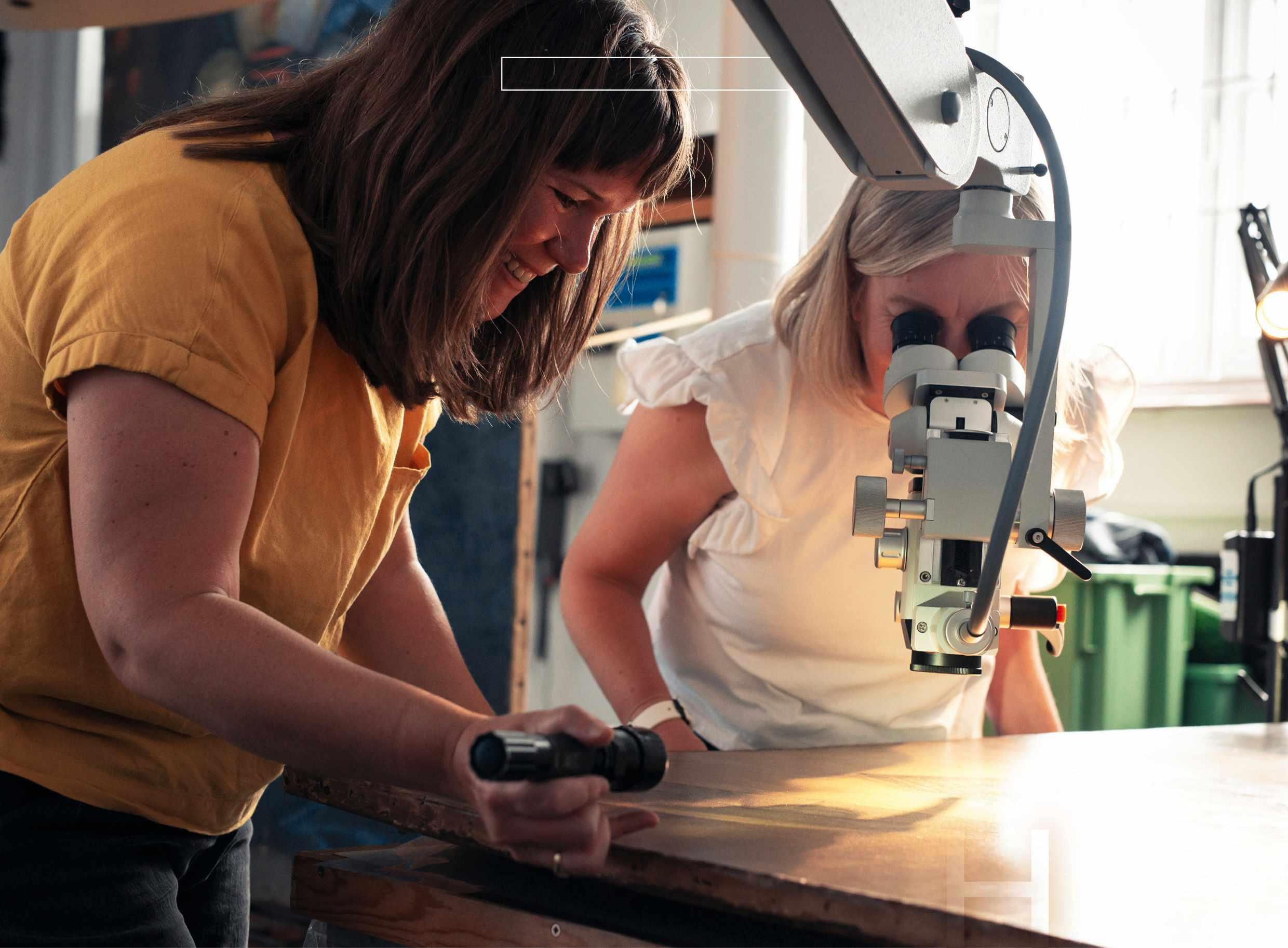
Easel-painting conservator Alice
Tate-Harte and senior collections conservator
Rachel Turnbull
A century after our paintings conservation studio was first established, we headed inside to discover its story and what goes into maintaining and protecting the collection of 1,500 artworks across the country
WORDS
JO
CAIRD PHOTOGRAPHS FRANCESCA JONES
Senior collections conservator
Rachel Turnbull wheeled a pair of ultraviolet lights into position, handed me some protective glasses and flicked a switch. Bathed in blue light, the layer of old varnish that covers Diana Cecil, 1st Countess of Elgin – a painting by Cornelius Johnson (1593–1661) from the esteemed collection at Kenwood in London – jumped out at us, bright against the area of the painting
that’s already been carefully cleaned. It’s like a magic trick.
Looking more closely, the UV light revealed other secrets: damage to the work, areas of historic restoration, and details that had become obscured over the nearly four centuries since Johnson painted this portrait. The best bit? Johnson’s initials and the date he completed this work, 1634, tucked away in a fold of dark drapery, practically impossible to see in normal light.
‘People did know that it was signed but it’s been lost in the last few years,’ said Turnbull, excitedly. She had invited me to take a look around the conservation studio as 2022 marks the centenary of the setting up of the first ever dedicated, governmentemployed team of artist-restorers tasked with repairing, cleaning and conserving the paintings in the various national collections. There had been museum restoration departments before this point, but they relied on private external
The studio in Regent’s Park, 1968.The trolley is still in use in one of English Heritage’s stores today
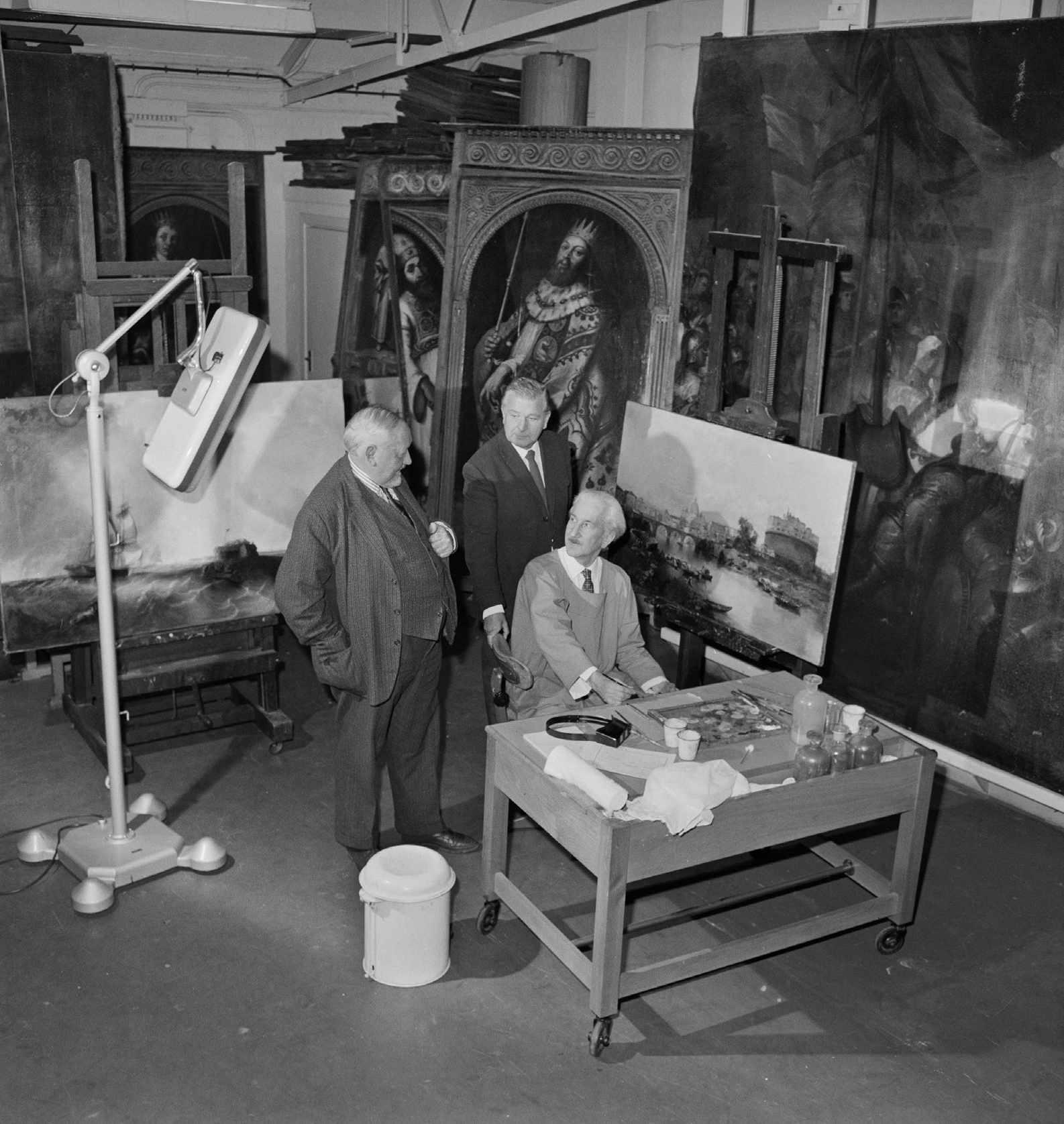
‘It was estimated that, between 1925 and the Second World War, the team had restored 40,000 square feet of paintings’
workshops. It was only in 1922 that the government’s director of works in charge of royal palaces, the Houses of Parliament, public and historic buildings and ancient monuments began the process of bringing these roles in-house.
The restoration of murals by Frederic Leighton at the Victoria and Albert Museum was a sort of pilot project for a new, more scientific approach, with staff rigorously testing out different treatment techniques to establish the safest and most effective ways of working. A century later, Turnbull and her colleagues, easelpainting conservator Alice Tate-Harte and wall-painting conservator Sophie Stewart, are guided by those same principles as they go about their task of caring for the approximately 1,500 paintings in English Heritage’s collection.
It’s not just the principles that have stood the test of time. ‘There’s a lot of traditional methodology that is still quite sound,’ said Turnbull, at least when it comes to easel paintings. From removing yellowing varnish with swabs and solvents to filling tiny losses and revarnishing, Turnbull and Tate-Harte work in more or less the same way that their forebears would have done. Look around the conservation studio today and you’ll even spot some of the same stools, easels and trolleys used by the team of artists fondly referred to as the ‘men in tweed suits’.
That’s not to say that the current team is stuck in the past. By looking at a painting or a paint sample under UV light, using state-of-the-art infrared imaging, microscopy or X-rays, conservators can learn myriad details about the condition of a work of art. Such tools are also revealing of how an artist worked, their methods
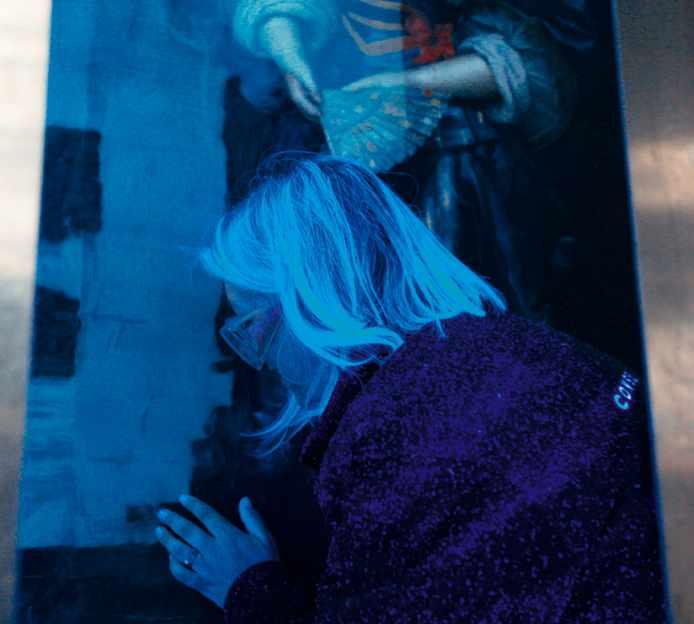
Above Conservators can learn more about a painting’s condition by looking at it under ultraviolet light
and materials, allowing conservators to work together with curators and art historians to gain a better understanding of a painting in its historical context.
Such investigation wasn’t necessarily of much interest to the artist-restorers of yesteryear. ‘They were focused on a painting’s surface and aesthetics,’ said Tate-Harte. ‘When they were doing their restoration they would quite happily repaint things. We just don’t do that.’
It’s important not to judge the efforts of those early restorers too harshly though, she added. ‘They did a great job with the resources that they had and the understanding that they had, and they got through an awful lot of paintings.’
Between 1925 and the outbreak of the Second World War, James Jack, the head of what was by then known as the Artists’ Section, estimated that his six-strong team had restored some 40,000 square feet of paintings in public ownership.
LISTEN AND LEARN
Discover more about the work of our paintings conservation team in episode 99 of the English Heritage podcast soundcloud.com/ englishheritage
Among them were the William Kent murals on the King’s Staircase at Kensington Palace and the 14th-century wall paintings in the Chapter House at Westminster Abbey. A report on these in The Times on 6 April 1929 commented on ‘how astonishingly brilliant some of the pigments become’.
Three of the notable paintings that the team have recently conserved at the studio
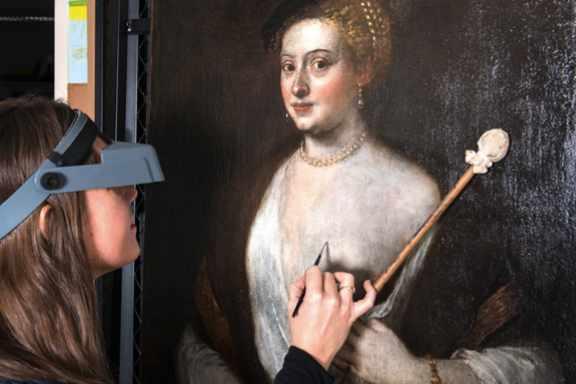
Titian’s Mistress (1550–60)
An X-ray during conservation work revealed another painting beneath, which resembles a copy of a work by Titian.This suggests the painting came from Titian’s studio, not a follower of the artist, as previously thought.
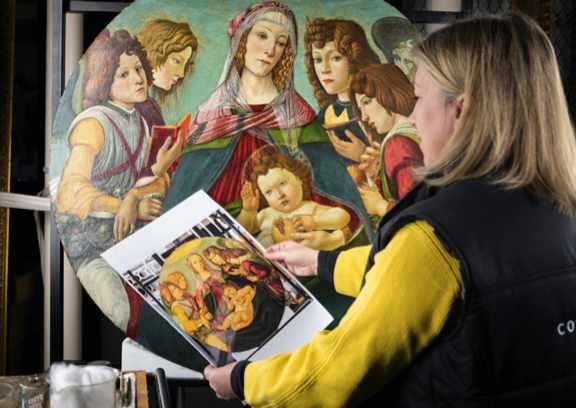
Madonna of the Pomegranate (c.1487)
This painting was thought to be an imitation of Botticelli’s masterpiece. But analysis conducted during cleaning of the painting confirmed that it came from the studio of the artist himself.

The Guitar Player (c.1672) by Johannes Vermeer
Sometimes it’s the conservator’s job simply to clean a work and revarnish it. In this case, said Alice Tate-Harte, ‘It was lovely to spend some time with that really special painting.’
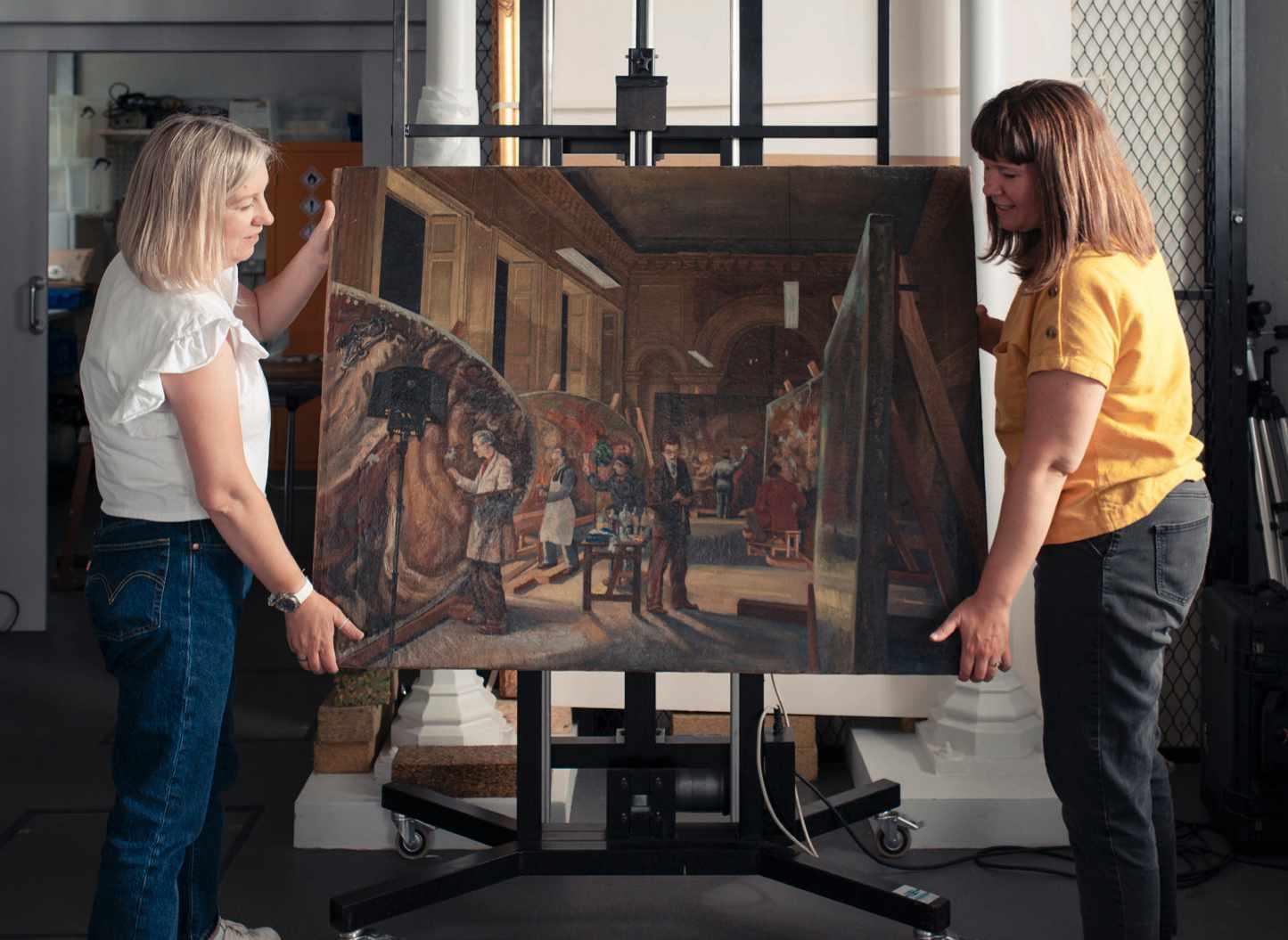
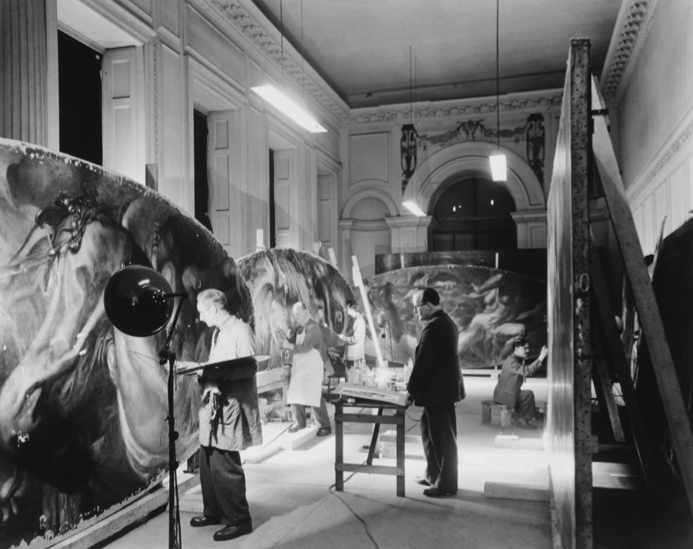
By the 1950s, the Artists’ Section had in its remit some 3,000 paintings – works cared for today by English Heritage as well as Historic Royal Palaces, the Houses of Parliament, the National Trust, the Government Art Collection, Westminster Abbey, the V&A and the Royal Collection. The artists worked fast, either in situ in the case of paintings such as the Thornhill Ceiling at the Old Royal Naval College in Greenwich, or in makeshift studios such as the one set up in the Orangery at Kensington Palace to work on the Rubens ceiling murals from Banqueting House. Working conditions were far from ideal, as is clear from photographs taken at the time of the artists standing atop towering scaffolds with no safety equipment, using carcinogenic solvents. The Kensington Palace studio wasn’t much better, with one artist writing in March 1947 that there was no heating because they had
The restoration of Rubens ceiling murals being carried out at Kensington Palace in 1949
A painting based on the photo on the left is on display in the conservation studio
run out of fuel and that the studio was ‘extremely damp and dangerous to health’. Jack complained in a letter to a manager the following year that ‘it is impossible to imagine any Civil Servant at Lambeth Bridge House writing an important report with rain pouring through the roof’.
The situation improved after the move, in 1951, to a former army rehabilitation centre in Regent’s Park. This large, spacious studio would be home to the conservators until 2004, through the separation of the collections element of the Department of Education and Ministry of Works into several government agencies in the 1980s, including English Heritage, which was formed in 1983.
The Regent’s Park period also coincided with the development, in the 1960s and ’70s, of scientific research and conservation education that led to the further professionalisation of the discipline. While the early artist-restorers would most likely have attended art school, paintings conservators today complete training that encompasses art history, fine art and the natural sciences.
See it for yourself
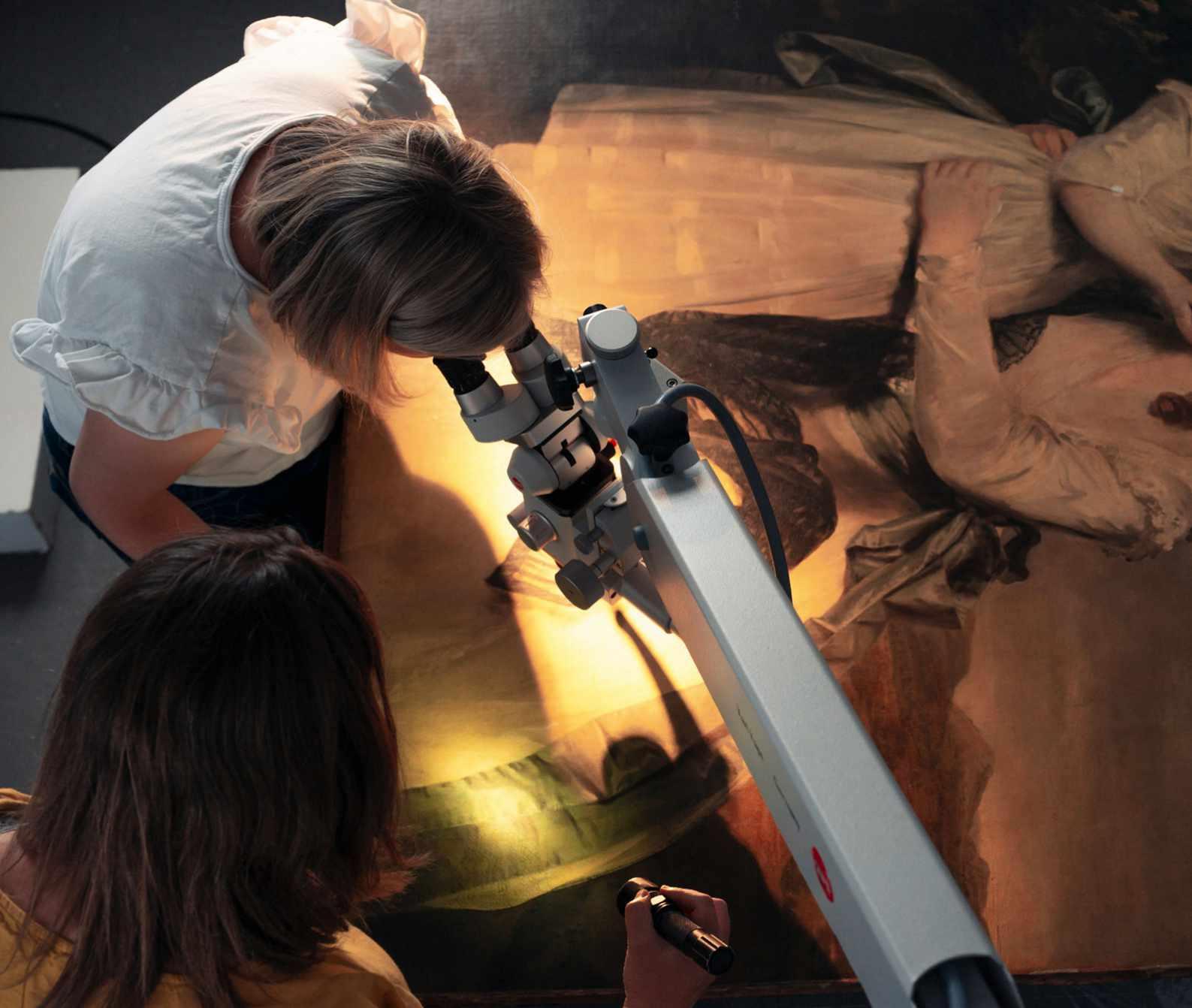
In 2005 the team moved to the current studio – a bright and modern two-level space whose cast-iron spiral staircase and decorative pillars nod to its former life as an architectural salvage workshop. From a studio staff of around 10 in Regent’s Park, it’s now just Turnbull and Tate-Harte, with Stewart working on wall paintings around the English Heritage portfolio.
But, as Turnbull explained, ‘the resource is still there’ in the form of a much larger team of 30 preventive conservators, scientists and collections care assistants around the country. It’s their job to mitigate risks to the collection, from environmental threats such as humidity, light and temperature, to pests, dust and even disaster preparedness.
In the frame
‘Part of our treatment is quite preventive as well,’ Tate-Harte added, pointing towards a carved gilt frame whose back she and Turnbull have built up in order to be able to create a safe environment within which its painting can sit. Where once works were nailed back into frames whose coarse edges would scratch the vulnerable surface of the paintings, now they are carefully cushioned on all sides and protected from accidental damage with a hard back board.
In the case of paintings located in properties whose atmospheric conditions are difficult to control – draughty castles such as Bolsover in Derbyshire, for

for retouching damage is made with synthetic resins, which don’t deteriorate with age
range of different types of traditional brushes are still used in conservation today
example – a frame can be designed to create a microclimate for a painting, complete with its own computerised environmental monitoring.
Such technical interventions, as well as an auditing system that prioritises paintings for treatment based on nearly four decades of record keeping, mean that although the team treat far fewer works per year than the ‘men in tweed suits’ once did, the paintings in English Heritage’s care are in better hands than ever before.
‘You are objective in what you choose to treat and why,’ explained Turnbull. ‘We pick the things in the worst condition first.’ In the course of treating the paintings in the collection, the conservators are
Left Microscopy is used to examine the surface of paintings before making treatment decisions
Below Tiny samples are compared to magnified images to better understand the materials used
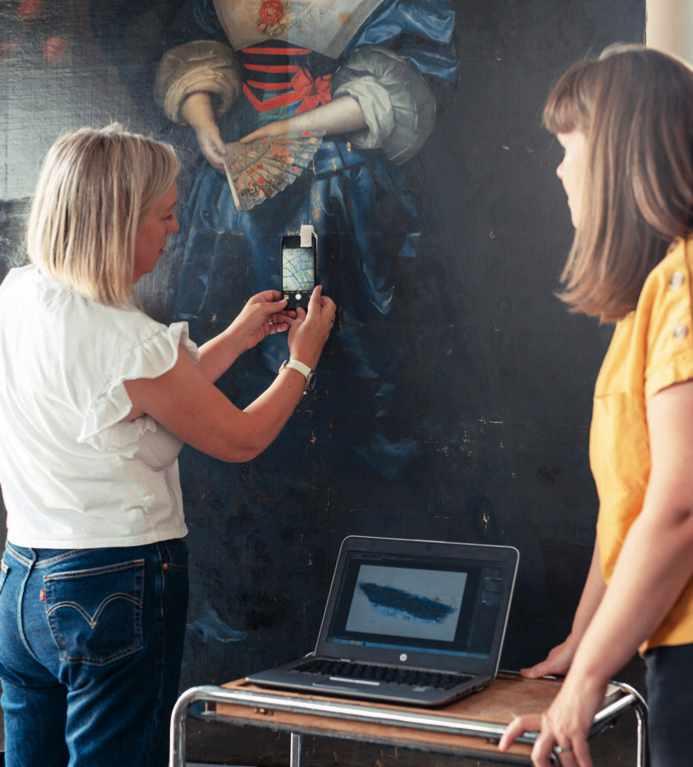

engaged in a dialogue through history – not just with the original artists but with the restorers who’ve worked on those paintings in the past. Turnbull and Tate-Harte are aware of their own roles in the lives of these works – taking notes and photos of their interventions to help future conservators is a key part of the process. As Tate-Harte put it, ‘Our legacy is to ensure the ongoing preservation of the collection for the next 100 years.’
Discover more
To find out more about the conservation of our paintings, go to our website at www. english-heritage.org.uk/paintings-conservation





We’ve curated a selection of the latest Members’ Rewards for you, with the full range available at www.english-heritage.org.uk/rewards

Côte at Home’s boxes are inspired by classic French cuisine and are the easy way to dine on goumet food in the comfort of your own home. Enjoy next-day delivery then freeze or store for up to three days.
Whether you’re looking for a tasty brunch or a celebratory night in, here are our favourite three boxes – all of which go very well with your free bottle of crémant!
● Lobster Date Night Menu
– start with either French onion soup or scallops, finish with chocolate mousse or crème caramel, and in between feast on two whole native lobster thermidor, served with frites.
● French Country Breakfast Box–a delicious selection of hot and cold food including Cumberland sausages, boudin noir, smoked salmon and, of course, croissants.
● Steak Date Night Menu – you’ll enjoy hand-cut ribeye, chateaubriand or fillet, with either garlic butter, roquefort butter or a peppercorn sauce. For starter and dessert choices, see left.


Receiving flowers is always a delight, so spread some joy to a loved one with a Bloom & Wild delivery.You’ll find letterbox flowers, bouquets, houseplants and more.
The Bloom & Wild experts reveal how to get the most from your flowers.

● Find the right light –fresh flowers like natural light but not direct sunlight or heat sources (such as radiators).
● Keep away from fruit – the gases released from fresh fruit can make your flowers wilt really quickly.
● Retrim your stems by 1cm and refresh your vase water every three days. Bloom & Wild also includes two packets of food with orders so you can ensure your flowers don’t go hungry.


GREAT SAVINGS ON A CASE OF WINE

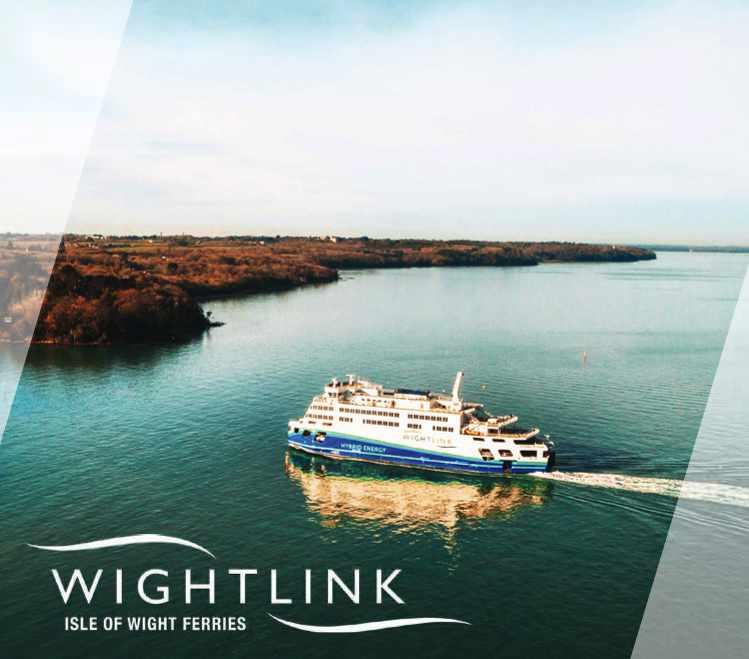
TRAVEL TO THE ISLE OF WIGHT FOR LESS

Wightlink can get you to the magical Isle of Wight in just 22 minutes, so you can enjoy its stunning beaches, quaint towns and beautiful countryside.
Whether you shop online or in-store, choose from more than 250 brands at Cotswold Outdoor for all of your adventure needs.
With this offer fromVirgin Wines you get 12 delicious wines (red, white or mixed), a free bottle of fizz and free delivery, all for just £65.88. GET A 15% DISCOUNT ON OUTDOOR GEAR


CRUISE THE WORLD WITH SAGA FOR LESS

A TWO-NIGHT STAY ON THE ISLE OF WIGHT PLUS FERRY TRAVEL
Set sail with Hurtigruten Expeditions and let this adventure travel company show you some of the world’s most beautiful and pristine regions.
Saga’s boutique cruises are designed for those who deserve a bit of luxury. Book on to one of its river or ocean cruises and discover lesser-known destinations. ENJOY 5% OFF THE HOLIDAY OF A LIFETIME
Wightlink loves that the Isle of Wight gives you the feeling of getting away from it all, without having to go that far. And Wightlink can get you there in no time. This award-winning ferry company is giving you the chance to win a two-night stay for two people at a Warner Leisure Hotel on the Isle of Wight, including breakfast and evening meal, plus return ferry crossing with Wightlink. Choose from either Bembridge Coast Hotel or Norton Grange Coastal Village, using them as a base for exploring the island, which is also packed with English Heritage sites.
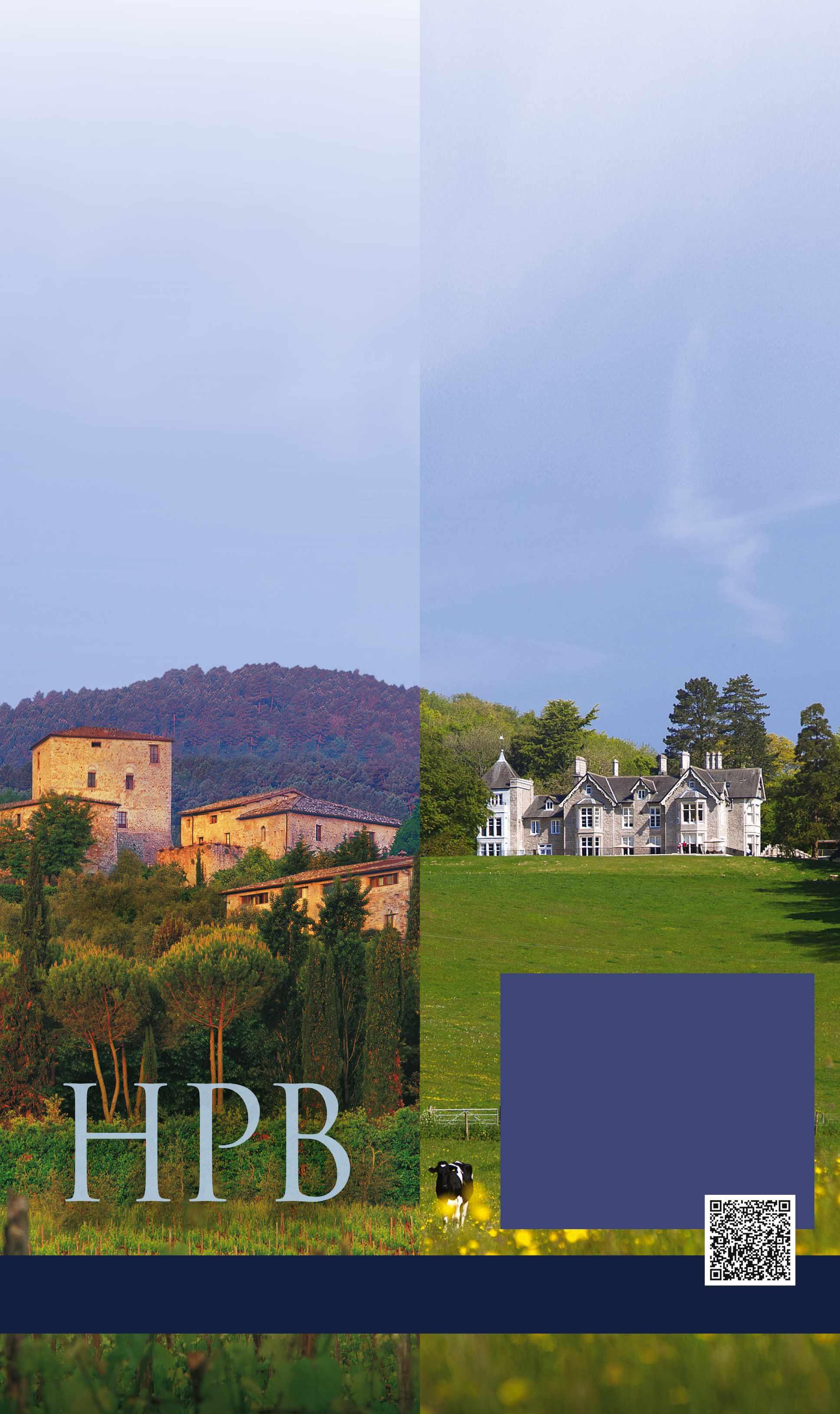
With the Holiday Property Bond you can choose from over 1,400 of the finest villas, cottages and apartments in the UK and Europe. You can holiday in them throughout your lifetime and then pass the benefits on to your children or grandchildren. For an initial investment of as little as £5,000 you can look forward to truly memorable holidays in beautiful places, with top quality accommodation. The booking power of your investment is fixed and protected for the long term so, no matter what happens to inflation, you will enjoy the same level of holiday entitlement year after year after year.


You’re one step away from a lifetime of wonderful holidays
If you would like to know more about HPB, please read ‘Exclusive holidays for life’ (on the right) and then request your free Information Pack today.
Call FREE on 0800 66 54 90 Visit
An initial payment from £5,000 and a quarterly fee of just over £30 (that is around £130 a year), linked to RPI, gives you access to all HPB’s holiday homes. For each HPB holiday, you will pay a no-profit user charge covering only property running and maintenance costs and use of on-site facilities. The charge is level throughout the year –there are no high season premiums. For a studio the charge averages about £315 a week, for a 2-bedroom property around £480 a week. Larger properties are also available.After an initial charge of 25% your money is invested in a fund of holiday properties and securities.The fund itself meets annual charges of 2.5%.Your investment return is purely in the form of holidays and, as with most investments, your capital is at risk.You can surrender your investment to the company after two years or more (subject to deferral in exceptional circumstances) but you will get back less than you invested because of the charges referred to above, as well as other overheads and changes in the value of the fund’s properties and securities.
This advertisement is issued by HPB Management Limited (HPBM) registered at HPB House, Newmarket, Suffolk, CB8 8EH. HPBM is authorised and regulated by the Financial Conduct Authority and is the main UK agent and the property manager for HPB, issued by HPB Assurance Limited (HPBA) registered in the Isle of Man and authorised by the Financial Services Authority there. The Trustee of HPB is Equiom (Isle of Man) Limited, registered at Jubilee Buildings, Victoria Street, Douglas, Isle of Man, IM1 2SH. The Securities Manager is Stanhope Capital LLP of 35 Portman Square, London, W1H 6LR. No medical examination required. HPB is available exclusively through HPBM. HPBM promotes only HPB and is not independent of HPBA. Holders of policies issued by HPBA will not be protected by the Financial Services Compensation Scheme if the company becomes unable to meet its liabilities to them but Isle of Man compensation arrangements apply to new policies. We are now unable to accept new applications from residents of EU countries and some other jurisdictions. HPB Assurance Limited reserves the right to decline an application at its sole discretion. *Special bonus offer: The extra 5% bonus is available for English Heritage members. Other terms and conditions apply. Visit www.hpb.co.uk/heritage.
Your guide to this season’s English Heritage events at our sparkling Enchanted events
Join us as we light up the night this winter d

PLUS Battle of Hastings, Spooky Woodland Walks, Audience With Father Christmas and your exclusive Members’ Events
We have all sorts of seasonal treats for you this autumn and winter as part of our events programme, from spooky Halloween adventures to the chance to experience our epic Battle of Hastings re-enactment
As we move into the cooler autumn and winter months, we still have plenty of seasonal events and activities to get you out and about. With everything from Halloween events to falconry displays, there’s something to capture everyone’s imaginations. If there’s one event not to miss though, it’s our spectacular Battle of Hastings re-enactment, taking place at 1066 Battle of Hastings Abbey and Battlefield in East Sussex. Thrill as more than 300 re-enactors clash in an epic retelling of that fateful day in 1066.
For something slightly more sedate, our expert falconers will give you the chance for an up-close look at traditional falconry birds in flight at Victorian
Falconry at Witley Court and Gardens in Worcestershire, and Gothic Falconry at Framlingham Castle in Suffolk. At Apsley House in London you can play detective at a special Murder Mystery event or join us for a Regency Evening to experience how the Duke of Wellington entertained his guests. Come along to one of our Illuminated Abbey events at Whitby Abbey in North Yorkshire or Battle Abbey to see these medieval sites in a whole new light. Or to get in the festive spirit, don’t miss Christmas at Kenwood in London, with its sensational light trail – Members can save 25% when booking (use the code MEMBERS25). For complete listings and further details about all our events, go to www.english-heritage.org.uk/events.
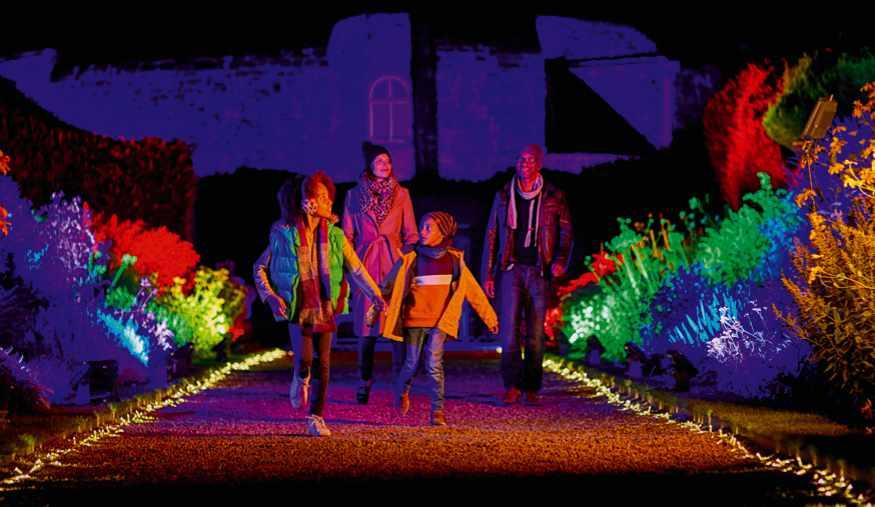
Experience the past in a spectacular new light this December. Explore our grounds and gardens at Audley End House and Gardens in Essex, Eltham Palace and Gardens in London, or Walmer Castle and Gardens in Kent, and discover a magical world of illumination, sound and colour. Warm up with a glass of mulled wine, toast a marshmallow under the night sky or do a spot of Christmas shopping.
There’s loads to keep the kids entertained at our sites across the country this Halloween. Our Spooky Woodland Walks are specially designed for children aged 5 to 12 and give you the chance to join our ghost-hunting storytellers on a family-friendly walk. Meanwhile, our Halloween Quests this year have a special Beano-themed twist, and also include a fun fancy dress competition. For older (and braver) Members aged 16-plus, our Ghost Tours are a must. Our storytellers will guide you on a journey through the past with tales of ghosts, supernatural sightings and horrors from history.

It wouldn’t be Christmas without having the chance to meet Santa Claus. At our Audience With Father Christmas events, young Members can enjoy seasonal tales in a festive setting, and will receive a small present from Father Christmas, who will be dropping in at sites that include Kenwood in London and Kenilworth Castle and Elizabethan Garden in Warwickshire. Other festive activities not to miss include a Carol Concert at Bolsover Castle in Derbyshire and Wreath-Making Workshops at Brodsworth Hall and Gardens in South Yorkshire.

Meet our experts and enjoy special access to sites at events that are just for Members.These are just a selection of what’s on offer – for complete listings, go to www.english-heritage.org.uk/members-events. Don’t forget to register for our online lectures, returning this autumn. See www.english-heritage.org.uk/members-lectures for details
LONDON WALKS SERIES WITH NICK COLLINSON
Nov–Feb, 11am–1pm & 2pm–4pm
Nick Collinson leads a series of monthly themed walks around London. Further information and booking details can be found on our website.
Sat 12 Nov Death and Damnation in the Square Mile
Sat 10 Dec The Famous Square Mile
Sat 14 Jan London’s Lost Rivers: The Tyburn
Sat 11 Feb Queer Old Soho
£14 Access: moderate
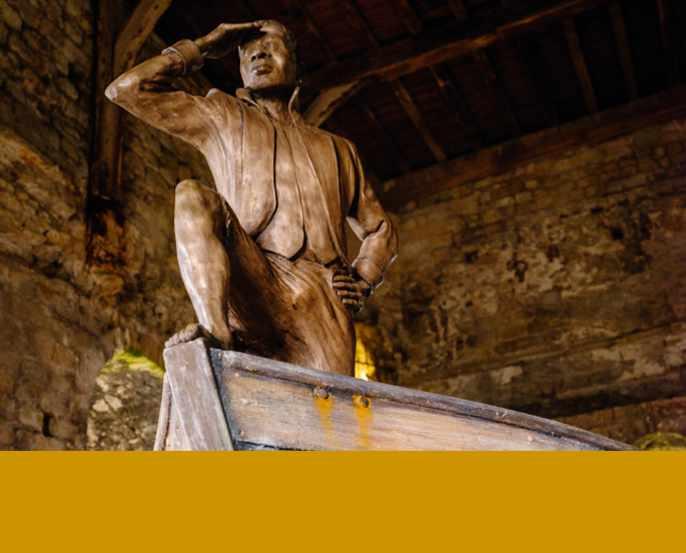
HIDDEN GEMS OF MEDIEVAL EXETER
Fri 3 Mar, 10.30am–2.30pm
Although damaged by bombing and then redeveloped after the Second World War, Exeter has many surviving medieval buildings. This walking tour will explore some of the less well-known remains of medieval Exeter. We will walk on Exeter’s medieval bridge, and retrace the route of a timber-framed medieval building that was pulled up a hill on tracks.
£25 Access: moderate
BEHIND THE SCENES AT TEMPLE CLOUD
Thu 23 Feb, 10.30am–12.45pm
Join us for an exclusive look at the store and find out more about the behind-the-scenes work our curators and conservators do to care for the sites and collections not on display. There will also be an opportunity for hands-on sessions, giving you the chance to see some of the collection objects up close.
Booking for Members’ Events opens at 9am on Mon 10 Oct
BLACK PRISONERS OF WAR AT PORTCHESTER CASTLE
Wed 29 Mar, 12pm–3pm
Join Abigail Coppins and Kate Astbury as they take you on a tour of Portchester Castle while telling you the stories of the Black prisoners of war who were interned there from 1796. Learn how they got there, the harsh conditions they faced and, most importantly, who they were.
Light lunch provided.
£30 Access: moderate
£25 Access: moderate
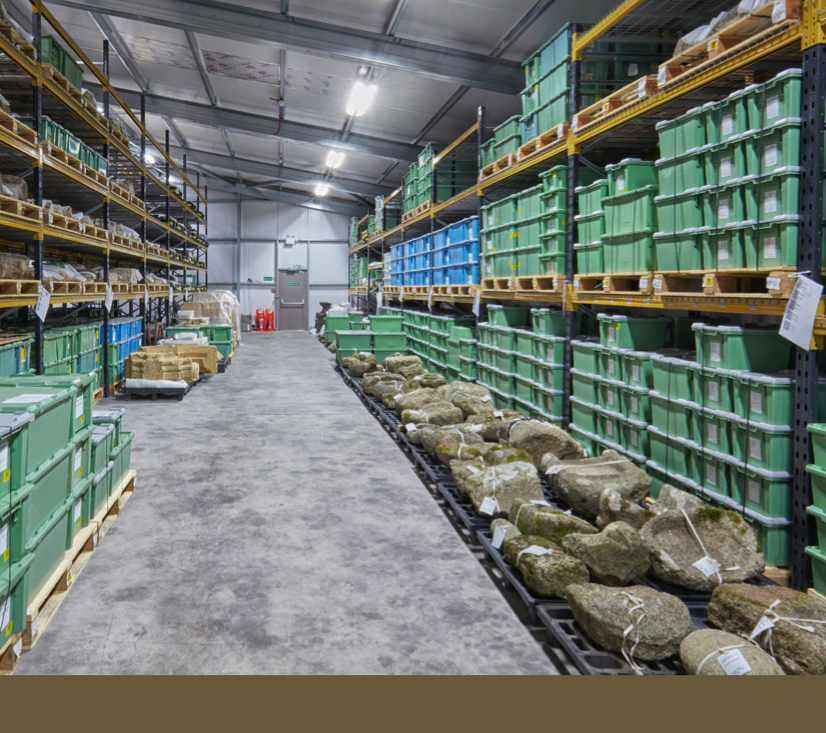
Wrest Park, Bedfordshire
HERITAGE HAWK WALK & FALCONRY
Mon 7 Nov, 9.30am–12pm or 1pm–3.30pm
Experience a thrilling outdoor falconry and hawking session. Fly hawks along the ancient woodland walks then marvel at the speed of falcons as they are flown at close quarters.
£75 Access: moderate
Boscobel House and The Royal Oak, Shropshire
CHRISTMAS CRAFTS AT BOSCOBEL HOUSE AND THE ROYAL OAK
Sun 4 Dec, 10.30am–1.15pm
Enjoy a tour of the grounds to gather some crafting inspiration, before recreating some seasonal makes, from homemade crackers to gilded walnuts.
£15 Access: moderate
Witley Court and Gardens, Worcestershire
HERITAGE HAWK WALK & FALCONRY
Mon 13 Mar, 10am–12.30pm or 1.30pm–4pm
Experience a thrilling falconry and hawking session. Fly hawks along the ancient woodland walks then marvel at the speed of falcons.
£75 Access: moderate
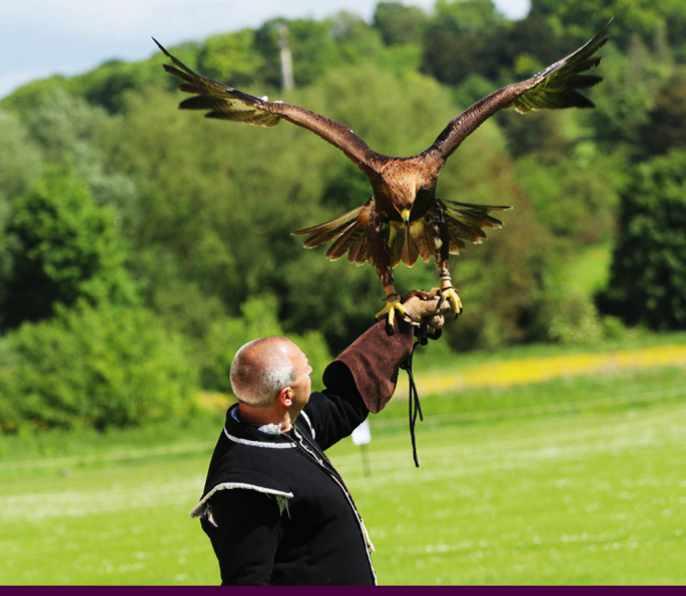
York city centre, North Yorkshire
YORK’S HIDDEN QUEER HISTORY
Sat 12 Nov, 11am–1pm
Historian Kit Heyam leads this walking tour of the city centre. You’ll discover stories of Roman trans women and the origins of the UK’s first ever gay pride march.
£15 Access: moderate
Liverpool city centre, Merseyside
MUCK & MEDICINE: WOMEN OF THE LIVERPOOL DOCKS
Wed 8 Mar, 10.30am–1pm
Join guide John McFerran on a walking tour of Liverpool to celebrate the many great women of the city. Find out about the women who helped transform Liverpool into the city we know today.
£22 Access: moderate

Exhibition Preview: Lindisfarne
Lindisfarne Priory, Northumberland
EXHIBITION PREVIEW: LINDISFARNE PRIORY
Fri 10 Feb, 10am–11.30am
Join us for a preview of the priory’s new museum. Curator Susan Harrison will guide you through the displays, while interpretation manager Ruth Haycock will discuss the interpretation project.
£15 Access: moderate

Explore how ghost stories help us understand medieval monasteries. For details, see www.englishheritage.org.uk/members-events
Roche Abbey, South Yorkshire Sat 1 & Sun 2 Oct
Tours 10.30am (1 Oct), 12pm (2 Oct). Creative writing workshop (at Conisbrough Castle), 1.30pm–3pm (Sat only). Ghost stories session (at Conisbrough Castle), 3.30pm–5pm (Sat only).
Furness Abbey, Cumbria
Sat 8 & Sun 9 Oct
Tours 10.30am (8 Oct), 12pm (9 Oct). Creative writing workshop, 2pm–3.30pm (Sat only). Ghost stories session, 4pm–5.30pm (Sat only).
Byland Abbey, North Yorkshire
Sat 5 & Sun 6 nOv
Tours 11am (5 Nov), 12pm (6 Nov). Creative writing workshop (at Wass village hall), 2pm–3.30pm (Sat only).
Ghost stories session (at Wass village hall), 5pm–6.30pm (Sat only).
Lanercost Priory, Cumbria
Sat 12 & Sat 19 nOv
Tours 11am (both days). Creative writing workshop (at Dacre Hall), 2pm–3.30pm (19 Nov). Ghost stories session (at Birdoswald Roman Fort), 2.30pm–4pm (12 Nov).
Rievaulx Abbey, North Yorkshire
Sat 26 & Sun 27 nOv
Tours 11am (26 Nov), 12pm (27 Nov). Creative writing workshop (at Rievaulx village hall), 2pm–3.30pm (Sat only). Ghost stories session (at Rievaulx village hall), 5pm–6.30pm (Sat only).

Experience the wonders of the British Isles on board Saga’s boutique cruise ships
You don’t have to cross the globe for amazing adventures. Keep things closer to home and bring the stories of the British Isles to life on a Saga cruise, which is available to you with five per cent off.
A Saga cruise could take you to ports in England, Scotland, Wales or Ireland, or even the Orkney Islands, Channel Islands or Isle of Man. These places prove there’s so much to discover on your doorstep, from historic houses and period architecture to national parks and coastal scenery. Visit Portland on the Jurassic Coast to explore miles of sandy
shore and intriguing maritime history, including Portland Castle. Or go to the other end of the country to Kirkwall on the Orkney Islands, renowned for its Neolithic sites and Britain’s most northerly cathedral, St Magnus.
Luxury as standard
Saga’s all-inclusive cruises come complete with a range of perks. These include return chauffeur service to and from the port, and a whole host of little extras on board, such as free 24-hour room service as well as free Wi-Fi. Plus every cabin has its own balcony. Every Saga cruise includes complimentary food and drinks in
‘Discover

its restaurants and bars. You’ll also find a wide of range of classes and activities, plus lectures from guest speakers, theatre productions and recitals. Off-ship you’ll enjoy included excursions in selected ports of call, and then you can relax after your day out in the swimming pool, hot tub or steam room.
You can set sail with peace of mind knowing that travel insurance is included, with up to £5m coronavirus cover, plus additional cancellation cover. Your safety is of the utmost importance, so Saga has been accredited for health and hygiene by Lloyd’s Register. Saga is so confident you’ll love your cruise, you’ll get your money back if you don’t.


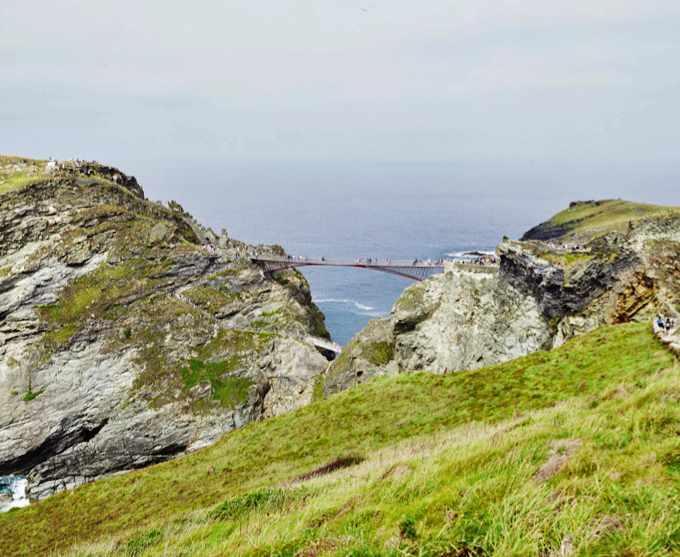
Following a visit to Tintagel Castle in Cornwall, Guy Malkerson decided to use lockdown to write a rock opera inspired by its legends
Iwas born in San Francisco, California, and grew up during the hippie days of peace and love in the 1960s. It was an incredibly creative place. I moved to the UK in 1999. I’ve always been interested in history and it’s one of the reasons I enjoy living in England so much. I’ve been to a lot of English Heritage sites, including Hadrian’s Wall and Richborough Roman Fort. When my daughter and son-in-law came over from the States about 10 years ago, we decided we’d visit Tintagel Castle for the first time. It’s an incredibly atmospheric place with history and myth oozing out of the rocks and walls.
I come from a musical family and I began playing the French horn when I was a teenager. As I got older I abandoned the brass to play guitar and write songs. Years ago, I wrote a spoof of The Who’s rock opera Tommy, so I thought I had some experience in the genre. Being in lockdown gave me the time to embark on a lengthy project like writing a full rock opera.
Tintagel seemed like the perfect setting. I have been interested in the Arthurian legend since childhood, having grown up reading stuff like Howard Pyle’s King Arthur series, which I’d check out from the library. Exploring the story with an Arthurian

Clockwise from top left The two halves of the castle at Tintagel are connected by a footbridge; Guy at Tintagel Castle with Gallos, the statue of an ancient king; according to legend,Tintagel is where King Arthur was conceived
‘I grew up in California checking out Arthurian books from the library’
prequel made sense to me as a rock opera subject. The songs delve into battles, sorcery and lust, leading to the coupling of Uther Pendragon and Igrain at Tintagel – as a result of which King Arthur was conceived. As musical theatre, it sits somewhere between Rocky Horror and Jesus Christ Superstar
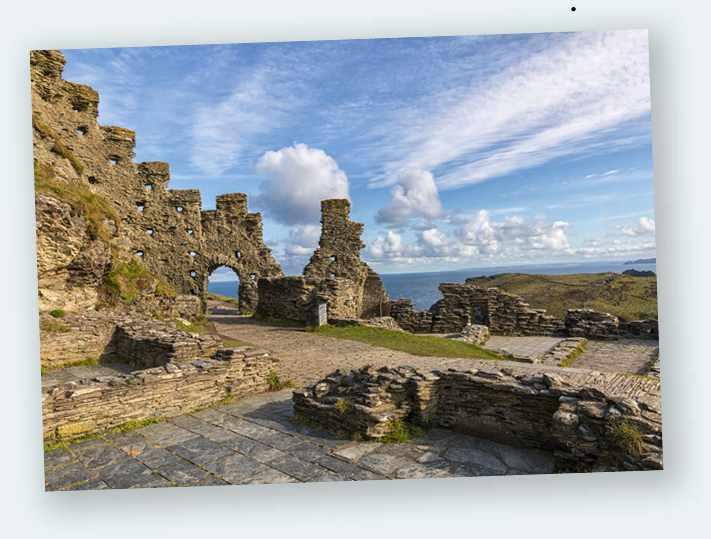
I have been working on it for a couple of years now and have written 18 songs so far I’d like to stage it as a full-blown musical theatre production I have also been working on videos for it, which I’ve been releasing on my YouTube channel (bit.ly/3zzo4Sz). I never thought when I first visited Tintagel that it would lead to me writing a rock opera but it goes to show how much the site can capture your imagination. www.english-heritage.org.uk/tintagel
Test your knowledge of the objects in our collections with this quiz
1 Which of the following are not depicted in the 16th-century painting The Vegetable Seller, which can be seen at Audley End House and Gardens in Essex?
A Hazelnuts
B Strawberries
C Garden peas
2 Which Regency painter created the portrait of the Duke of Wellington that hangs in Apsley House in London?
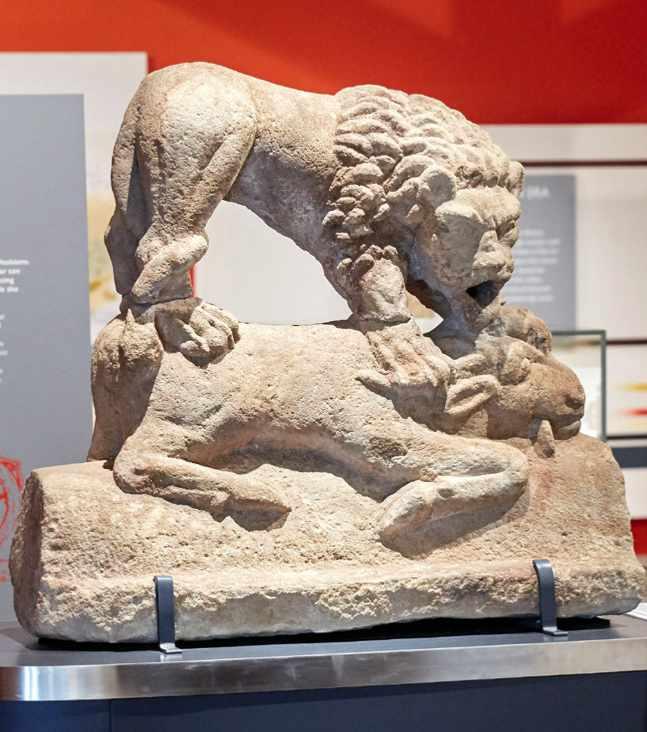
3 This lion sculpture (above) is from which Roman site?
4 At which English Heritage site can you see Portrait of the Artist by Rembrandt van Rijn, said to be the definitive self-portrait of this 17th-century master?
5 What did Mary Thornycroft and Abraham Kent sculpt for Queen Victoria in the 1840s that is on display at Osborne?
6 Who or what is Roaring Meg, and where would you find her?
7 Madonna of the Pomegranate (below) at Ranger’s House in London is a studio copy of Botticelli’s masterpiece. But where can you see the original?

8 This object (below) was found in the outer curtain wall at Norham Castle on the Scottish border. But what is it?
A A pair of sugar tongs
B A dress lifter
C A torture device
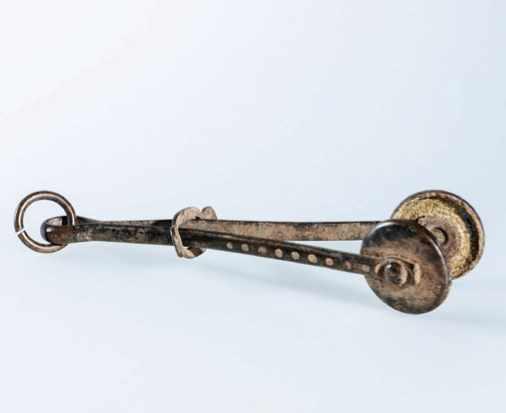
9 Whose boots are on display at Walmer Castle and Gardens?
10 What transformed Hailes Abbey in Gloucestershire into an important pilgrimage site in the 13th century?
11 Brodsworth Hall and Gardens in South Yorkshire has a ‘Haydock’s Horse’. But what would you use it for?
12 On display at Mulcheney Abbey in Somerset is a sculpture of a monk from the 14th century, who’s holding bread in one hand and a container of ale in the other. What was the name given to this container?
13 Wrest Park in Bedfordshire is home to an 18th-century outdoor sculpture of Venus and Adonis by John Cheere. Which English writer wrote a poem of the same name?
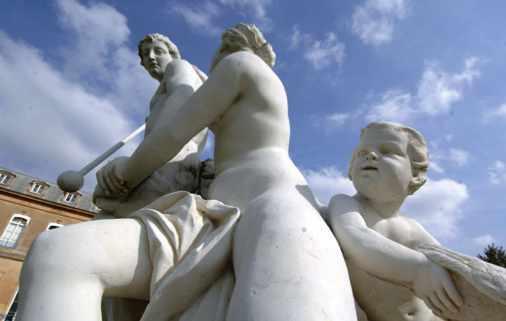
14 Can you unscramble the name of this site, where a Viking raider stone was found?
FRIENDLY PRISON AIR
15 What is unusual about the map surrounding the fireplace in the Map Room at Eltham Palace and Gardens in London?
16 What was the name of the owner of Marble Hill in London, shown in this portrait by Charles Jervas from the 1720s?

Log into the Members’ Area at www.english-heritage.org. uk/quizzes to check your answers
17 In the great hall at Battle Abbey School there is an oil painting depicting the Battle of Hastings. What is the connection between the painting and the former owner of Battle Abbey, Sir Godfrey Webster?
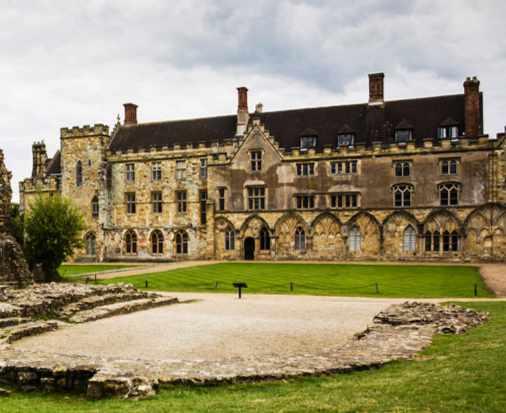
18 In Chiswick House and Gardens in London you’ll find a pair of porphyry vases from the 16th century. But what is porphyry?
19 Which Victorian scientist had a wooden slide installed on the staircase in his house?
20 An arch at Housesteads Roman Fort was probably part of a niche containing a statue or altar to Mars Thincsus. From which country does this war god originate?
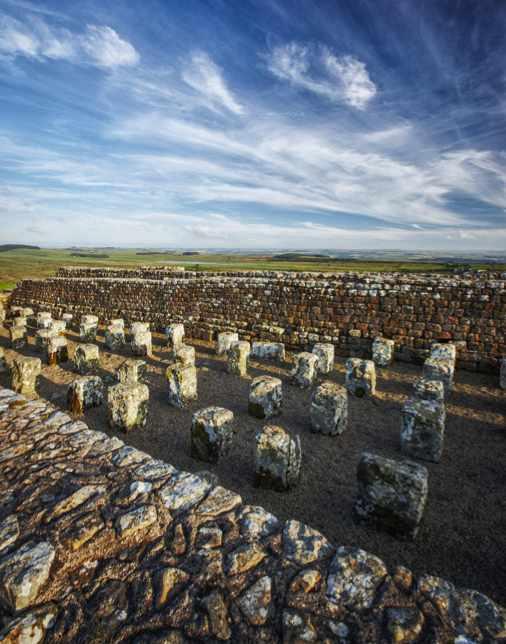
On the centenary of Egyptologist Howard Carter’s discovery of the tomb of Tutankhamen, we look back at the blue plaque that honours his great find
Ice ogi a ince. n rk n Fo he rt
t is a hundred years since the tomb of Tutankhamen was opened, and no archaeological find has quite matched it since. By 1922, Howard Carter had been working in Egypt for more than 30 years. For the eleventh child of an impecunious artist, he’d done well – he was appointed inspector of antiquities of Upper Egypt at the age of just 26 – but he had shifted a lot of earth without finding much, in what he called ‘comparatively unproductive labour’.
By agreeing to put in his own money, Carter managed to persuade his patron, the 5th Earl of Carnarvon, to fund one more season of exploratory digging in the Valley of Kings, where he had been working since 1917 with little to show.
On 4 November 1922 a single step was uncovered, and found to be the head of a downward staircase to the entrance of a tomb A 12-year old Egyptian waterboy, Hussein Abdel-Rassoul, is claimed to


‘Carter spent 10 years recording the 5,000 artefac s found in the tomb’
have made the initial find. Whatever the truth of this, it is undeniable that the contribution of Egyptians to the discovery has been undervalued.
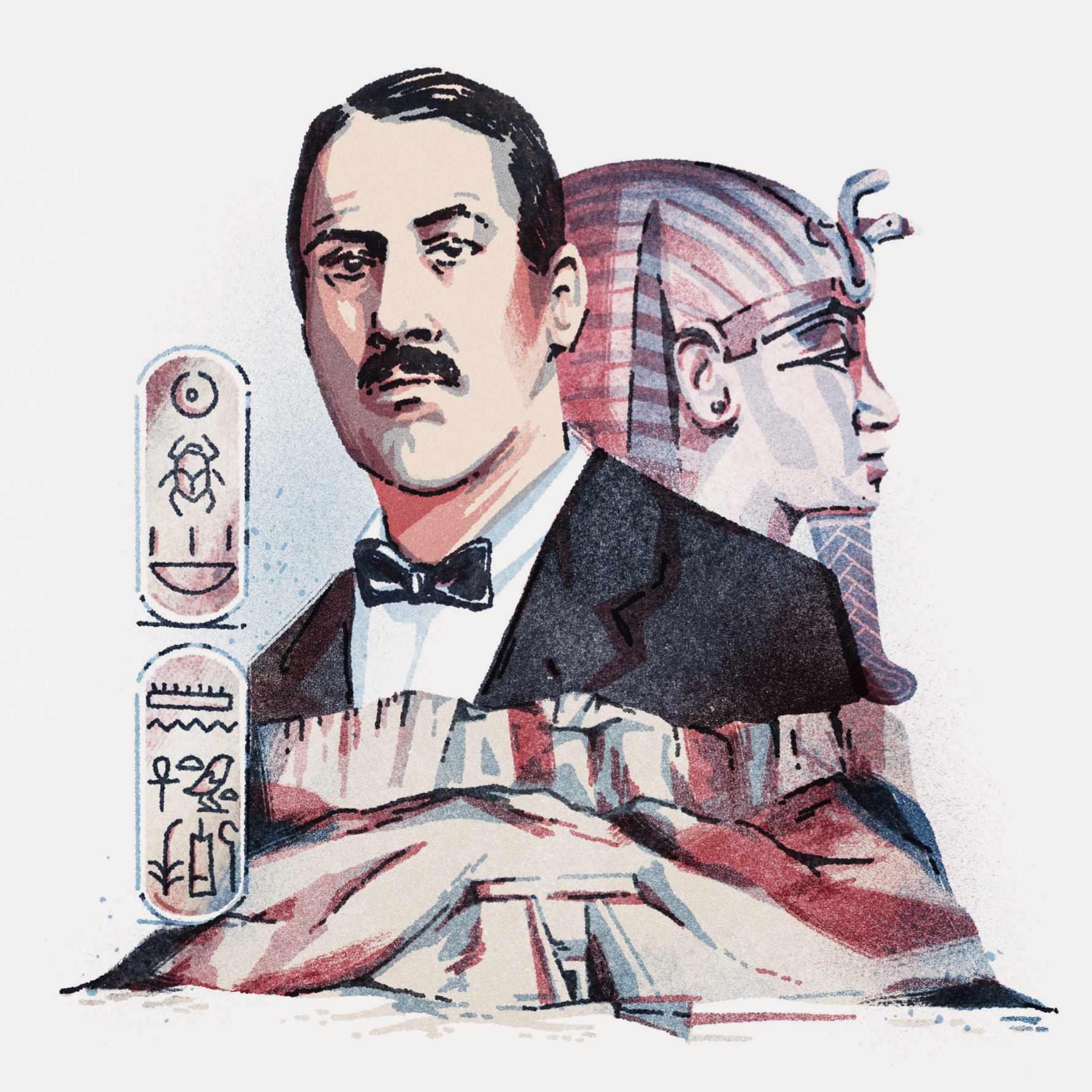

To deter would-be robbers, Carter had the staircase reburied and telegrammed his patron, Lord Carnarvon, who travelled to Luxor for the opening of the tomb. The ‘day of days’, on which they broke into the sealed enclosure, was 26 November.
‘Can you see anything?’ Carnarvon asked. ‘Yes, wonderful things,’ replied Carter. ‘Everywhere the glint of gold.’ Initial reports in The Times credited
Carnarvon, with Carter condescendingly referred to as his ‘trusty helper’. But it was Carter who spent the next 10 years meticulously recording the artefacts – more than 5,000 of them – found in Tutankhamun’s tomb.
Howard Carter was a prickly man, which partly accounts for his relative isolation in later life – one biographer has termed him a ‘sad success’ – and his failure to gain any major British honour. One exception to this is the blue plaque that can be found at his former London base at 19 Collingham Gardens, Kensington.
wit C r des ndin y Here, Carter kept a self-contained flat in the house of his brother Samuel. Fraternal relations were uneven, and a breach occurred in 1930 after Howard accused Samuel of breaking into his drinks cabinet. Given their fractious relationship, it was fortunate that Carter’s work took him away from home fairly often.
Discover more
To learn more about our London blue plaques scheme and stories, go to www.english-heritage.org.uk/blue-plaques
Cheryl and Conor IN-STORE EXPERTS
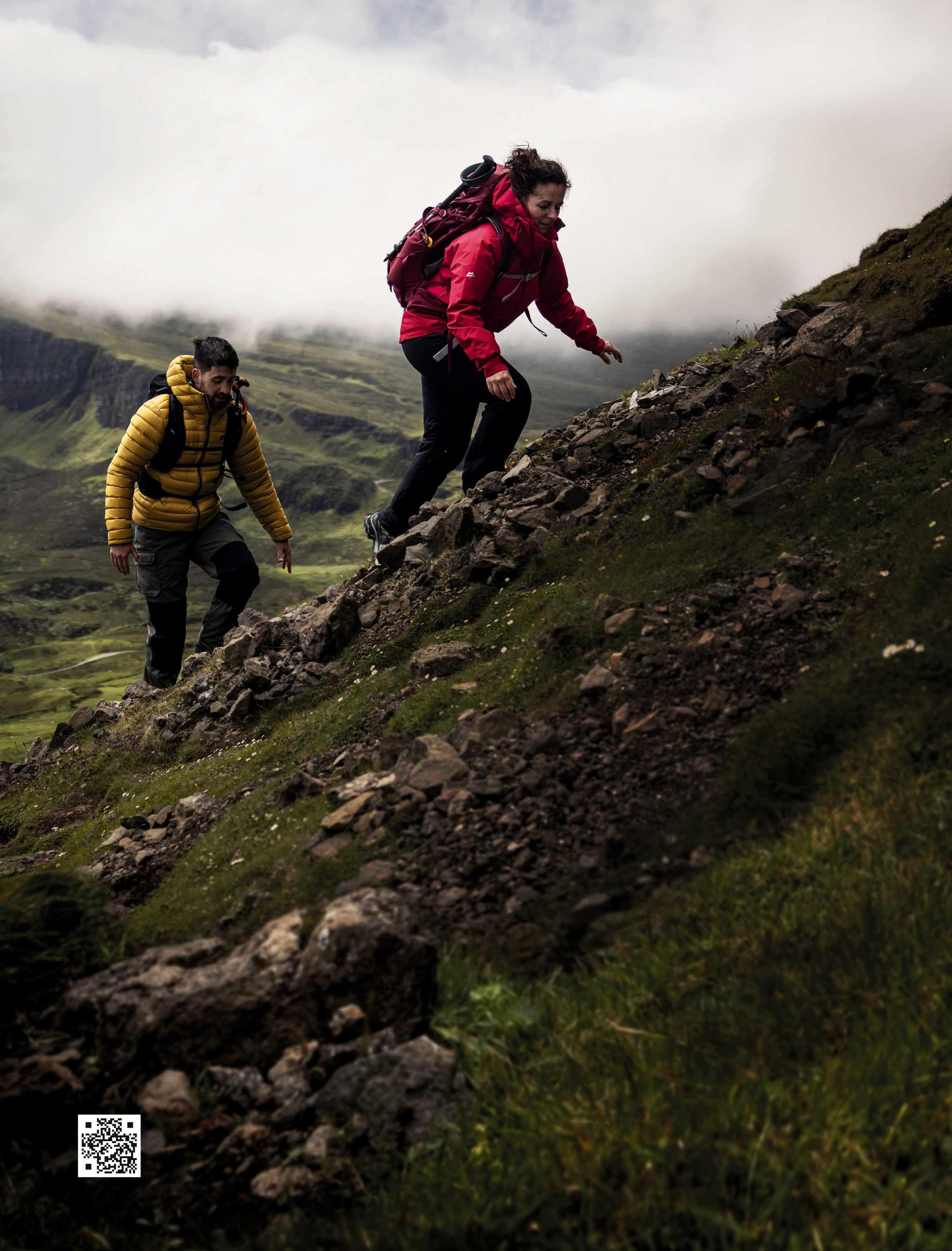
We’re here to help you make the right choice, so you can keep on exploring the places you love, this season and beyond. Buy right, buy better and buy to last with our expert advice, unrivalled services and the best brands looking to make a difference. Because for us, lasting adventure means just that.
15% discount in-store and online for English Heritage members with code AF-EH-N9 Expires: 31.03.2023. T&Cs online.
Make the right choice with our experts.
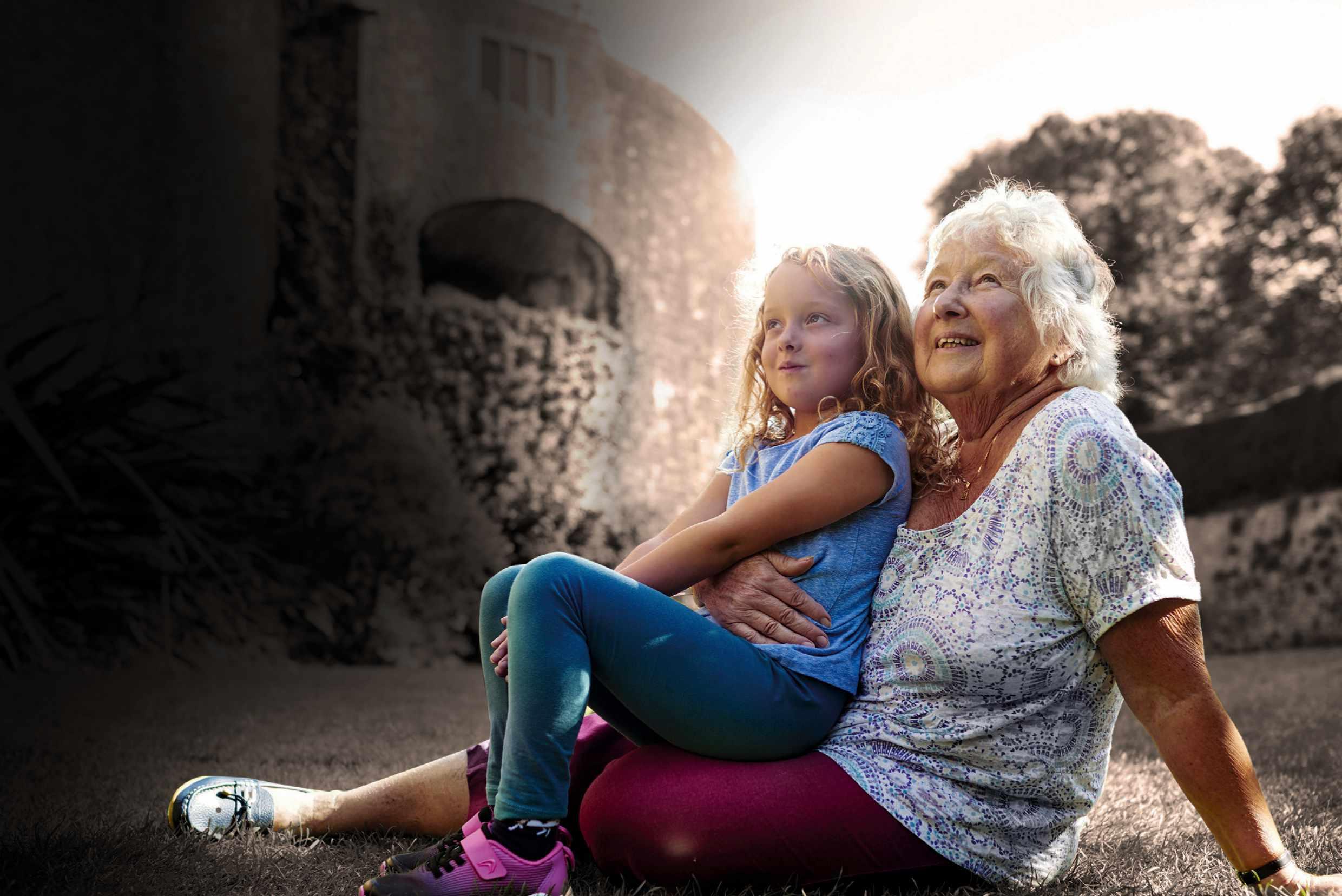
We inherited our incredible story from those who came before us, now it falls to us to protect it. By leaving a gift in your will you can ensure that story can be told forever.
To help you make a difference, we’re offering a free will writing service with makeawillonline.co.uk
It’s a straightforward process, and each will is checked by a fully qualified solicitor.
To find out more, visit www.english-heritage.org.uk/legacies
THANK YOU FOR YOUR SUPPORT




